- Skip to main content
- Skip to primary sidebar


Destinations
- Plan Your Trip
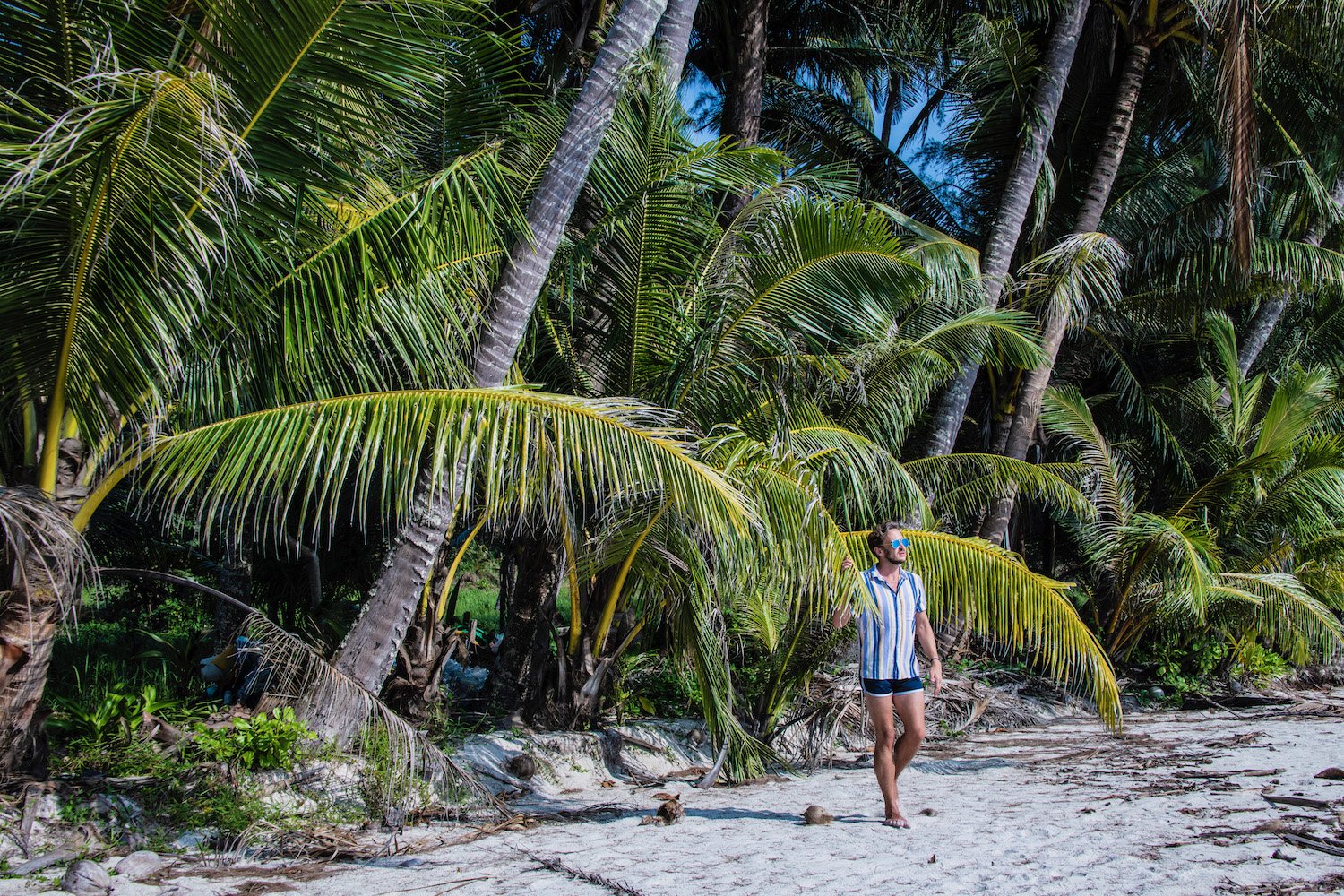
Trat Starts Here
Unless count the night I spent at Suvarnabhumi Airport , Trat is actually the first place in Thailand I ever properly visited. After flying in from Shanghai one night in February 2010 (and sleeping while I waited for my bus to arrive), I made the very long journey to Koh Mak island.
In spite of this, Trat was not a place I rushed back to as I dug deeper into the Kingdom over the years. Koh Mak and its sister islands are beautiful, but if we’re being honest they pale in comparison to the idylls of the Andaman Sea.
In the totality of my decade-and-a-half exploring Thailand, however, I have returned here several times. And so while this Trat travel guide has taken some time to take shape, I promise you it’s worth the wait.
How Many Days Do You Need in Trat?
Most of the time, when you find a Trat travel blog, it focuses on just one island. Bangkok expats who spend a weekend on Koh Chang, for example, or bro-packers who make a beeline for Koh Kood because they saw it in a drone video. Very few travelers explore the Trat archipelago as a single destination. Including me: I’ve only done so once—on my 2015 trip, which was sponsored by the TAT.
And this is the thing, when it comes to the discussion of how many days in Trat you need. If you’re just headed to one island, 2-3 nights will probably be sufficient, keeping in mind that getting between Bangkok and that island will take around half a day on either end. However, if you want to see all the islands, I’d say that a full week in Trat is sufficient, with two nights each on Koh Chang and Koh Kood, and three spend between Koh Maak and Koh Wai.
Where to Go in Trat
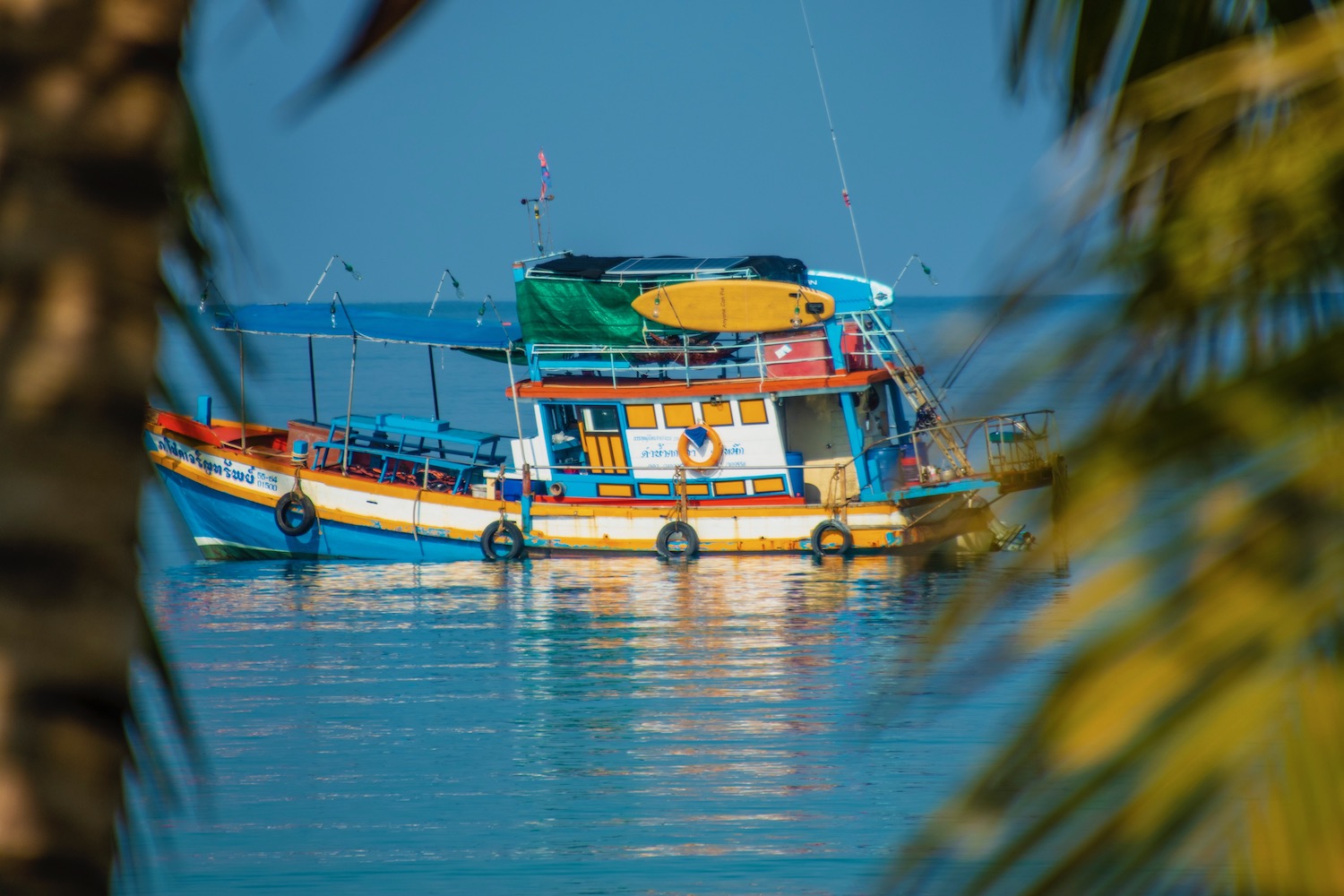
The largest island in the Trat archipelago, Koh Chang is also the most developed one, with the most hotels and most frequent connections to the mainland. On the other hand, while popular beaches like Lonely Beach aren’t bad by any stretch of the imagination, to me Koh Chang feels like the least spectacular Trat island.
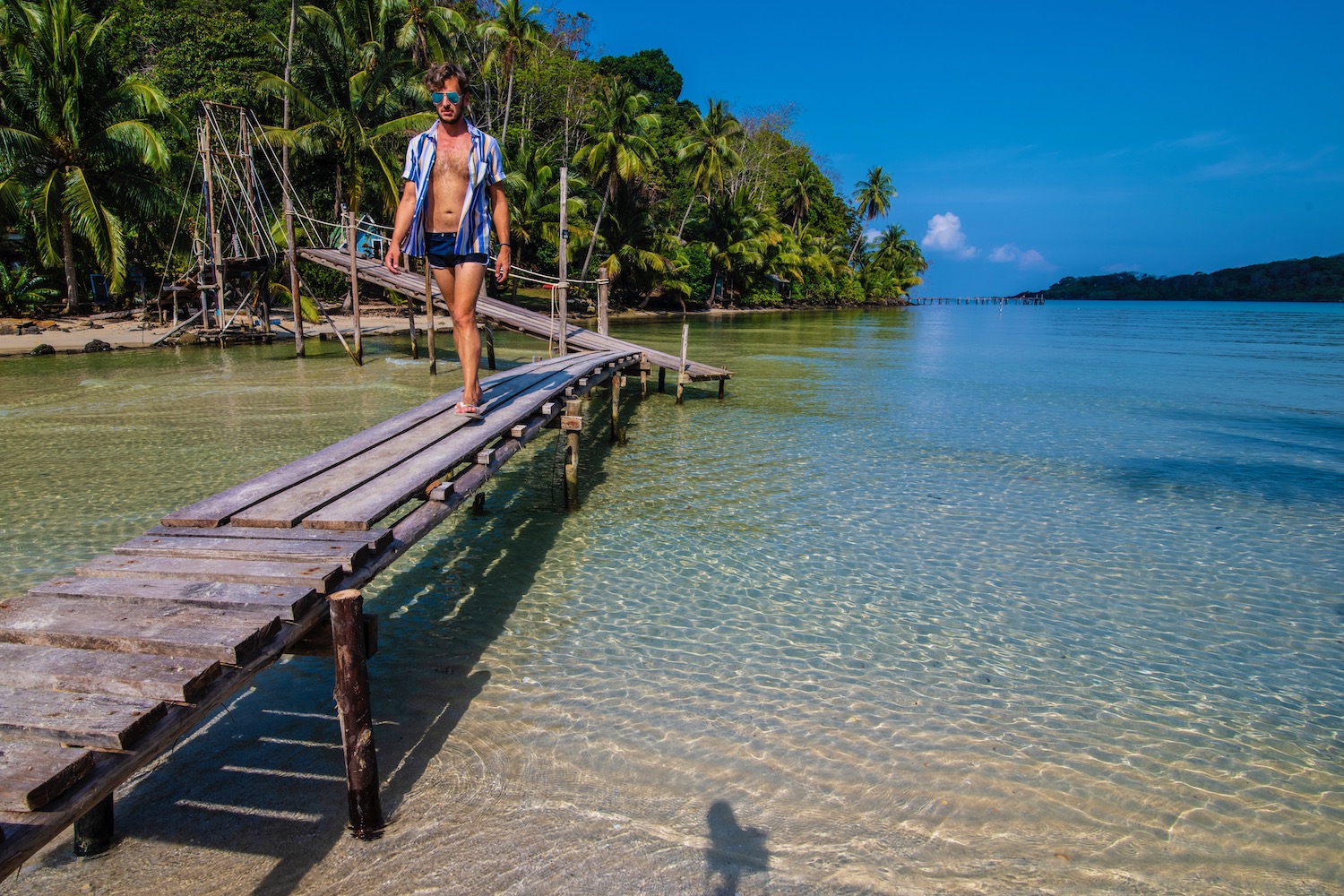
No matter how many days in Trat you end up spending, I do suggest trying to make it to Koh Kood , It’s the second-largest island after Koh Chang, but is far less developed. This means you need a lot more time and patience—and ideally a motorbike, assuming someone in your group is capable of riding one.
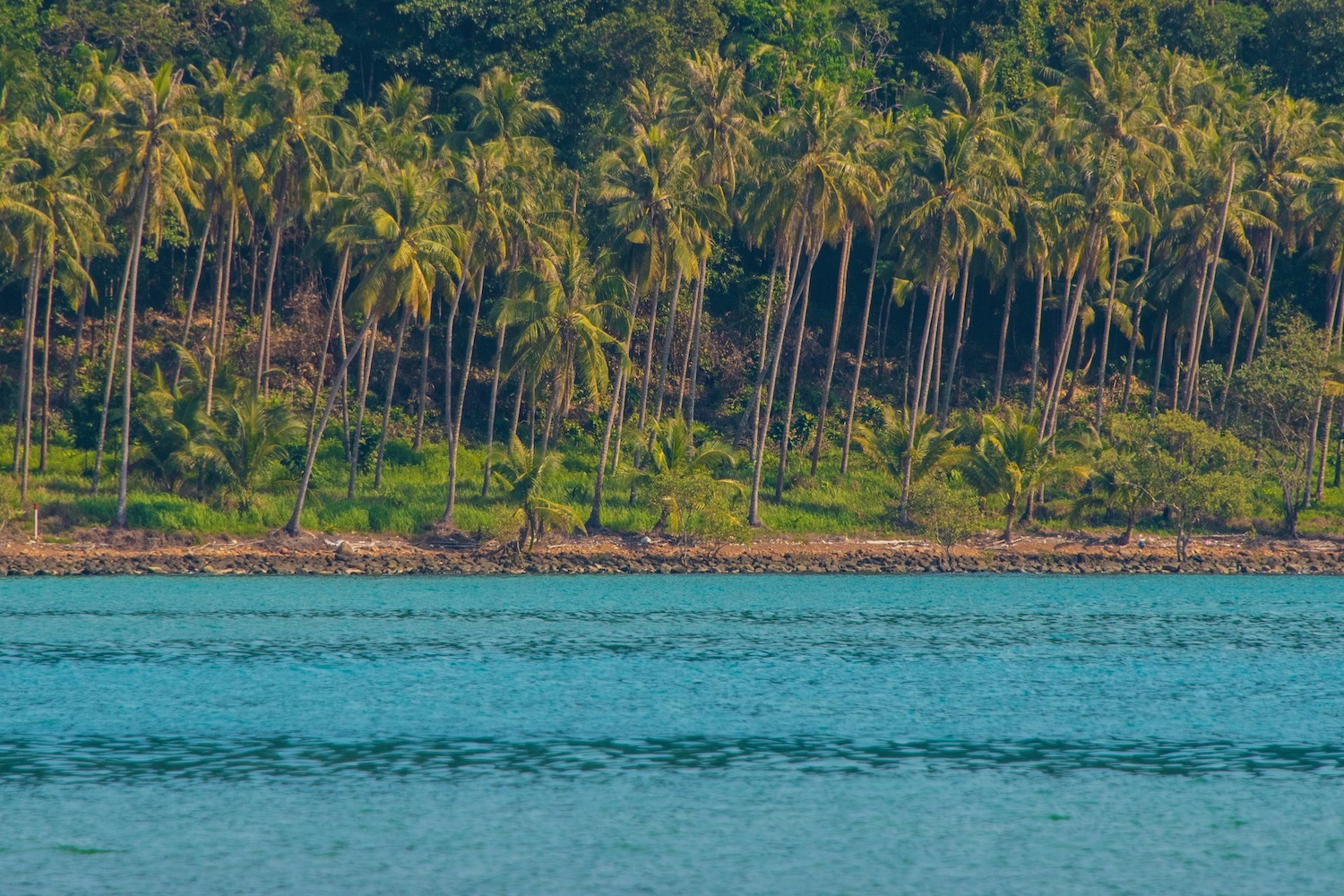
Koh Maak will always have a special place in my heart, even if I don’t often crave a trip back there. If I do, however, I will definitely leave behind the rather average beaches of the mainland and instead take a day trip over to the Koh Kradat islet.
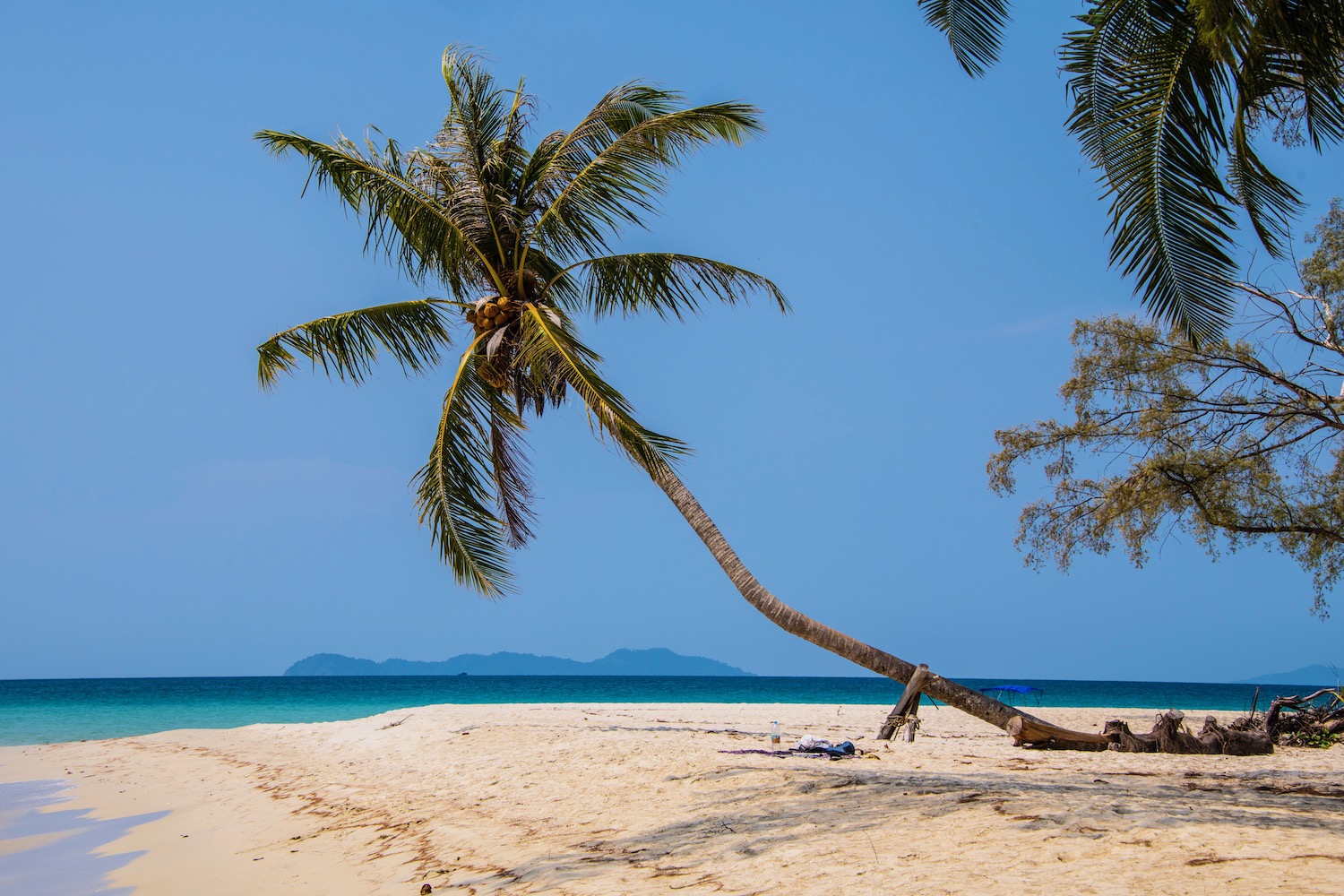
While an excursion to tiny Koh Wai (let alone a night spent there) isn’t usually among the top things to do in Trat that people consider, I happen to be a big fan of this idea. Forlorn and almost uninhabited, Koh Wai is definitely the spot in Trat that makes you feel more like you’re in the movie “Castaway.”
Other Trat destinations
Trat City is somewhat unspectacular, and not a place you’ll probably end up spending a lot of time, unless you travel in from Bangkok by bus. The other possibility? Flying to Trat Airport (TDX) via Bangkok Airways , and paying an exorbitant fee for a songthaew to the pier for the ferry to the island of your choice.
What is the Best Island in Trat?
Given that Koh Maak was the first island I visited in Trat—and indeed, the first island I visited in Thailand—you’d think that I would be heavily biased toward it. In fact, it’s probably my least favorite of Trat’s four most popular islands. The beaches just aren’t spectacular, certainly not if you’re coming all the way from Bangkok to experience them. Koh Chang also has little to offer, apart from its position as a hub of the islands.
The leaves Koh Kood and Koh Wai in this Trat itinerary. Koh Kood has many things going for it, from a wide variety of hotels and restaurants, to countless beaches, many of which are basically untouched. Koh Wai probably wins in terms of the sheer wildness of its nature, as well as the extent to which its small size makes it easy to explore. On the other hand, it’s an understatement to say that the accommodations there are spartan.
Other FAQ About Visiting Trat, Thailand
Is trat worth visiting.
Trat isn’t an especially easy place to visit, but it can be worth it if you set realistic expectations and use your time well. More to the point, I wouldn’t recommend Trat as a weekend trip from Bangkok, but think spending a week island hopping is a very good use of your time.
Is Koh Chang worth it?
Koh Chang, on its own, is not the most impressive or interesting island in Thailand. On the other hand, it makes a fabulous place to touch down once you arrive in the Trat archipelago, and a great launching pad for exploring its other islands.
How many days do you need in Koh Chang?
How many days you spend in Koh Chang depends upon what you plan to do there. If you plan to visit the island as a standalone destination, a day or two is sufficient. On the other hand, if you plan to use it as a base for excursions to Koh Maak, Koh Wai and Koh Kood, 3-5 days makes more sense.
The Bottom Line
I hope you’ve found this Trat travel guide helpful. While the Trat archipelago isn’t as conspicuously postcard-perfect as the islands of the Andaman Sea—or even as Koh Samui and its neighbors—there’s a subtle sense of paradise that shines down on you as you sun yourself on one of their palm-shaded beaches, many of which are basically virgin. What spots like Koh Chang, Koh Maak, Koh Wai and Koh Kood lack in luxury hotels and convenience, they make up for with the feeling that you’ve discovered a place that few know about. Need personalized help putting your Thailand island itinerary together? I do hope you’ll consider hiring me to plan it!
Plan Your Thailand Trip

Subscribe to email updates!
Words, images and design ©2019-2024 Robert Schrader, All rights reserved. Read Privacy Policy or view sitemap .
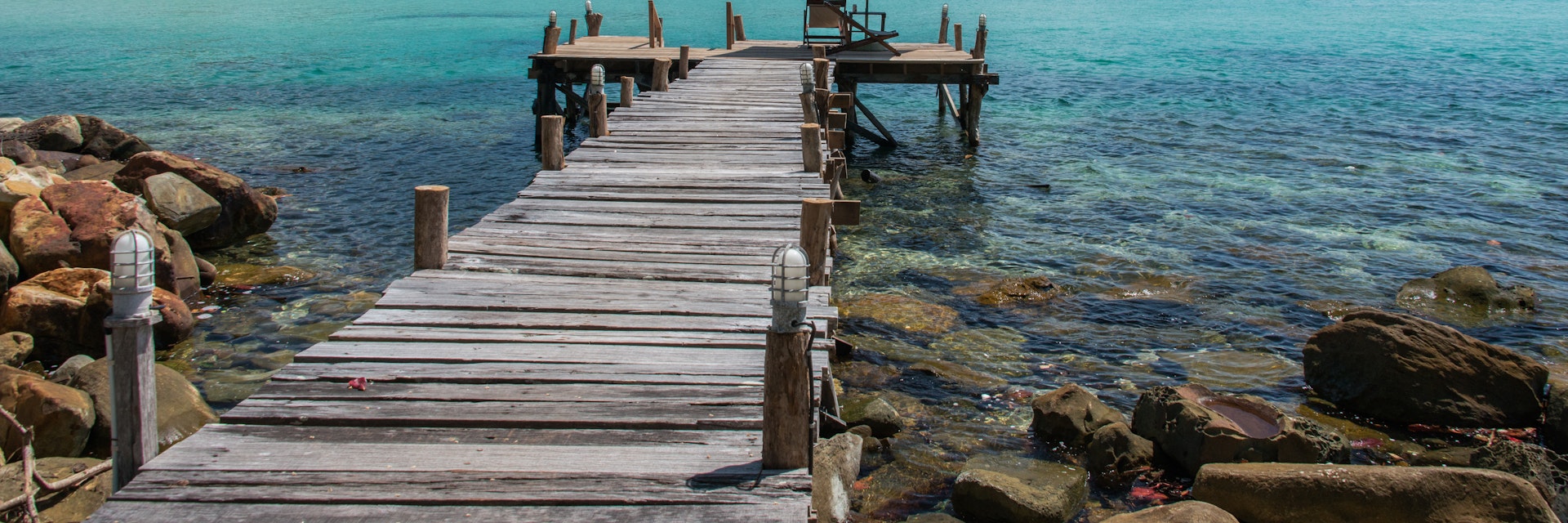
©ryasnik/Getty Images
Trat (ตราด) is a major transit point for Ko Chang and coastal Cambodia, and worth a stop anyway for its underappreciated old-world charm. The guesthouse neighborhood occupies an atmospheric wooden shophouse district, backing on to the riverfront and bisected by winding sois. It's filled with typical Thai street life: children riding bikes, homemakers running errands and small businesses selling trinkets and necessities.
Leave the planning to a local expert
Experience the real Trat. Let a local expert handle the planning for you.
Attractions
Must-see attractions.

Trat Museum
In a beautiful restored timber building on the site of the former city hall, Trat's museum features six rooms of interpretive panels (in English and Thai)…

Indoor Market
The indoor market sprawls east from Th Sukhumvit to Th Tat Mai and has a little bit of everything, especially all the things that you forgot to pack…

Trat's day market sells fresh fruit, vegetables and takeaway food.
Plan with a local
Experience the real Thailand
Let a local expert craft your dream trip.

Purchase our award-winning guidebooks
Get to the heart of Trat with one of our in-depth, award-winning guidebooks, covering maps, itineraries, and expert guidance.

Home » Island Guide » Visitor’s Guide to Trat Town
Visitor’s Guide to Trat Town

Discover Trat town.
Before we start, I should mention that there aren’t any ‘must see’ sights or attractions. And no large resorts or brand name hotels. And no go-go bars or backpacker party places.
So why visit Trat? Simply because it’s just a regular town with some good food, some pleasant places to stay, and heaps of laid back, local atmosphere.
Trat town is the capital of Trat province. Located around 300km east of Bangkok and bordered by Chanthaburi province to the west and the Cambodian border to the east. The Cardamom (Khao Banthat) mountain range forms a natural border with Cambodia. Whilst offshore lie a total of 52 islands.
The climate in and around Trat is one of the wettest in the country. From May to October rainfall can be as much as 1,000mm per month. But as in all tropical countries, the heavy rain usually comes in torrential overnight downpours or short heavy showers during the daytime. There’s plenty of sunshine at this time of year. And consecutive grey and rainy days are pretty rare.
The upside is that this is a very fertile, green area of the country. You won’t see any of the parched landscapes that can be found in the north. It is one of the main fruit growing areas of Thailand. Anyone visiting between March and August will find markets awash with a wide variety of inexpensive locally grown fruit.
A Bit of History . . .
Before tourism the province was best known for fruit farming, fishing and gemstone mines. So basically, wasn’t of much use to the country. Therefore, it wasn’t a surprise when, in early 20th century, the Siamese Kingdom signed an agreement with France, surrendering Trat to the colonial political power. This was in return for France relinquishing their decade long occupation of Chanthaburi town, which was then an important trading post.
The good news was that only a couple of years later Thai King Rama V, regained control of Trat from the French. Achieved by basically swapping it for a huge chunk of northeastern Cambodia, which includes the modern day Cambodian provinces of Battambang, Siem Reap and Sisophon. (In modern day tourism terms, one of the architectural wonders of the World, Angkor Wat, was exchanged for some nice beaches. )
The agreement was signed on 23 March 1906, and is celebrated annually as Trat Independence Day. This is also the reason why you will see reg flags bearing a white elephant on the displayed proudly on streets and outside businesses in Trat. This was the Siamese flag at the time Trat regained independence.
And if you happen to be in the town on March 23 you’ll be able to join the festivities . There is a huge sound and light show in the centre of town. This includes music, fireworks and a parade with hundreds of Trat natives dressed in period costume. I don’t advise watching all of the two hour long video below, from 2019’s celebration, but it’s well worth skipping through.
This wasn’t the end of the French interest in Trat. In 1941, during the French-Thai War the French navy sailed from their base in Ho Chi Minh, Vietnam in an attempt to sail into Bangkok’s port. They were intercepted by the Thai navy off Koh Chang . During the resulting ‘ Battle of Koh Chang ‘ three Thai warships were sunk and, eventually, the French forces were ordered back to Vietnam.
Trat town remains a peaceful, sleepy provincial town. There is some tourism but most visitors to this part of Thailand pass by the town itself without making any effort to see it. And if people do stay, it’s often only for a night either on their way to or from the Cambodian border or one of the islands.
During the 1980s when islands in the south of Thailand were opening up to tourism, Trat’s proximity to Cambodia and the ongoing fighting with the Khmer Rouge held it back. For many years the islands were off limits to visitors.
In fact, Trat’s most high profile foreign visitors during those years were Cambodian refugees. Plus the Khymer Rouge leader, Pol Pot. His reward for being responsible for the deaths of 2 million of his population was to have the Thai army allow him to live in a huge, fortified compound outside Trat town. ‘ Office 87 ‘ was where he lived and ran his insurgency plus a lucrative arms smuggling operation. This was aided by Thai government officials and local businessmen. All of whom became very wealthy as a result.
Trat town today . . .
However, if you haven’t committed genocide and would simply like to stay in Trat just to sample some local life, it’s definitely worth a couple of days of your time. There’s good value accommodation in modern hotels and also a range of budget guesthouses. The town is also well known for it’s bustling nightly street food market.
Trat town is a relatively sleepy place. The old riverside community lies just to the south of the centre, by the Bang Phra canal. It is here that you will still find narrow streets such as Thana Charoen Road, which is lined with old-fashioned houses and shops.
Of course nowadays these are interspersed with a few guesthouses, restaurants and small bars. Many years ago, the canal, which leads to the Trat river and then out to the sea. was a main route for trade. Islanders brought coconuts to sell and merchants from elsewhere on the eastern seaboard, and as far away as China, traded ceramic ware, herbs and spices. Murals on some of the house walls, depict the old lifestyle in the canal-side community.
Visitors will also see numerous basketware shops in the town and nearby villages, plus small bottles of ‘yellow oil’ for sale pretty much everywhere. This herbal oil originates from China and has been used in Trat as a homeopathic ‘cure all’ remedy for everything from mosquito bites to cancer for hundreds of years.
The French occupation of Trat was relatively short lived, and as such there is only one building still standing as a reminder of those times. This is the house that was the official residence of the French governor’s, ‘Residence Kampot’ ( also spelt as ‘Residang Gamport’ for some reason). It is a 120 year old wooden building which is now used as the Office for Religious Affairs Buddhism of the Province of Trat. If you want to take a look, it is located on Lak Muang Rd, close to the popular Trat Boutique Hotel.
For visitors interested in learning more about the town and history of the province, Trat has a very nice museum. Trat Museum is housed in, what was once the City Hall, on Santisook Road. This is a large wooden building that was originally built during the French occupation. Over the years it fell into disrepair and was unused before being lovingly rebuilt in the early 2000s.
The museum covers the history of the Trat area. From prehistoric settlements. To it’s early days as an important stopover for Chinese traders. To the occupation by the French in the early 1900’s and the World War Two Battle of Koh Chang. Most information in both Thai & English. There are also several multimedia and video exhibits, again in both languages or with English subtitles. Entry to the museum is 30 Baht for foreign visitors.
Trat’s most famous temple ‘ Wat Buppharam ‘ lies about 25 minutes walk west of the town centre. It’s a very well maintained temple complex which dates back over 400 years. It was founded in 1648 during the reign of King Prasat Thong who founded Trat town. The original buildings were replaced with more modern designs in the late 19th century. However, the original, red, laterite block, bases of some buildings were left behind. There’s also a couple of small museums on site, which the monks will open up for interested visitors.
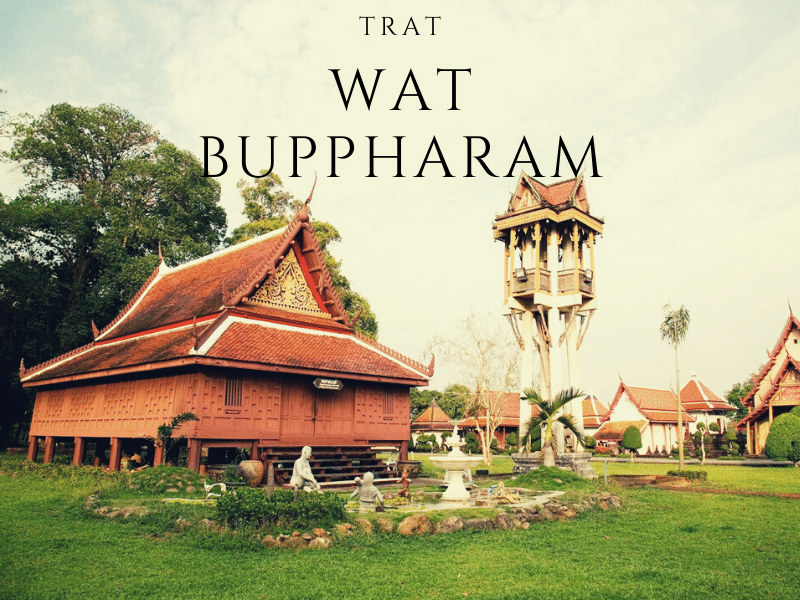
Hiring a bicycle is a good way to see around the town and once out of the centre the roads are good and there’s little traffic. Less than a kilometre west of Trat town, and 5 minutes ride from Wat Buppharam, is ‘Sa Sisiat’ a large reservoir that provides the towns water supply. Although it’s close to the town the area around it remains largely undeveloped and it’s home to a wide array of water birds. There are some restaurants and coffeeshops dotted around the lake which is circled by both a new cycling / running track and a narrow road. This is where you can meet some of the locals out for their morning run or bike ride.
Closer to the centre, 200 metres west of the market, on Lak Mueang Road, lies the Chinese-style City Pillar Shrine ( Chao Por Lak Mueang Shrine ). This was built by King Taksin in the 1760s. The King visited the city in order to raise troops and also ordered a shrine to be built in a Chinese style. This was partly because Chinese wisdom said that all towns should have a central pillar which serves to protect the city from enemies and to bring peace to the people. And partly because it helped maintain a good relationship between local and Chinese traders.
Where to Stay in Trat town?
If value for money is important to you, then the accommodation in Trat definitely won’t disappoint you. Until just a decade ago finding a place to stay was limited to just a couple of old hotels and a handful of quaint but very basic guesthouses. Nowadays that’s changed and there are an increasing number of modern hotels and stylish guesthouses. And the best thing is that you’ll find it hard to spend more than 1,500 Baht / night even if you stay in the best hotels in town.
Rimklong Boutique Hotel was probably the first small, stylish hotel to open in the town centre. Run by the affable Mr Tooh, it’s one of the best guesthouses you will find anywhere on your travels. It’s located in the old town area in a renovated brick and wood shophouse and oozes old fashioned charm. Rooms for around 1,000 – 1,500 Baht / night depending on the season.
If you want the best views then the obvious choice is Canvas Family Home by Sa Sisiat reservoir, just outside the town centre. This is a stylish coffeeshop with a handful of spacious, well appointed rooms. The coffeeshop is often packed with locals at the weekend and during the week is a popular spot for lunch. Rooms are great value from under 1,000 Baht / night, They also have large Family rooms for well under 2,000 Baht / night. If views are a priority, go for the ‘Deluxe Room with Balcony’ with floor to ceiling windows and panoramic views across the reservoir.

Trat 101 Waterfront Hotel is a very tastefully rebuilt house on Thana Charoen Road in the old town. The air-conditioned ensuite rooms are quite small but are bright and open onto the garden and huge mango tree. A good choice if you want a mix of the old and new. From 700 Baht / night.
Punn Pann Suk , on the eastern side of the town centre is another of those cosy locally run places that attract guests based on the friendliness of the owners rather than their modernity or style. Sure, it’s a bit dated but is well run and you’ll get a small ensuite double room for under 500 Baht/night. Larger rooms, suitable for a family or group of friends go for 700 Baht / night. Breakfast can be had for an additional 100 Baht / person.
Finally, anyone on an even tighter budget, how about Baan Jaidee . An old fashioned guesthouse which has racjed up well over 300 extremely positive reviews on booking.com. One of those places that’s run by a super friendly local family and is like staying in a small museum combined with bric-a-brac shop. Don’t expect staff in uniform, air-conditioning or standardised decor. Do expect simple, clean tidy and functional fan rooms with a shared bathroom from just 300 Baht / night including breakfast.
Here are three good options for anyone who prefers modern hotel rooms. JP Grande Hotel opened in late 2019 and is located to the north of the city centre near Bangkok Trat hospital . You’ll find rooms here from 900 – 1,500 Baht / night including breakfast. They also have a swimming pool.
Not far away, Trat City Hotel is a small hotel, with salt water swimming pool, set back from the main road. You’ll have no problem getting a room here for under 1,000 Baht/ night including buffet breakfast at any time of year.
Closer to the bus station, Chivapuri Residence is another good value small hotel. Rooms here are furnished with chunky handmade wooden beds and furniture, which makes a pleasant change to most places. Figure on around 1,200 Baht/night for a double room with breakfast.
Where to Eat in Trat
For many local residents, eating in the town in centered around the two main markets. The large indoor market and the open air night market a couple of minutes walk north. The night market is marked by an overhead sign on the main road in Thai and English. The English version reads ‘Top street food in Trat by Trat people’
The indoor market is a large, sweat box with narrow aisles lined with stalls selling all manner of goods. If you want to buy anything and your only requirement is that it’s dirt cheap, you’ll find it here.
In the centre of the market are numerous fruit and food stalls. So even if you don’t fancy the idea of buying anything it’s an interesting place to browse a huge variety of fruits, snacks and food on offer. 30 Baht will get you a bowl of noodles, a braised pork and rice dish or a sampling of one of the many curries on offer. Traditional local curries are everywhere you will see trays lined up with various meats cooked with super spicy, chili paste concoctions that also include pineapple, for sweetness, and green coconut stalks for texture.
The night market starts late afternoon / early evening. But from lunchtime onwards you will see some workers hosing down the street in preparation and some stallholders setting up shop. It’s not really a place to have a sit down meal, as it’s a bustling area and most of the locals are buying food to take home. But some stalls have a couple of stools and fold up tables where you can eat in instead of taking away. Take a walk and just try 20 Baht of things that look interesting. There’s everything from fruit and local desserts to fresh seafood. Some you’ll love. Some you’ll hate. Some you’ll probably get food poisoning from – avoid the raw seafood dishes unless you have a hardy stomach.

If the markets are a bit too basic for you, try SaengFa Restaurant on the main road, opposite the government hospital. This is locally owned and serves up delicious Thai and Chinese food in an air-conditioned dining room. The menu is in Thai & English. They also have a good coffeeshop with excellent homemade cakes. (The owner speaks good English as she studied abroad, which is where her love of real cakes came from.)
When we’re in Trat the one place that we try to go to, assuming it isn’t packed out, is a simple Thai restaurant located 10 minutes walk from the indoor market on the way to Sa Sisiat reservoir. There’s no sign in English but it’s adjacent to a newly built apartment block. ( Streetview image ) This restaurant is well known for it’s tom yam seafood noodles and ‘Kao Man Gang’. A version of the Thai equivalent of Hainanese chicken rice, but served with crayfish meat instead of chicken. Delicious. There’s fan and air-con seating. Sitting in the AC area is for the high rollers as it adds 5 Baht per dish onto the bill.
For some fusion food, and to hang out with the upper echelons of Trat society, head to Trat Marché – a hip coffeeshop / restaurant to the east of the town centre. The restaurant is famous for it’s ‘Pat krapow’ menu. This is a staple Thai dish, usually made with minced pork and served with rice. But here you can can mix and match ingredients and there’s a choice of over 100 variants of the dish. So no problem if you want to have it made with salmon and served with penne pasta.
There’s very little written in English about restaurants in Trat, browsing Tripadvisor you get the feeling that there’s hardly anywhere in the town where you can eat. But, of course, there are plenty of small eateries. And you will find lots listed online . . . on Thai websites.
So, a quick tip if you want to find the places that Thais rate highly is to use the Wongnai website. Use the Google Chrome auto translate and you’ll get passable English. Reviewers always leave lots of photos and there’s also a map with the location. Here are the listings for Trat (and yes, the top rated restaurant in the province – Thewtara Seafood, is definitely worth visiting if you have time. But it’s a few kilometres south if the city.)
How to Get to Trat?
Driving to Trat from Bangkok can be as simple as following Sukhumvit Road, from the centre of Bangkok all the way around the eastern seaboard, to the centre of Trat town. This road, Highway 3, was one of the first roads built in Thailand. However, there are shorter, more direct routes available now which the majority of buses, minibuses and private cars will use. Take the motorway out of Bangkok, then Highway 344 to Klaeng. Then join Highway 3 and head directly to Trat.
Flying to Trat is also possible on Bangkok Airways . The charming Trat Airport, has 3 or 4 flights per day from Bangkok. It is owned by the airline, so prices are relatively high for the 50 minute flight.
Air-Conditioned buses depart from Ekkamai (Eastern bus terminal for Bangkok) to Trat on an hourly basis from six in the morning to midnight. Trat bus station is located a kilometre north of the town centre, just off Highway 3. The ticket price is 240 Baht and the journey takes around 5 to 5 and a half hours. Bus tickets can be booked online at http://www.pns-allthai.com/en/booking_1.php
Getting from Trat to Koh Chang, Koh Kood, Koh Mak and the Cambodian border
It is easy to take songthaew (pick up truck taxi) from the bus station or your hotel to one of the boat piers. Songtaews to Ao Thammachat & Centrepoint piers (for boats to Koh Chang ) , Krom Luang pier (for boats to Koh Mak) and Laem Sok pier (for boats to Koh Kood ) depart regularly from Trat bus station. But note that whilst the last boat to Koh Chang is at 19:30. The last speedboat to Koh Mak is at 16:00. And, if you’re heading to Koh Kood, the last boat is at 15:00 during high Season and 13:00 during the low season.
However, any good tour agent, guesthouse or hotel in Trat town will either sell you a combined taxi and boat ticket or call one of the taxis to take you to the pier of your choice.
For anyone heading to Cambodia, there are air-conditioned minibuses from Trat bus station to the border at Hat Lek every 30 minutes from 05:00 to to 21:30. The journey takes around an hour and 15 minutes. Ticket price is 140 Baht.
You may also like

Long Beach and Salakphet Bay
Salakphet offers some great views, local homestays plus the hard to reach, remote Long beach
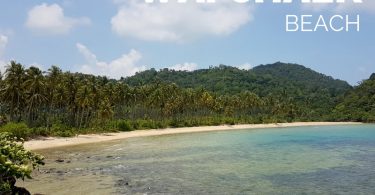
Wai Chaek Beach
Located on the south coast of the island, Wai Chaek beach is the only undeveloped beach on the island. Getting there is an adventure in itself. :-)
תודה רבה על הפירוט הנפלא
Thanks Ian. We will be in Trat for 3 weeks in October . Following your advise we will rent bicycles. Good roads, limited traffic and tourism makes it a paradise for cycling and cultural exchange. If you would be around , we would like to invite you for some seafood lunch or dinner. Gil and Paul
Thanks Paul. Enjoy your time there. It’ll be worth renting a car for at least some of your time there so you can do some day trips. It’s easy to explore the coastline towards Cambodia or head to Chanthaburi for a day or longer. There’s plenty to see and do there if Trat is too quiet for you.
You convinced my wife and me to stay in a sleepy provincial town for 3 to 4 weeks coming november. At 77 I always look for places where you can escape whatever kind of tourism and just observe and live the culture of wherever you are. Exchange of culture and wisdom . Thanks If you have any tips that we are not aware about, please let us know. Greetings from the Philippines , Gil and Paul
Leave a Comment

Amazing Thailand

- Northern Thailand
- Northeastern Thailand
- Central Thailand
- Eastern Thailand
- Southern Thailand
- Thai Nature and Beaches
- Thai Arts and Crafts
- Thai Gastronomy
- Thai Culture
- Thai Way of Life
Top Things to Do in Trat, Thailand: Island Hopper’s Paradise with Coconut Trees, Cultures, and Deer
Trat, Eastern Thailand
The far east of Thailand, Trat borders the Gulf of Thailand to the south and Cambodia to the east. Its location makes for a convenient transit point between Thailand and Cambodia’s popular beach resort, Sihanoukville, as well as other up-and-coming destinations like Battambang. However, the city is far more than a transportation hub and you’ll be missing out if you don’t hang around.
While the city area is a quiet and unassuming, Trat is blessed with over 50 islands, some of them among the most beautiful in Thailand. The 3 most popular islands are Koh Chang, Koh Kood and Koh Mak, where you can enjoy not only sea, sand and sun but also rich marine life, greenery and local ways of life. From Bangkok to the islands in Mu Koh Chang National Park, it takes about 4-5 hours by car or bus and then a 45-minute ferry ride. Quite a long journey, but it’s very worth it. If you feel the need for speed, Trat Airport is served by direct flights from Suvarnabhumi Airport, though it’s a much pricier option.
Other islands and some inland attractions, especially eco-friendly community-based tourism, have also been making a name for themselves among Thai travelers, so be sure to put them on your travel plan. Check out these top things to do in Trat, Thailand, and enjoy authentic local experiences before the rest of the world catches on.
Top 10 Things to Do in Trat, Thailand
1. explore the grand diversity of koh chang.
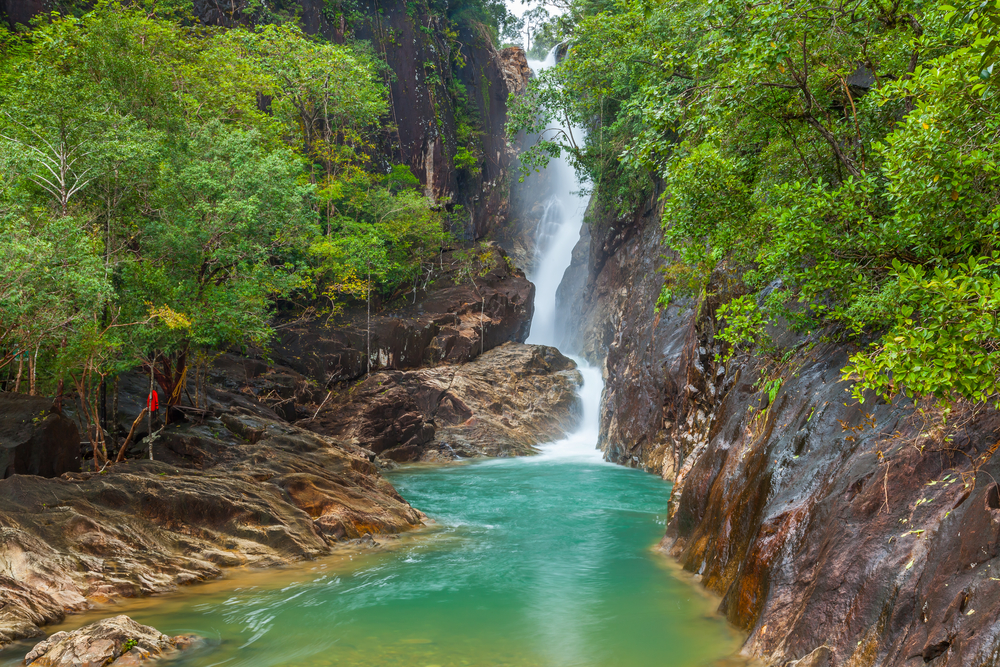
The largest island in the east and the third largest in Thailand after Phuket and Samui, Koh Chang (Elephant Island) isn’t only well-known for its size. Its diversity is as grand as its name and the island offers a wide range of activities. Thanks to its mountainous and forested landscape, Koh Chang visitors get to enjoy not only the beaches but also hiking and relaxing in Khlong Phlu waterfall area.
While there are a lot of hotels on Koh Chang, the island has a strong sense of community. Want to go snorkelling or fishing? Visit Bang Bao Fishing Village and let the locals take you to the sea. If you’re missing the green life, go to Salak Kok Fishing Village. The village is located close to mangrove forest and you can choose between a Thai-style gondola experience or kayaking. Come at night and thousand of fireflies await.
2. Enjoy nature and a whole lot of coconut trees on Koh Kood
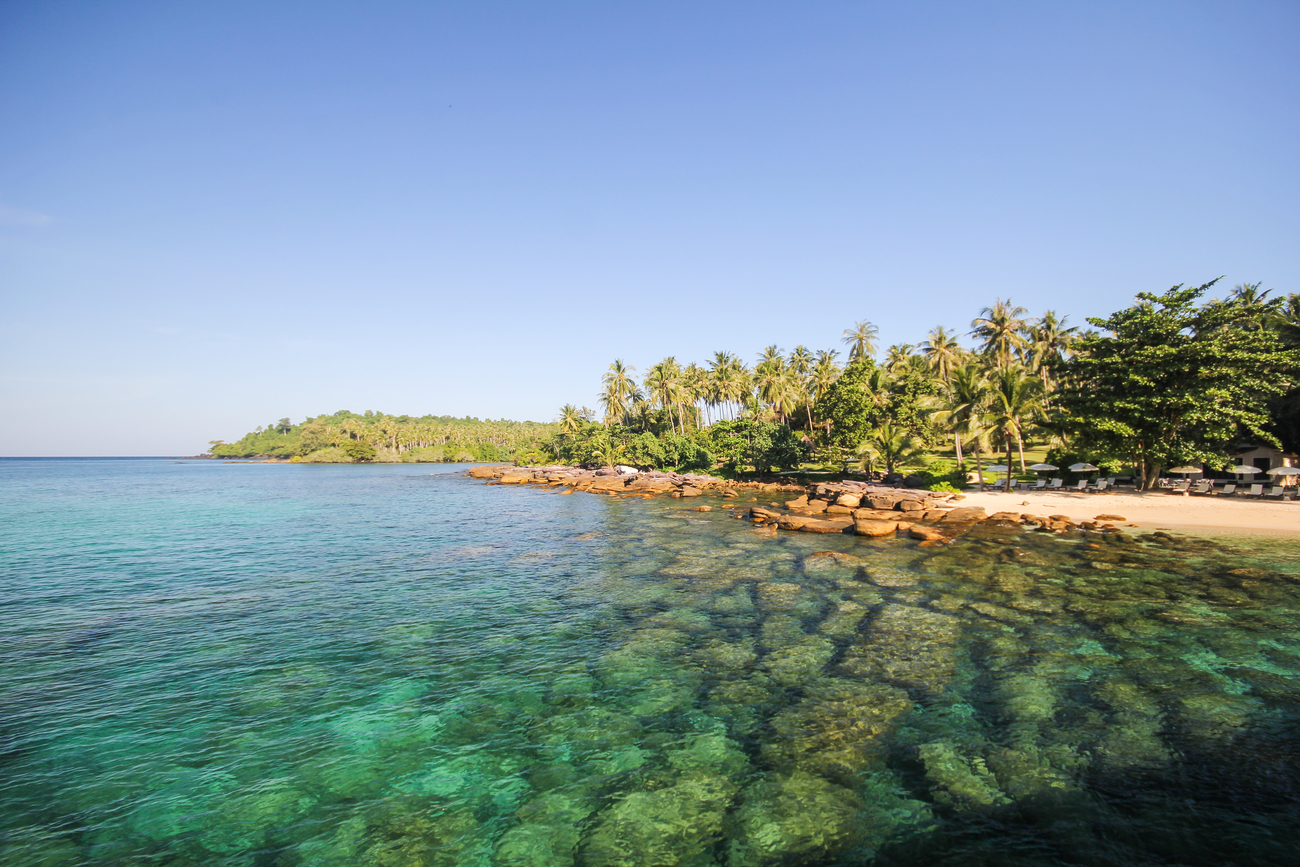
Located about an hour from Koh Chang by ferry, Koh Kood is an ideal destination for those wanting to go more off-the-beaten-path while enjoying a variety of activities. Go snorkeling, kayaking, canoeing and swimming in the stunning Klong Chao Waterfall… You can even hold onto a rope and swing into its pool Tarzan-style.
But if you simply want to relax, it’s perfectly fine. Apart from its crystal clear water, pristine beaches, lush tropical rainforest and waterfalls, Koh Kood is fringed with super photogenic rows of coconut trees. No wonder it’s called the jewel of the east.
3. Dive into the east’s best coral spots around Koh Mak
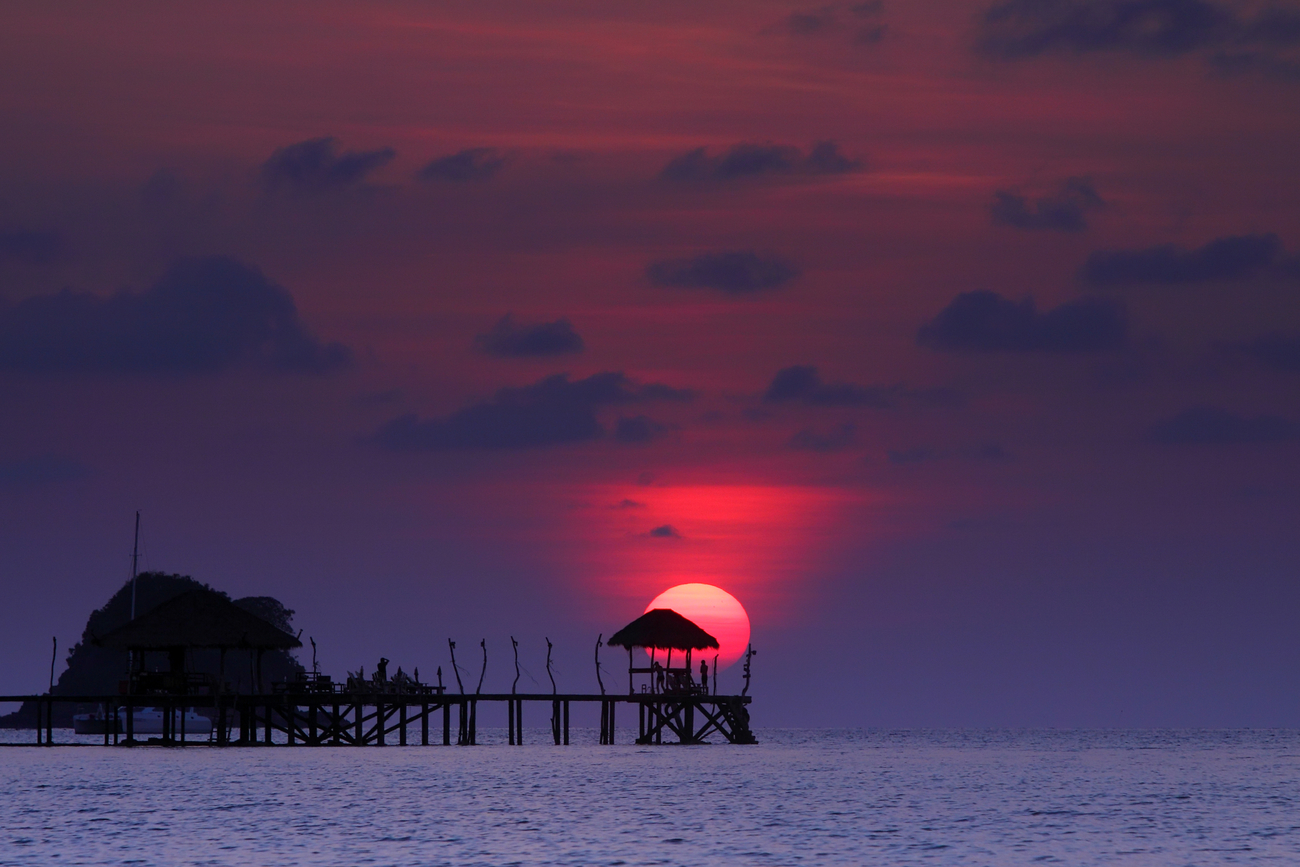
An island located between Koh Chang and Koh Kood, Koh Mak is unmissable. Inhabited by only 350 islanders who rely mostly on rubber and coconut farming, Koh Mak is tranquil and a place to enjoy a simple and sustainable way of life. The island also offers turquoise sea and white sandy beaches.
In addition to the view, Koh Mak is best base for divers. It’s not far from Rang Islands, where you’ll find more corals than anywhere in Eastern Thailand. Among them, Koh Wai is the best diving spot as it’s home to a coral reef conservation project.
4. Greet the giant clams under Koh Kham’s sea
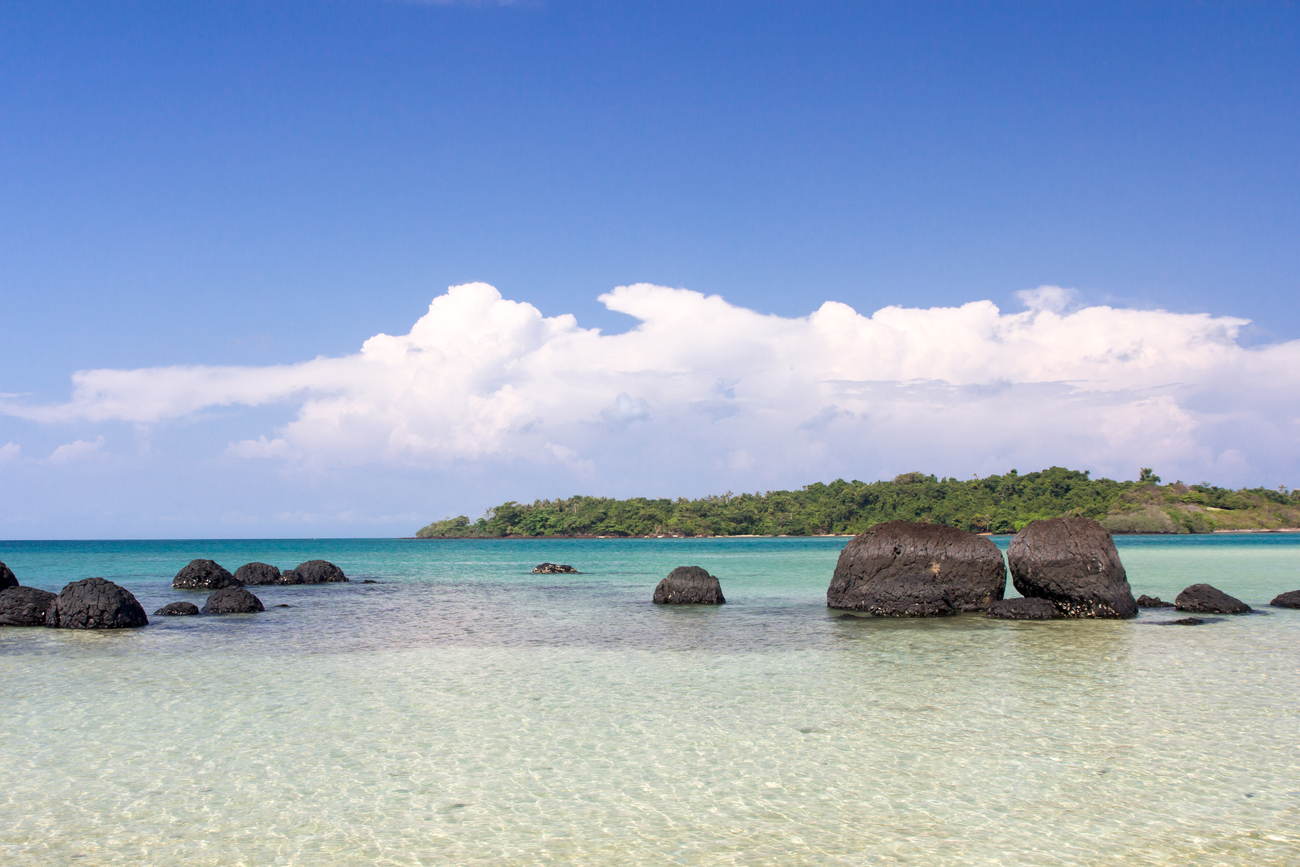
The island hopping still goes on. Koh Mak’s neighbor (less than 15 minutes away by ferry!), Koh Kham is a small private island with impressive natural beauty. Of course, the sand and the sea are heavenly, but there’s more. Koh Kham’s shore is adorned with black volcanic boulders unlike anywhere in the east. If you want to explore under the sea, Koh Kham is also rich in marine life, including the giant clams.
* Not to confuse with another Koh Kham in Chonburi
5. Visit the deer island, Koh Kradad
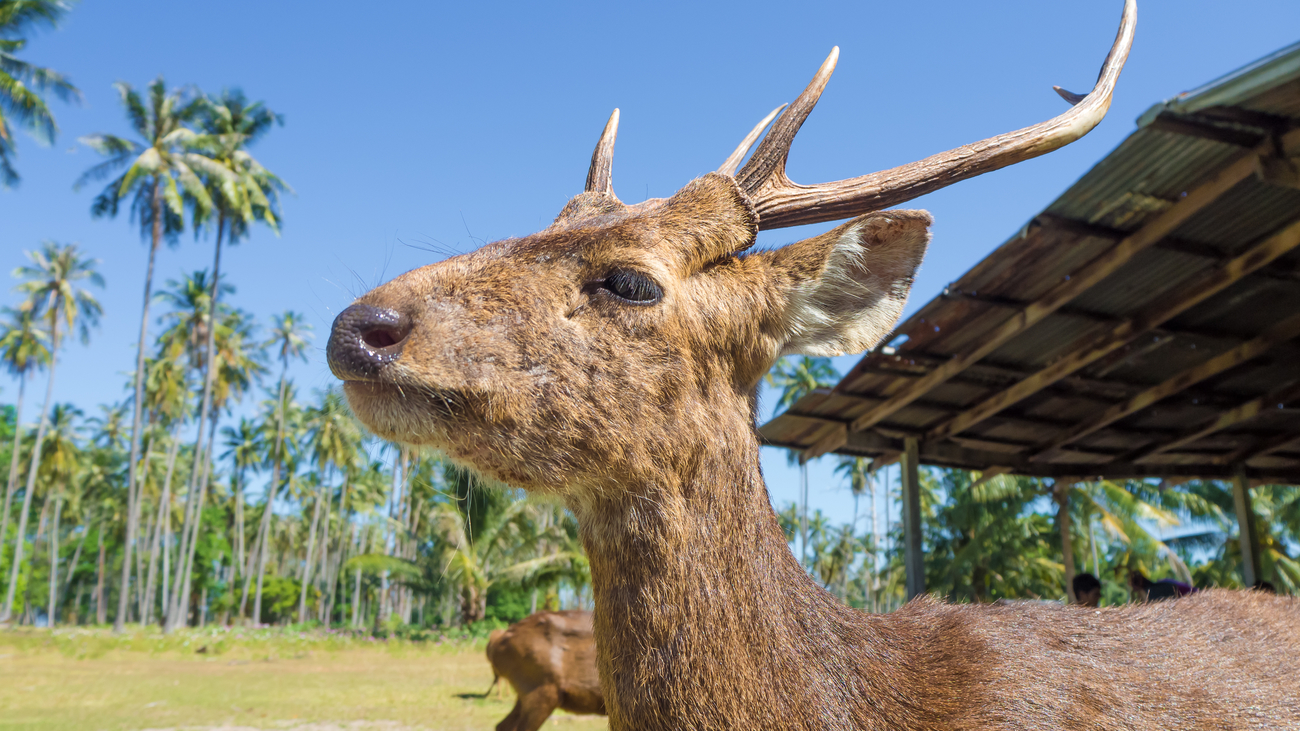
Koh Kradad is a kind of strange you’ll love. Unlike Trat’s other mountainous islands, Koh Kradad is entirely flat. Instead of rainforests, the island is covered by grass and coconut trees, one of them somehow bending horizontal to the ground before lifting its top up to the sky. However, the stars of the island are deer. Thousands of them, roaming freely in the middle of the sea! Since it takes only about 10 minutes from Koh Mak to Koh Kradad, don’t miss Thailand’s very own deer island.
6. Treat your feet to natural spa at Black Sand Beach, Laem Ngop
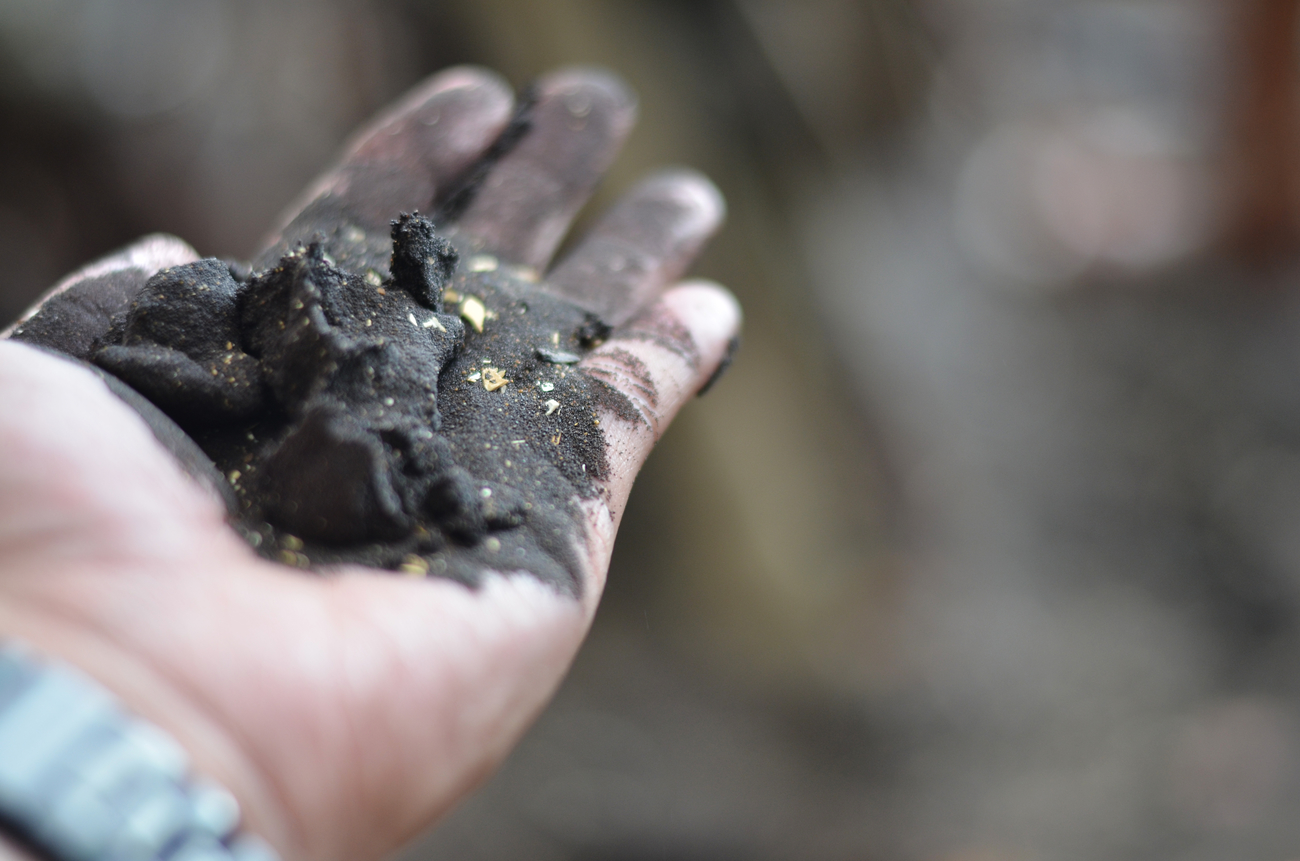
The only black sand beach in Thailand and one of the world’s only five. Black Sand Beach in Laem Ngop area is a unique nature experience. Stroll in the mangrove forest and enjoy wildlife sightings, such as birds, crabs, monkeys and mudskippers. At the end of the trail, you’ll find Black Sand Beach. Bury your feet in the warm, soft sand for a while, it’s really relaxing and your feet will love it.
Bonus: Also in Laem Ngop area is Laem Ngop Viewpoint and the Eastern Apex. There stands the iconic red and white Laem Ngop Lighthouse and it’s a brilliant sunset spot.
7. Glimpse into the city’s colonial past
For a brief period of time, the eastern city was colonized by the French Empire in the early 20th century. After gaining independence and becoming part of Siam (former name of Thailand) again, Trat retains the old flag of Siam, which features a white elephant on red background. It’s now a rare sight in Thailand, so be sure to look out for the Siamese flags while traveling around the city.
You won’t find much trace of colonization in the city; however, Trat Museum can tell you the stories throughout the city’s history. A few colonial-era wooden buildings also remain in Klong Bang Phra community and don’t forget to visit the unique Chinese-style City Pillar Shrine.
8. Live the local life in multi-religious community, Ban Nam Chiew
Ban Nam Chiew is a very charming community with cultural diversity and a lot of natural beauty. The Buddhist and Muslim villagers live together in harmony and you can also enjoy a hands-on local experience. Hop on a boat to sightsee the mangrove forest. Weave your own Ngop Nam Chiao, a hat from palm leaves, which is still in practical use today. Make local desserts: Ban Nam Chiew-style crispy crepes. Ban Nam Chiew locals also open their homes to visitors, so you can stay overnight, taste homecooked local meals and exchange local stories with them.
9. Uncover the story of revival and see the wondrous roots at Ban Tha Ranae
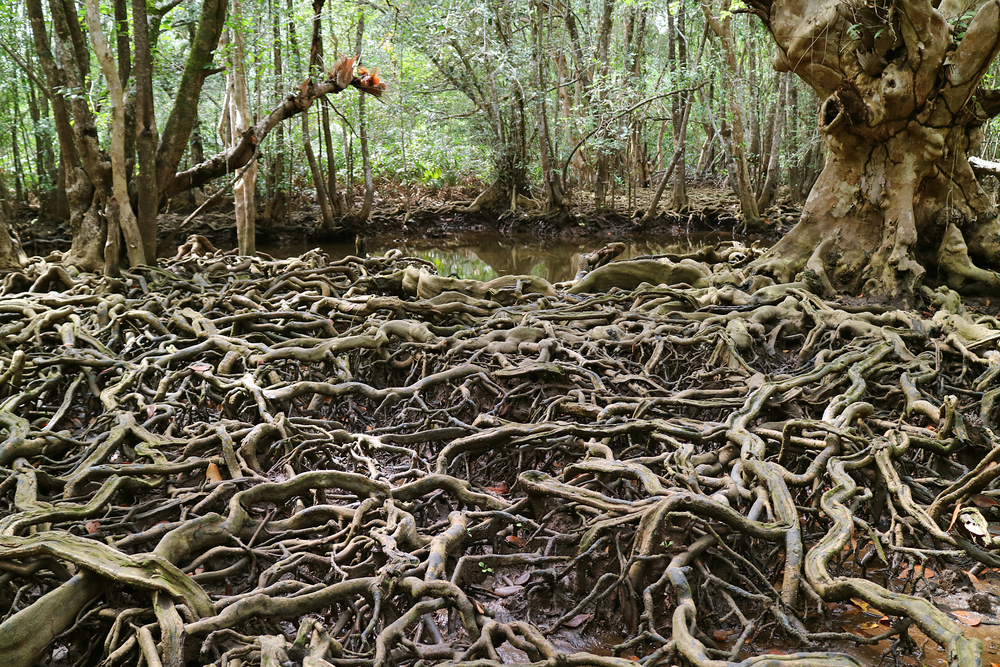
This is no ordinary mangrove forest. Ban Tha Ranae is a fishing village that was once severely affected by mining. However, the mangrove forest grew and the ecosystem was restored. Since then the villagers have been working hard to conserve nature and promoting the eco-friendly way of life.
After learning the local stories, go on a boating trip along the river to Lan Taboon, where beautifully intertwined mangrove trees’ roots are revealed at low tide.
10. Taste the best salaks in Thailand at Somphoch Farm
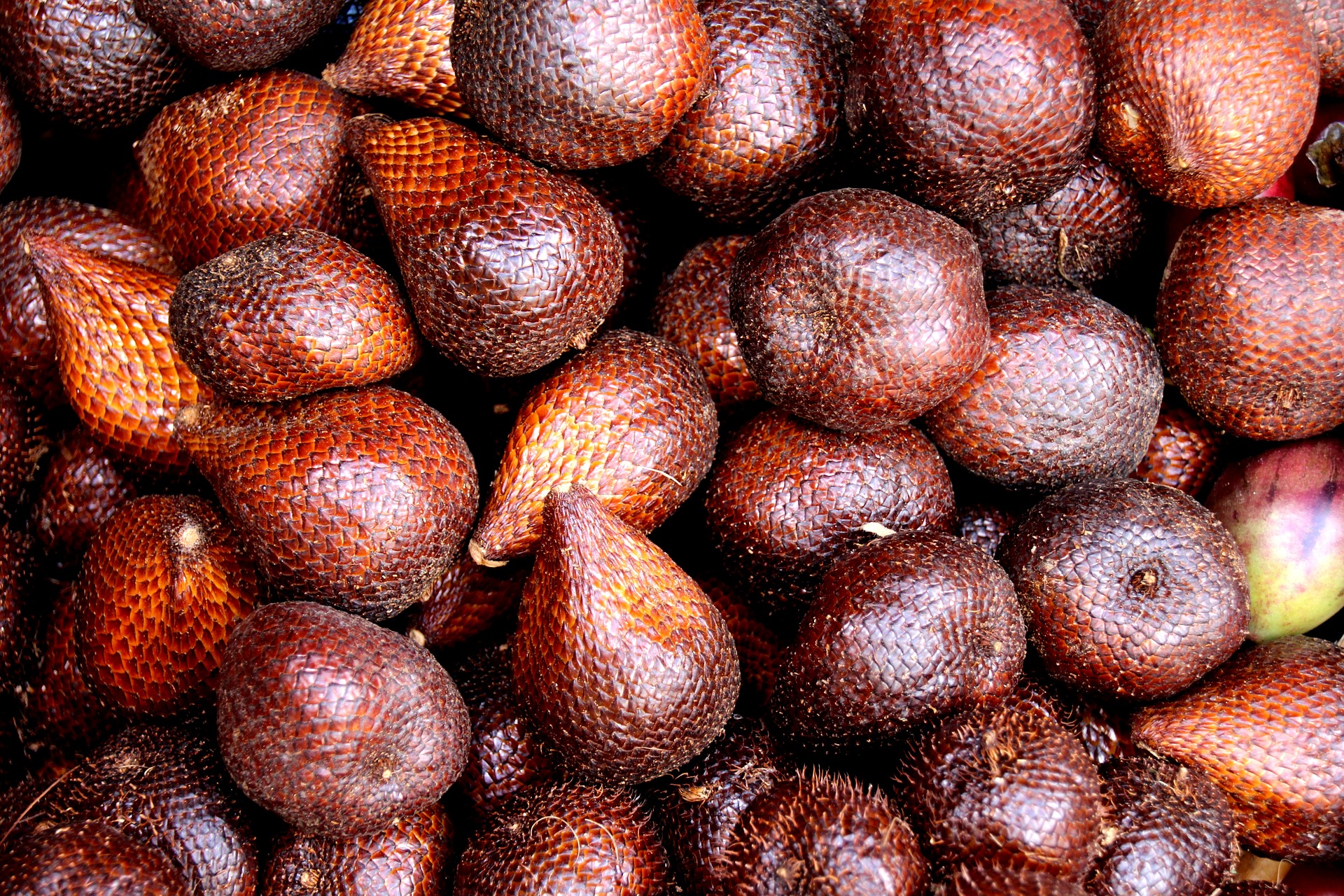
Trat grows the best salaks in the whole country. Taste the best of the best (and salak-based desserts) at Somphoch Farm and learn about the hard work and great care put into the fruits from the founders, Uncle Krachang and Aunt Somphoch.
If your next Southeast Asian stop is Cambodia, you can opt to cross the border in Trat to Sihanoukville – a charming coastal town. From there, you can make your way down to Kampot, a charming small town known for its quality pepper and serene river view. You can go for a pepper plantation adventure , or a snorkeling and kayaking experience with our friendly Local Experts.
Or if you choose to go straight up to Siem Reap, our private tours also let you explore the magnificent Angkor temples at sunrise by bicycle. You will see Siem Reap at its freshest and most serene hour. See our vast selection of private local tours in Cambodia here.
That’s it for things to do in Trat, Thailand, but that’s not all you can do on your journey. Pair your visit to Trat with a trip to its charming neighbor, Rayong . Find out things to do in Rayong, Thailand
Welcome to Amazing Thailand – Open to the New Shades . This is your ultimate Thailand travel guide, off-the-beaten-track edition. Go local and explore Thailand through new perspectives. Open your heart and mind… to the shades of Thailand that you never knew exist!
Book your individual trip , stress-free with local travel experts
- roughguides.com
- Travel guide
- Itineraries
- Local Experts
- Travel Advice
- Accommodation
Plan your tailor-made trip with a local expert
Book securely with money-back guarantee
Travel stress-free with local assistance and 24/7 support
We had a great trip and thoroughly enjoyed our time in Thailand! Really appreciate all your coordination. All the guides were wonderful, they were both gre...
The small and pleasantly unhurried provincial capital of TRAT, 68km southeast of Chanthaburi, is the perfect place to stock up on essentials, extend your visa, or simply take a break before striking out again. Most travellers who find themselves here are heading either for Ko Chang, via the nearby port at Laem Ngop, for the outer islands, or for Cambodia, via the border at Hat Lek, 91km southeast of town. But Trat itself has its own distinctive, if understated, old-Thailand charm and there are lots of welcoming guesthouses to tempt you into staying longer.
Crossing the Cambodian border via Hat Lek
Though there are no real sights in Trat, the historic neighbourhood down by Khlong Trat, where you’ll find most of the guesthouses and traveller-oriented restaurants, is full of old wooden shophouses and narrow, atmospheric sois. The covered market in the heart of town is another fun place to wander. Out-of-town attractions that make enjoyable focuses for a leisurely cycle ride (ask at Cool Corner restaurant for detailed directions and other recommended routes) include the mangrove forest to the southeast near Dan Khao, and the ornate seventeenth-century Wat Buppharam, 2km west of Trat Department Store, and the nearby lake.
Tailor-made travel itineraries for Thailand, created by local experts

5 days / from 1180 USD
Chiang Mai Safari Adventure
The perfect trip for some family fun and adventure, lovely Chiang Mai with its lush valleys and national parks ticks all the boxes. Expect majestic cliff-top temples, sprawling national parks and exciting safari adventures.

12 days / from 2750 USD
Thailand's Islands and Highlands
Experience the best of Thailand as you discover glitzy Bangkok's temples, markets and waterways. Compare the bustling, lively capital with the glorious rolling hills and lush interior of mountainous Chiang Mai before heading south to beach bliss and unexpected cultural delights in hedonistic Phuket.

12 days / from 2450 USD
Thailand Discovery
A great way to discover Thailand, take in the Central Plain and Bangkok, the north with Chiang Mai and the south at the lively resort of Phuket.
Trat is famous across Thailand for the yellow herbal oil mixture, yaa luang, invented by one of its residents, Mae Ang Ki, and used by Thais to treat many ailments: sniff it for travel sickness and blocked sinuses, or rub it on to relieve mosquito and sandfly bites, ease stomach cramps, or sterilize wounds. Ingredients include camphor and aloe vera. It’s well worth investing in a lip-gloss-sized bottle of the stuff before heading off to the sandfly-plagued islands; you can buy it for about B70 and upwards at Trat market and at nearby Tratosphere bookshop. There are now several imitations, but Mae Ang Ki’s original product has a tree logo to signify that it’s made by royal appointment.
Many travellers use the Hat Lek–Koh Kong border crossing for overland travel into Cambodia. It’s best to arm yourself in advance with an e-visa for Cambodia and to make the journey by regular public transport, but it’s also possible to buy a package all the way through to Sihanoukville and Phnom Penh and to get a thirty-day visa on arrival at the border, though both of the latter options are more likely to open you up to possible scams.
The only way to get to Hat Lek under your own steam is by minibus from Trat bus station, 91km northwest. Hat Lek (on the Thai side) and Koh Kong (in Cambodia) are on opposite sides of the Dong Tong River estuary, but a bridge connects the two banks. Once through immigration, taxis ferry you into Koh Kong town for onward transport to Sihanoukville and Phnom Penh or for guesthouses should you arrive too late for connections (mid-afternoon onwards). Vans, buses and share-taxis to Phnom Penh and Sihanoukville take around 4–5hr.
Discover more places in Thailand

- Travel Guide Morocco
- Travel Guide Namibia
- Travel Guide South Africa
- Travel Guide China
- Travel Guide India
- Travel Guide Indonesia
- Travel Guide Japan
- Travel Guide Laos
- Travel Guide Malaysia
- Travel Guide Myanmar (Burma)
- Travel Guide Nepal
- Travel Guide Philippines
- Travel Guide Singapore
- Travel Guide South Korea
- Travel Guide Sri Lanka
- Travel Guide Taiwan
- Travel Guide Thailand
- Travel Guide Australia
- Travel Guide Fiji
- Travel Guide New Zealand
- Travel Guide Belize
- Costa Rica Travel Guide
- Travel Guide Cuba
- Travel Guide Guatemala
- Travel Guide Honduras
- Travel Guide Jamaica
- Travel Guide Nicaragua
- Travel Guide Panama
- Travel Guide Puerto Rico
- Travel Guide Trinidad and Tobago
- Travel Guide Albania
- Travel Guide Austria
- Travel Guide Belgium
- Travel Guide Bosnia-Herzegovina
- Travel Guide Bulgaria
- Travel Guide Cyprus
- Travel Guide Czechia (Czech Republic)
- Travel Guide Denmark
- Travel Guide England
- Travel Guide Estonia
- Travel Guide Finland
- Travel Guide France
- Travel Guide Germany
- Travel Guide Greece
- Travel Guide Hungary
- Iceland Travel Guide
The Rough Guides to Thailand and related travel guides
In-depth, easy-to-use travel guides filled with expert advice.
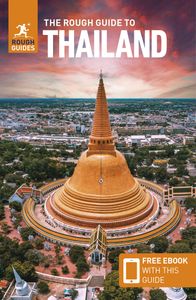
Find even more inspiration here

Planning your own trip? Prepare for your trip
Use Rough Guides' trusted partners for great rates
written by Rough Guides Editors
updated 26.04.2021
Ready to travel and discover Thailand?
Get support from our local experts for stress-free planning & worry-free travels.
- Where to stay
- Travel advice

Destinations

Thailand’s modern capital, home to the magnificent Grand Palace.

A province featuring temples, cafés, and surrounding hill areas.

An island famous for beaches, luxury resorts, and reef diving.

Thailand is packed with magnificent temples.

Traditional Thai Massage
One of the must-do activities in Thailand for many travelers.

Thai Cuisine
Thai food is well-known around the world for its exotic flavors.
Plan a Trip

When to Visit
Here's how to pick the best time to visit Thailand.
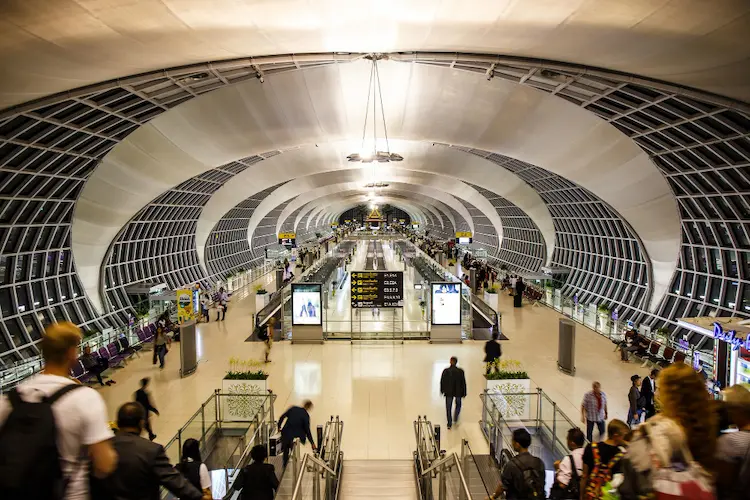
Choose an airline for your trip to Thailand.

Visas & Passports
Check the visa requirements before traveling to Thailand.
Trat Travel Guide
Known for beautiful beaches and islands such as Koh Chang and Koh Ngam.
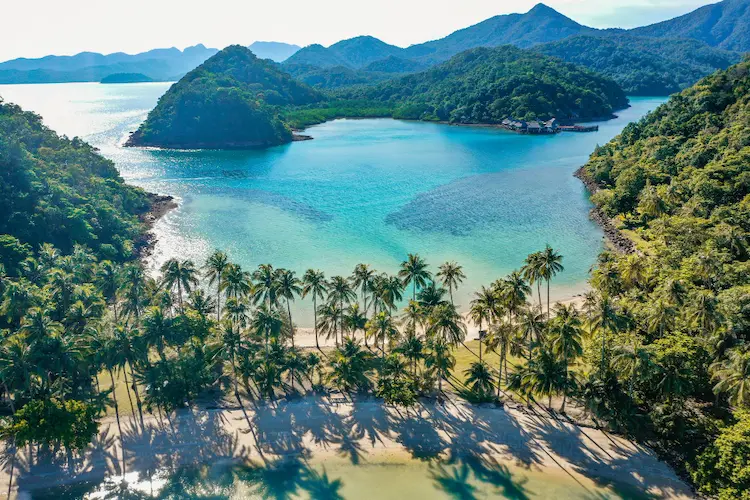
A breathtaking view at Koh Ngam – Trat Travel Guide
Introduction to trat travel guide.
Trat is one of Thailand’s easternmost provinces. It is bounded to the northwest by Chanthaburi Province, to the east by Cambodia, and to the south by the Gulf of Thailand.
Trat dates back to the early 17th century, under the reign of King Prasat Thong of the Ayutthaya Kingdom. After the fall of Ayutthaya to the Burmese in 1767, Trat acted as a checkpoint and buffer city, supplying King Taksin the Great with food before he marched his army from Chanthaburi to Ayutthaya. During the Rattanakosin period, French forces arrived and captured the western portion of Chantaburi Province during the 1893 Paknam incident. In order to reclaim Chantaburi, Siam was pressured to surrender Trat to French Indochina in 1904. However, three years later, the French returned Trat to Thailand in exchange for larger areas along the Mekong river, which included Battambang, Siam Nakhon, and Sisophon.
Trat provides wonderful scenery and a lot of peaceful hideouts for beach and nature lovers, with many islands having long, white, sandy beaches and pristine coral reefs. The province is also a significant fruit-growing, fishing, and gem-mining location. Trat is the principal departure point for travels to the popular Koh Chang island group, as well as excursions to both gem markets and Cambodian border markets.
Table of Contents
- Introduction
- How to get there
- Map of the Province
- Top attractions
- References and Attributions
Credit: A Local’s Guide to Trat—Secret Thailand by Travel + Leisure Southeast Asia
How to get to Trat
Trat Airport (TDX) is a public airport owned and operated by Bangkok Airways Public Company Limited. Bangkok Airways offers flights from Suvarnabhumi Airport (BKK). Another option is to fly to U-Tapao International Airport (UTP) which has more flight options. U-Tapao International Airport is about 3 to 4 hours away from Trat’s city center.
Similar to Chanthaburi, Trat does not have a train station. Pattaya and Marp Ta Put, both on the SRT Eastern Line, are the nearest stations. To get to Trat, visitors must take another method of transportation, such as a van or a taxi from one of the nearest stations. For more information, feel free to visit 12Go for more information.
Trat Bus Terminal is located in the main core of the province. There are multiple bus routes that go from and to Trat. Because Trat lacks a railway station and has a limited number of flight routes, this bus terminal is popular among commuters. Long-distance transport options include buses, minivans, and songthaews. For additional information, please visit the 12Go website. Click Here!
Similar to Rayong and Chanthaburi, the main highway that passes through the province is Highway 3 (Sukhumvit Road). Highway 3 can easily take visitors to the Thai-Cambodia border called Khlong Yai Border Checkpoint as well. Visitors can use Google Maps to assist in driving in Thailand. It is one of the most essential sites for drivers in Thailand.
Map of Trat Province

Click Here to Enlarge the Map
Top attractions in trat.

A lovely tiny island, conveniently accessible by boat from Koh Mak.
A picturesque island not far from Koh Chang.

Koh Chang (Elephant Island)
One of Thailand’s biggest islands, well-known for its trekking routes, waterfalls, and coral reefs.

Koh Kood (Ko Kut)
A picturesque island known for its scenic views and as a honeymoon getaway.

Black Sand Beach (Laem Ngop)
A beach with distinctive black sand located in tamarind forest.

A charming tiny island with white sands and crystal blue water.
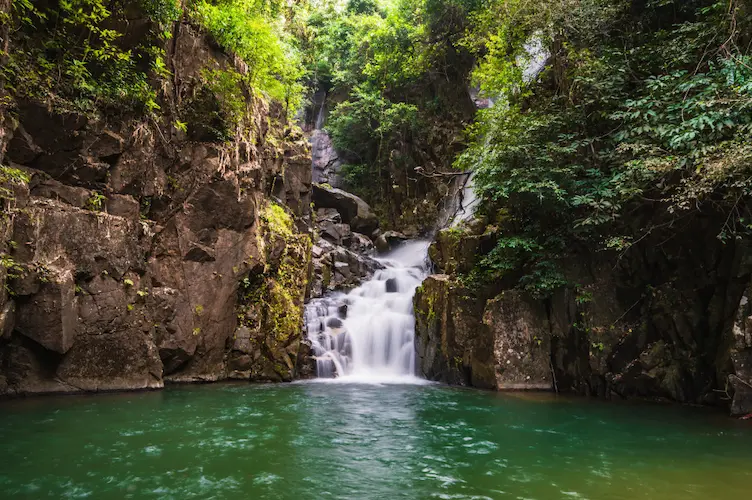
Chanthaburi
Well-known for Chao Lao Beach and Namtok Phlio National Park.

Popular for peaceful beaches and Koh Samet.
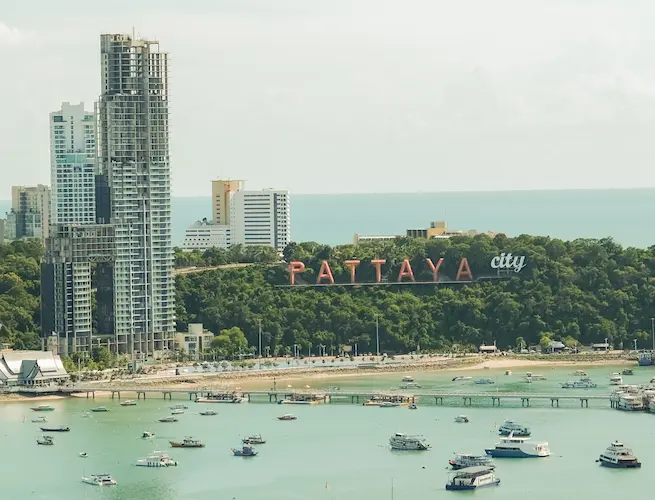
Bangkok’s closest coastal town, best known for its beautiful beaches and fresh seafood.
External Resources
- Trat Weather – Thai Meteorological Department
- Trat Province Official Site

An aerial view of Koh Kham, a small island near Koh Mak – Trat Travel Guide
Summary of trat travel guide.
Trat, which borders the Gulf of Thailand, is home to several islands with white-sand beaches and coral reefs. One of the famous islands is Koh Chang, which known for its natural beauty. Apart from Koh Chang, visitors may visit other islands nearby for different views and experiences. Still finding the right place to visit? Feel free to explore other provinces in Thailand :

- Ubon Ratchathani
A province in Isan region well-known for its national parks and temples.
Book Your Tickets
Book your activities.

Klook is a travel e-commerce platform that specializes in activities and services, reducing the hassle of last-minute planning.
- Culture & Religion
- Food & Drink
- Nature & Outdoor
- Health & Wellness
- Entertainment
- Preparation
- Transportation
- Accommodation
- Itinerary Ideas
- Activities & Tours

A Brief Guide to Trat town

What can you see and do in Trat town?
Trat is Thailand’s eastern-most province, bordering Cambodia along the Khao Banthat mountain range. Trat town serves as a launching point for visitors to the province’s 52 large and small islands, including those of Mu Koh Chang Marine National Park, whose long, white, sandy beaches have made Koh Chang one of Thailand’s top ‘get away from it all’ island destinations.
Trat province is the easternmost in Thailand and borders Cambodia. In the past the area was an important stop for sailors but nowadays it;s best known as the hopping off point for the islands of Koh Chang, Koh Kood and Koh Mak. Very few people choose to stay more than a night in Trat town . However, if you aren’t in a hurry and want to sample some local life then it’s definitely worth a couple of days of your time. There’s cheap accommodation in modern hotels and also a range of budget guesthouses in the old quarter by the riverside. The town is also well known for it’s bustling night market which is a foodies paradise.
Trat town is around 315Km from Bangkok and can easily be reached by public buses from Ekkamai and Morchit bus stations and also by plane. Bangkok Airways fly 3 times a day to their private airport 30Km from Trat town.
The climate in and around Trat is one of the wettest in the country. From May to October the rainy season can deposit as much as 1,000mm per month on the mainland and islands. The upside is that this is a very fertile, green area of the country. You wont see any of the parched landscapes that can be found in the north. It is one of the main fruit growing areas of the country with the main fruit harvesting season being March to August.
Trat has a rich history and it’s population has long been a mix of Thai, Lao, Chinese, Khmer and Vietnamese. In 1904, Trat was briefly annexed by the French army who were then in control of a lot of Indochina. However, it was soon handed back in 1907 in return for border land and what is know the town of Siem Reap. When you visit Trat you will see the old Siamese flag, depicting a single white elephant on red background flying all around the town. This is to celebrate the province’s independence.
For those looking to kick back and save some cash, Trat town is one of the cheapest destinations in Thailand. It’s still not too difficult to find a private fan room and three cheap meals for a couple of hundred Baht. And if you need a little more luxury, the town’s best guesthouse – the Rimklong Boutique Hotel – is around 1,000 Baht / night. Other new hotels in the town centre include Trat City Hotel, Toscana Resort and Chivapuri Residence. All are around 1,000 – 1,200 Baht/night for a modern hotel room.
Trat town centre is a centred around the indoor market. From here you can take a songthaew to the ferry piers for Koh Chang or a kilometre out of town to the bus station, from where it’s easy to head to Bangkok or the Cambodian border at Hat Lek.
The streets in the town centre are lined with ‘Mom & Pop’ stores selling everything imaginable. The architecture tends to be drab, grey shophouses but there are some hidden gems as you approach the riverside area. It’s here that you will find a much more charming area with old wooden homes lining the narrow streets, some of which have been converted into budget guesthouses, coffee-shops and small restaurants.
History of Trat town
The history of Trat can be traced back to the reign of King Prasat Thong of the Kingdom of Ayutthaya. Formerly known as Muang Thung Yai, Trat has played an important role in the development of country’s stability and economy due to its strategic location. The town of Trat has later become a community of Chinese Merchants.
Trat served as a checkpoint and buffer city in 1767 and was responsible for providing provisions to King Taksin the Great before he moved his navy from Chanthaburi to Ayutthaya, where he expelled the Burmese and liberated the Kingdom from Burmese rule.
In the Ratanakosin period, during the reign of King Rama V, Trat played an important role again in stabilizing the country’s sovereignty. King Rama V made an agreement with the French government (who had also taken Chanthaburi under its supervision) to get Trat back. In doing this, Phra Tabong, Siamrat and Sri Sophon were traded off.
How To Get to Trat
By Car From Bangkok, take Highway No. 34 (Bang Na-Trat) or Motorway to Chonburi, then use Highway No. 344 (Ban Bung-Klaeng) Arriving at Klaeng, turn onto Highway No. 3 and proceed to Trat. The total distance from Bangkok to Trat is 315 kilometers.
By Bus Both air-conditioned and non air-conditioned buses depart from Bangkok’s Eastern Bus Terminal (Ekamai) to Trat every hour from 6 a.m. to midnight. From Bangkok the buses to Trat cost 209 baht for 1st class air-conditioned buses (182 baht for 2nd class) and 247 baht for 24-seat VIP air-conditioned buses or 113 baht for regular buses. The trip takes five to six hours by air-conditioned bus or about eight hours by regular bus.
For more information, contact Transport Co. Ltd at Tel: 0-2391 -4164, Cherd Chai Tour Tel: 0-2391-2237, Chok Anukun Tour Tel: 0-2392-7680 and Suppharat Tour Tel: 0-2391-2331.
Several non air-conditioned buses leave daily, starting from 07.00a.m.-11.00p.m. Fare is 78B (Tel.02 391-2504). Air-conditioned buses leave every 1.30 hours, starting from 07.00a.m.-11.00p.m.. Fare is 140B (Tel. 02 391-4164).
From Chanthaburi to Trat, the regular bus takes about an hour.
Getting to Koh Chang from Trat
Ferries depart either from Ao Thammachat Pier, or Centre Point pier between 06.30 a.m. – 07.30 p.m., with a travel time of 30 – 45 minutes. Foot passengers pay 80 Baht one way on either of the ferries.
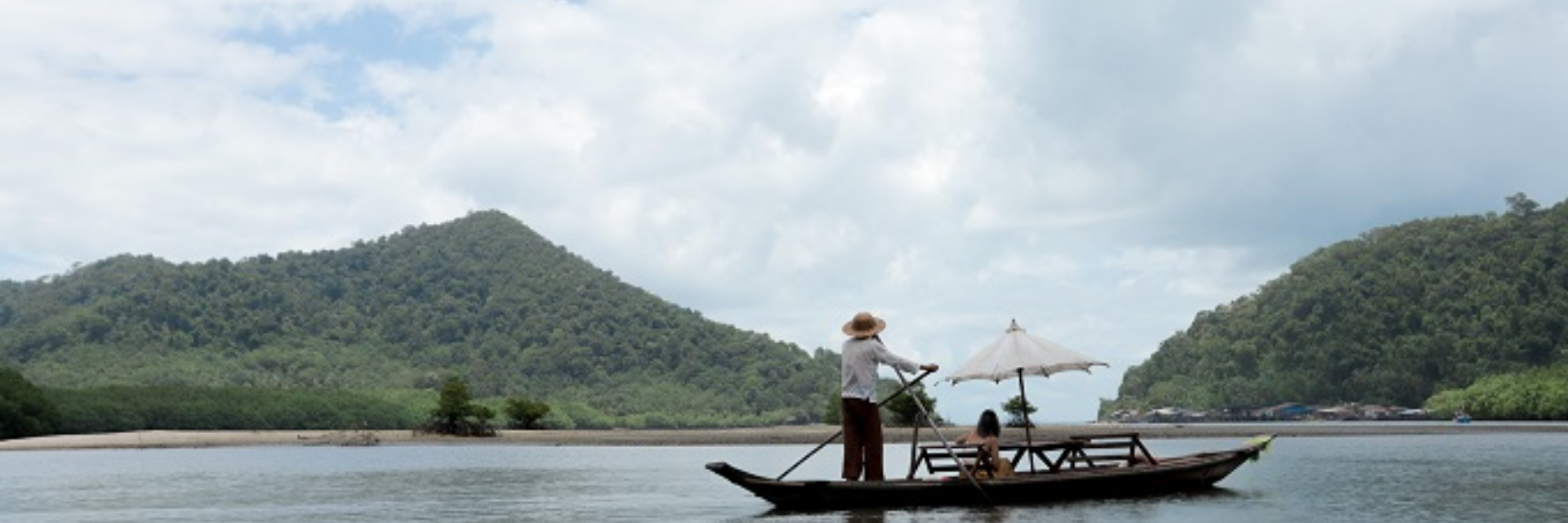
3-Day Trat Travel Guide: Explore the Land of the East at its Finest!
When talking about Trat, most might think of its white sandy beaches and glistening blue sea. However, we would like to introduce you to another part of this scenic land where you can enjoy various activities, such as relaxing at a unique chicken coop spa, tasting flavourful grilled squid, gliding through a mangrove forest at Baan Tharanae, admiring the clear water by boat, and more.
This three-day trip will allow you to create a new chapter of your Thailand experience while catching a glimpse of the local way of life.
To start the journey, from Bangkok hop on a public tour bus at Mochit Passenger Terminal #2 at 7.30 A.M. to arrive at Trat at approximately 12.30 P.M. The fare costs 259 Baht and you can make your booking on the Transport Co., LTD website.
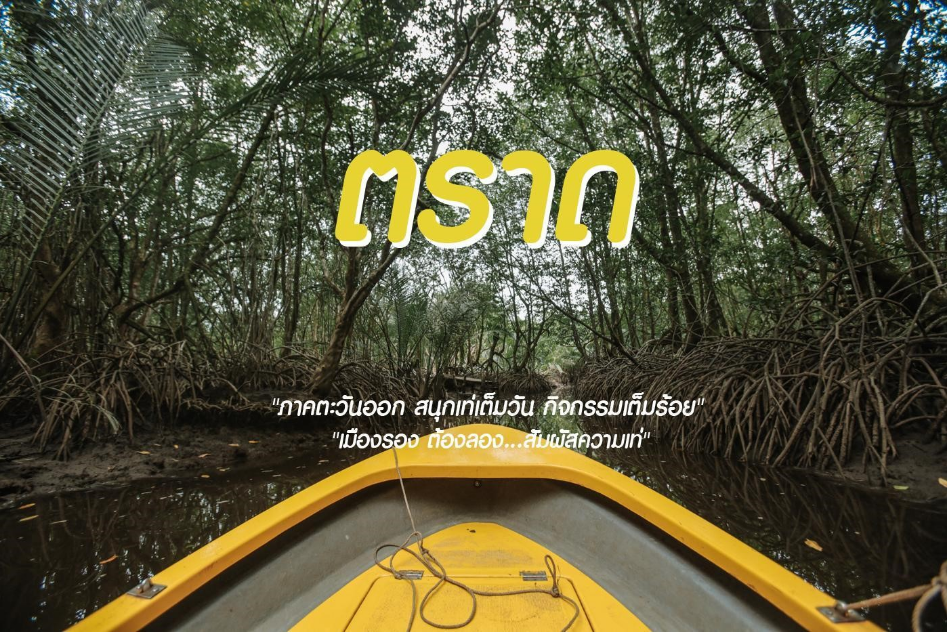
For your first stop in Trang, surround yourself with nature at the Miracle of Mangrove at Baan Tharanae.
Destination Details
The eco-tourist community of Baan Tharanae sits on the estuary of the Trat River and is home to a verdant mangrove forest. The mangroves are known for their abundant root system and untouched natural setting, which will envelop you right after stepping onto the inner part of the forest – an area where a giant taboon (a plant species found only in mangrove areas) can also be found. Since the mangrove forest takes up most of the coastal area, the best way to travel around is to hop on a boat and sail through the waters while learning about the community’s history and local way of life. Don’t miss out on taking a boat tour, during which you will be guided by a local tour guide through the three sections of the mangrove forest.
If you come here during low tide, there is a chance for you to see giant mangrove roots, which only become within reach during a particular period of each month – don’t forget to take a cool selfie!
After the boat tour, take a break by having some delish local dishes that you can find only at the Tharanae community. You can also see how the locals weave traditional baskets using nipa palm leaves, choose to stay overnight in a homestay, learn about the region’s sea mistletoe (used in herbal remedies), edible mangrove and aquatic animal conservation, be amazed by the medicinal properties of the taboon root, and learn how to make traditional woven hats and crafts.
Activity Expense
A boat trip to admire the impressive mangrove roots costs 100 Baht per person (a minimum of three people are required).
Contact Information
The Miracle of Mangrove – Baan Tharanae is open every day from 8.00 A.M. – 5.00 P.M.
If you’re interested in joining any of these wonderful activities, call 086-141-0958 (Aunt Lamoon – catering staff), 087-138-2844 (Uncle Manote – boat-handling assistant) and 081-161-6694 (Uncle Saichon – activity staff) or visit https://www.facebook.com/bantharanae/
Restroom and free car park
How to Get There
By your own vehicle : Please refer to the coordinates in this link https://goo.gl/maps/iBjFLBvC96UcEeGe9
By public transport : Take a tour bus from Mo Chit #2 station to Trat’s bus station in Trat province. After that, hop on the public bus (provided by the Transport Company - บขส) on the Laem Sok line. The fare is 40 Baht per person (300 Baht in case you want to rent the whole ride for your group) and you can get dropped off at Baan Tharanae.
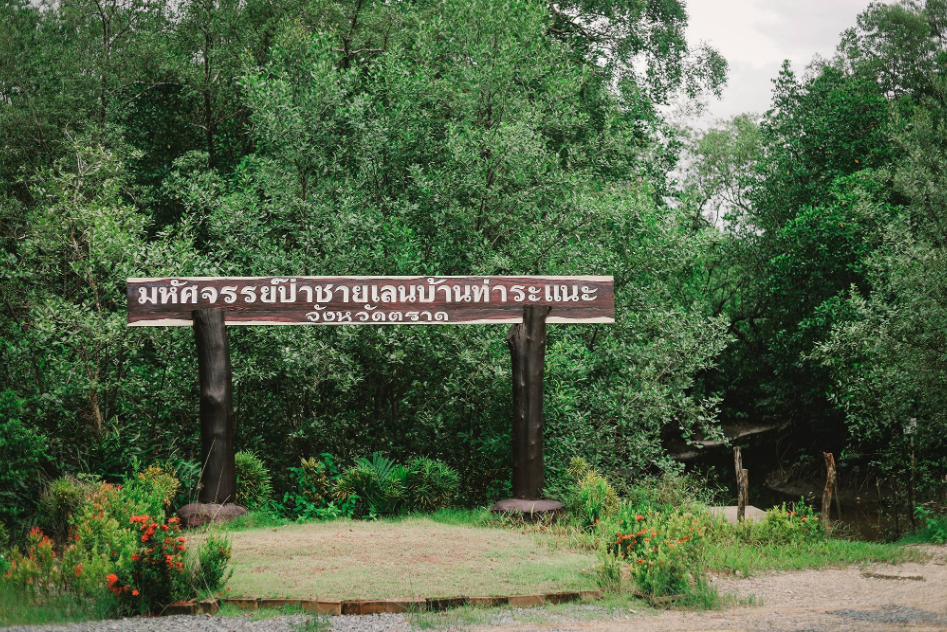
After touring the mangroves, continue on for lunch at Sukhumvit Crab Noodles (Kuay Taew Poo Sukhumvit).
This famous noodle house is known for its long-standing reputation of serving excellent noodles for more than 40 years. Don’t be fooled by its size; the main draw is inside of each dish: fresh shellfish, noodles, boiled seafood, and more. All are served using only top-grade ingredients to guarantee the best taste and texture at a reasonable price you don’t have to worry about your wallet. You can choose to dine at the restaurant (car park provided) or order for take-out as you wish!
Recommended Dishes
Salty and spicy fried rice topped with a seafood omelet, fried rice with bird chillis topped with crab roe and crab meat, or stir-fried rice with basil and mantis shrimp topped with crab roe.
Cost for a Meal
Starting at 50 Baht per dish
Kuay Taew Poo Sukhumvit is open every day from 8.00 A.M. – 2.30 P.M. Tel. 039-511-972
By your own vehicle : Please refer to the coordinates in this link https://goo.gl/maps/v9xzbZnHgeWZcqfw6
By public transport : Start by grabbing a blue public minibus from Trat Passenger Terminal using the Trat – Laem Gnob Route, and get off at the same soi as Muek Yang Yai Sang. Walk inside past Sukhumvit Soi 19 – 33 for around 150 metres; you will arrive at Kuay Teaw Poo Sukhumvit.

Follow your meal with a snack from Grandma Sang’s Grilled Cuttlefish (Muek Yang Yai Sang).
The grilled cuttlefish sold at Muek Yang Yai Sang are dubbed as one of the province’s best snacks and something you must try at least once before leaving Trat. This secret spot has been running for more than 40 years, with a specially-formulated signature sauce that enhances the cuttlefish’s chewy texture. Grandma Sang uses only fresh cuttlefish, grilled over a charcoal brazier to infuse the meat with a distinctive aroma that makes it even tastier. Since this hawker stall is located inside a small soi, you may need to park your car outside on the main street and walk a little ways.
15 Baht per skewer
Muek Yang Yai Sang is open every day from 3.00 P.M. – 6.00 P.M. Be quick because the place’s specialty runs out very fast! If you don’t want to miss out, you can also reserve your cuttlefish skewers ahead of time by calling 084-784-7646.
By your own vehicle : Please refer to the coordinates in this link https://goo.gl/maps/xRWECcnMK9EdEmzdA
By public transport : Start by grabbing a blue public minibus from Trat Passenger Terminal, using the Trat – Laem Gnob Route, and get off at the soi where Muek Yang Yai Sang is located. Walk inside and past Sukhumvit Soi 19 – 33 for around 210 metres and you will arrive at Muek Yang Yai Sang.
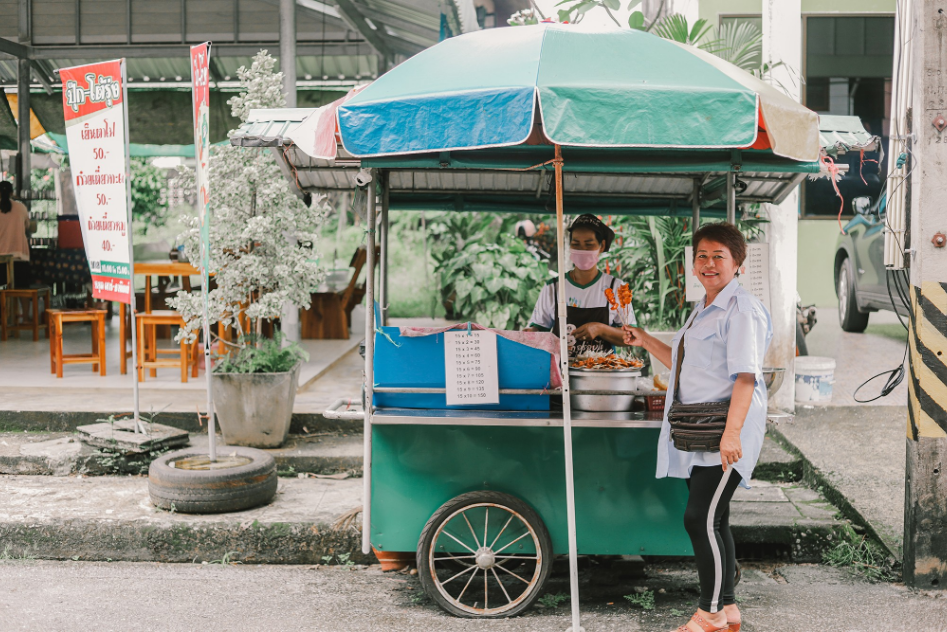
Now it’s time for dessert at Aunt Na’s Grilled Banana (Kluay Ping Ba Na), which is just a few steps from Muek Yang Yai Sang.
Kluay Ping Ba Na is one of the region’s first and original snack shops that made itself a part of the locals’ everyday lives for now more than 40 years. This legendary shop, run by Ba Na (Aunt Na), uses only the finest quality of nearly-ripe bananas, which are grilled over a charcoal brazier, leaving the snack with a fragrant aroma. Try eating these freshly grilled bananas with the secret-recipe sauce, containing coconut milk, that will surely make you crave for more.
Another treat you should not miss is the pickled salak, or snake fruit. Unfortunately, this speciality is only available in April and May. If a bag of the tasty bananas aren’t enough to fill you up, there is also a fried Chinese pancake that comes with seven different fillings for you to choose from.
The atmosphere here is quite homey as the shop was modified from a two-storeyed house. However, you should get your treats to go since there are no tables reserved for guests.
3 pieces for just 20 Baht
Kluay Ping Ba Na is open every day from 10.00 A.M. – 5.00 P.M. You can call to check the queue and reserve a spot in advance at 039-520-990.
By your own vehicle: Please refer to the coordinates in this link https://goo.gl/maps/XNucHbXW9ghhWan17
By public transport: Hop on a public bus provided by the Transport Co., LTD in Trat and hop off at the Municipal Market. After that, head to Soi Rong Nam Kang and continue straight; you will see a two-storeyed house in which Pa Na holds her place of specialty.

After finally getting full, check in for a good rest at Baan Pu Resort – Trat at 4.00 P.M.
Formerly known as Baan Pu Resort & Spa, Baan Pu Resort has been open for more than 30 years. The hotel offers a great dining experience through its equally-famous restaurant. Additionally, this place provides many facilities to ease any traveller stress or fatigue while also placing importance on conserving nature by utilising all its resources to the fullest.
In the old days, Baan Pu used to be a farm and then was renovated into Suan Pu Restaurant before eventually becoming a hotel. Most of the guests here usually come in a group to use the hotel’s space for business seminars.
There are eight room types, which are suitable for couples and even groups of friends. The hotel also offers various facilities such as a swimming pool.
Cost for One Night
From 1,000 – 7,000 Baht
You can call Baan Pu Resort – Trat for a reservation at 039-510-577, 083-699-6893 or contact http://banpu-resort-trat.chillholiday.com/
Reception for checking in is open from 11.00 A.M. – 11.00 P.M. Check-out is by 2.00 P.M. If you will be checking in after 23.00 P.M., please call 083-699-6893.
By your own vehicle : Please refer to the coordinates in this link https://goo.gl/maps/RMBGgNcq3qUeRjb2A
By public transport : Take a tour bus from Mo Chit #2 station to Trat’s bus station in Trat Province. After that, hop on the public bus using the Laem Sok line. The fare is 40 Baht per person (300 Baht in case you want to rent the whole ride for your group) and you can get dropped off at Baan Tharanae.
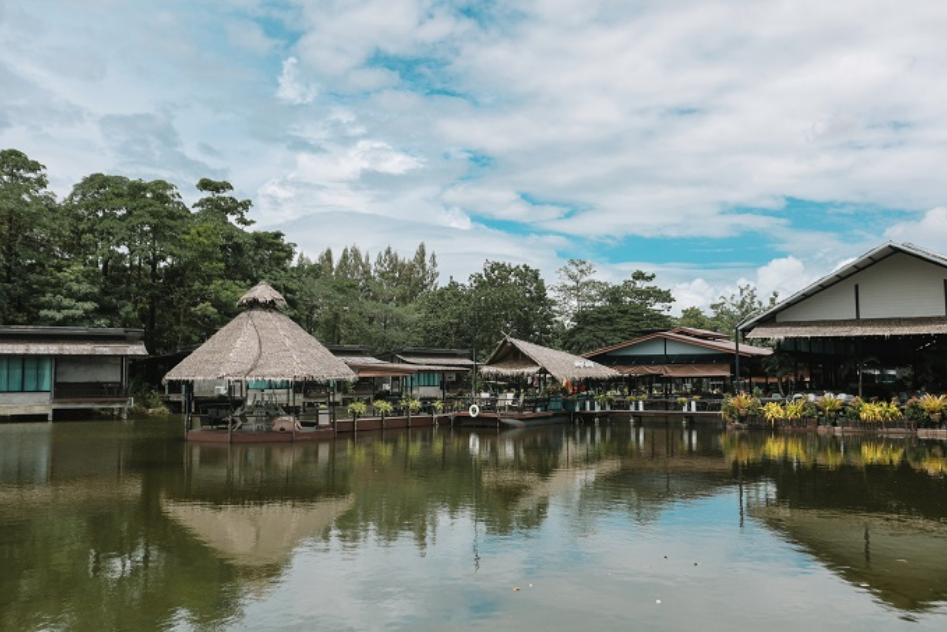
In the evening, stroll around the Rai Rang All-Night Market to feel an evening breeze.
Rai Rang All-Night Market is one of the big fresh food markets near Mueng Trat Municipality located on Soi Rai Rang. Besides the food hawkers along both sides of the road, which are the market’s main attraction, you can also come here to observe the authentic, local culture. If you’re still full from the afternoon, here you can also shop for just desserts, clothing, snacks, and more.
For those who love to explore Thailand’s walking streets, you’re likely to fall in love with this market’s joyful vibe. Rai Rang All-Night Market is comprised of different shopping zones and you can expect crowds during the weekend. Since this market sits in the heart of the city, you can either take a bus or simply just drive to the market (there is a car park near the market).
Rai Rang All-Night Market is open every day from 03.00 A.M. - 12.00 P.M. and then again from 3.00 P.M. – 9.00 P.M.
By your own vehicle : Please refer to the coordinates in this link https://goo.gl/maps/LBTQnd6horzuwpQV8
By public transportation : Catch a public bus at Trat’s Passenger Terminal on the Rai Rang Market line that goes directly to the market. Look on the left-hand side for a signboard pointing to the entrance of the market.

Check out at 08.00 A.M. and catch the ferry from Natural Bay Pier at 08.45 A.M. to Koh Chang with an estimated travel time of 30 minutes.
Rent a public car to Salak Petch Lighthouse to take some photos and enjoy the scenery.
This white lighthouse prominently stands at Salak Petch Bay. It took nine years to construct and has now been in operation for four years, serving as a landmark to fishing boats.
Around the lighthouse, you can find a long pathway, surrounded by sea and mountains and with shelters from the sun, leading to one of the many stunning sunset viewpoints in Trat.
For aquatic activities, you can take fishing boats to diving sites at islands such as Koh Wai, Koh Rang, Koh Yak Lek, Koh Yak Yai, etc.
Entrance Fee
By your own vehicle : Please refer to the coordinates in this link https://goo.gl/maps/Hdq1ztWa8zxSKgz16
By public transport : Take public vehicles available on Koh Chang to Salak Petch Pier on the east side of the island. Estimated distance is 22 kilometres, taking around 20-26 minutes.
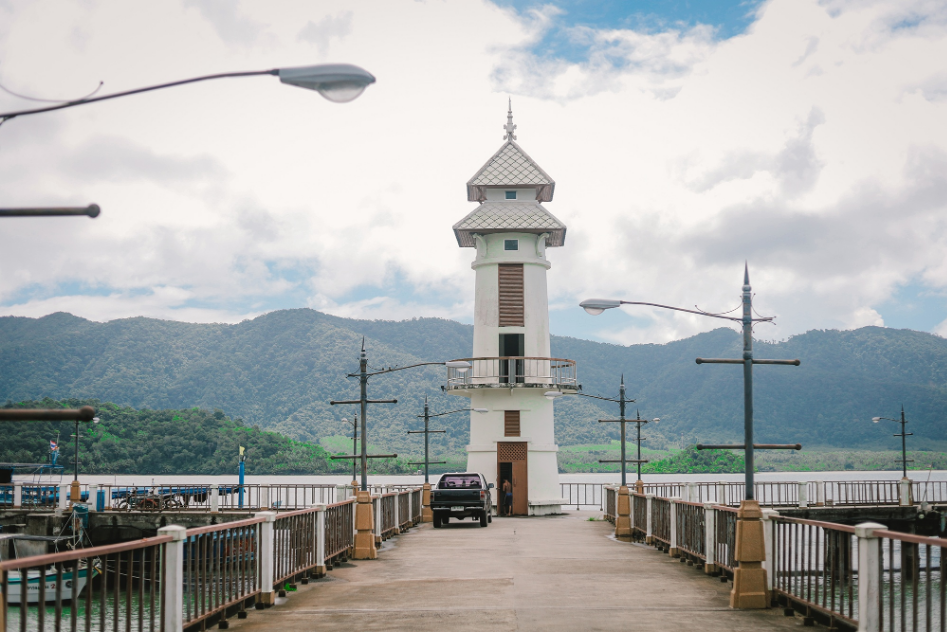
Stop for souvenir shopping and lunch at Ban Rak Kala Community Enterprise , in close proximity to Salak Petch Bay.
Ban Rak Kala Community Enterprise has been running for ten years. Here the villagers’ primary occupation is cloth making and they have formed a community enterprise that is now also a tourist destination. The community enterprise creates décor and homewares from coconut shells to help earn more community income.
Ban Rak Kala Community Enterprise is open from 8.00 A.M. - 6.00 P.M. Tel. 096-807-2731 / 098-489-0906
By your own vehicle : Please refer to the coordinates in this link https://goo.gl/maps/BZ4srhDj37esUSZc9
By public transport : Take a local minibus straight to the village. (The fee for renting the entire vehicle is 1,000 Baht or 100 Baht per person. After 3.00 P.M., only the whole car rate is available.)

Next, stop at Salak Khok Community Tour Club in a small fishing village surrounded by untouched nature.
Founded in 2005, villagers in Salak Khok Bay, whose main livelihood relies on fishing, formed a community tour club to support ecotourism initiatives as a side occupation. You can go kayaking, canoeing, ride a gondola-style boat, observe the region’s various flora, and learn about the local fishing practices.
Tourists who visit here get to experience and learn about the authentic way of local fishermen’s lives, as well as eat and shop at the restaurant and souvenir shops.
Activity Fee
Kayaking – 100 Baht per person. Two persons per kayak.
Canoeing – 200 Baht per for person 40 minutes. One boat can carry four people.
Salak Khok Community Tour Club is open from 8.00 A.M. - 4.00 P.M. You can contact them for information before going at 087-748-9497 (main) 083-115-5677 (secondary) or leave your questions at https://www.facebook.com/SalakKhokKayakStation
By your own vehicle : Please refer to the coordinates in this link https://goo.gl/maps/BUiBf98tgBkr3wR37
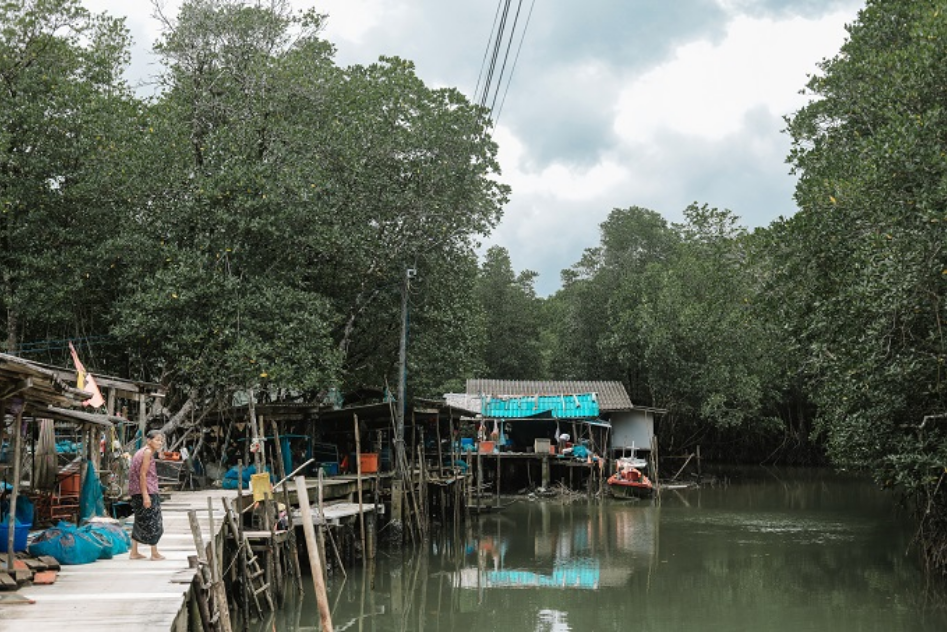
After a half-day of sightseeing, relax and unwind at The Emerald Cove Koh Chang .
Located on Klong Prao Beach, The Emerald Cove Koh Chang has won various accolades over the past ten years in operation. All eight of the property’s room types provide complete amenities and marvelous views. Standing at the pool is a statue of ‘Khun Dech’, signifying gratefulness to the sea and natural resources.
If you seek tranquillity and privacy, this hotel is for you - its large swimming pool right by the sea and the sunset views are out of this world.
Starting from 2,200 Baht
The Emerald Cove Koh Chang opens for check-in at 2.00 P.M. and check-out is at 12.00 P.M. Call 039-552-000 to make a reservation or see more information at https://www.emeraldcovekohchang.com/th/index.html
By your own vehicle : Please refer to the coordinates in this link https://goo.gl/maps/jk4RJpjvnhPV1F8U8
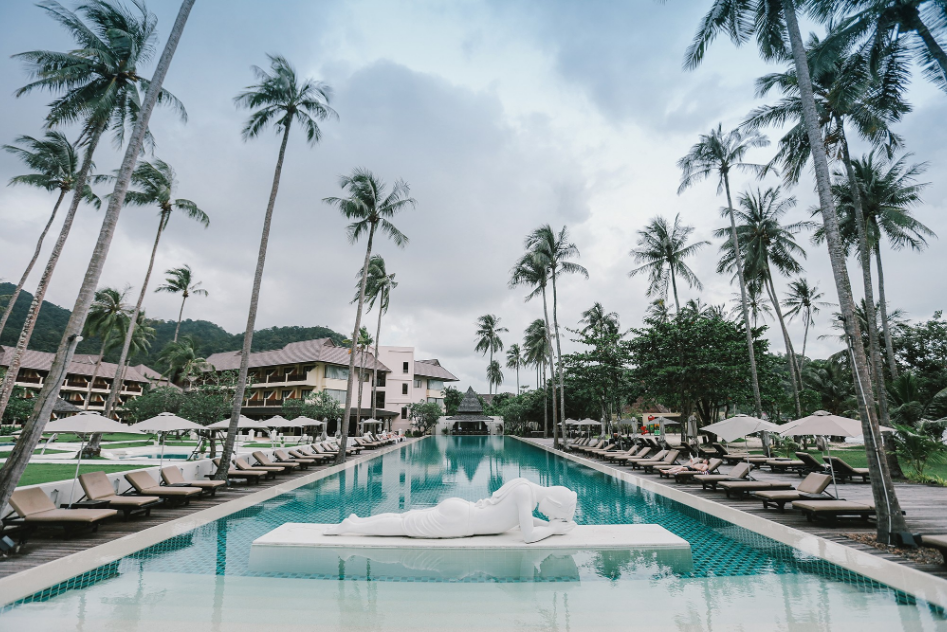
Before the day is over, go to the Kai Bae Viewpoint , which is not far from the hotel.
Kai Bae Viewpoint is a popular viewpoint in Koh Chang National Park and a must-see stop for all visitors. From the two-storey viewpoint, you can see three islands: Koh Mun Nok, Koh Mun Nai, and Koh Yuak.
Most prominent is the red postbox at the viewpoint. At sunset, this might be the most romantic spot ever.
Kai Bae Viewpoint opens from 8.00 A.M. onwards.
By your own vehicle : Please refer to the coordinates in this link https://goo.gl/maps/pJqP4fCchD6UXC1G6
By public transport : Take a local minibus straight to the village. (The fee for renting the entire vehicle is 1,000 Baht or 100 Baht per person. After 3.00 P.M., only the whole car rate is available.)
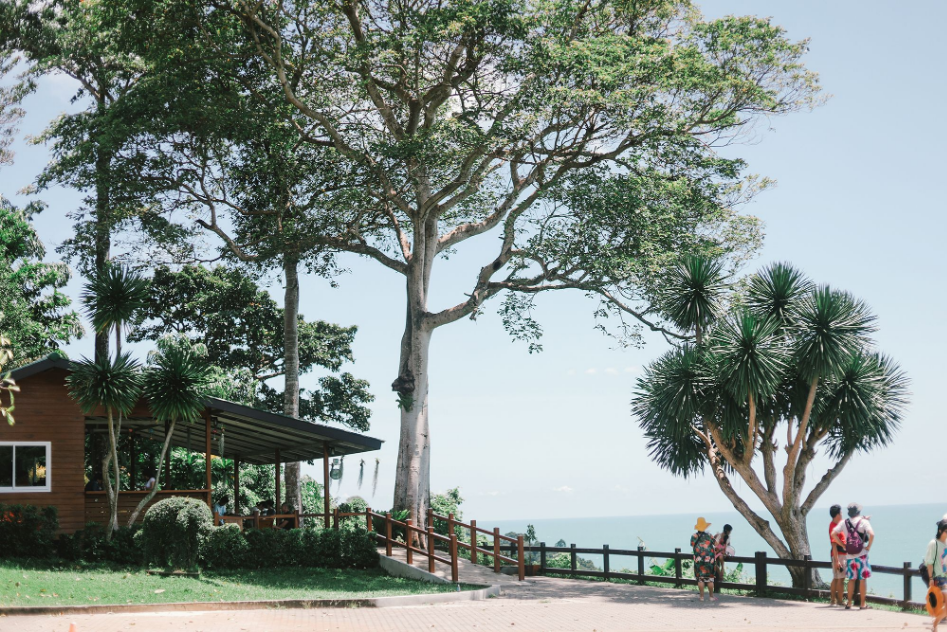
Check out from the hotel and take the ferry back to mainland Trat. Catch a white minibus from the pier and head to Rimtalay Seafood and Resort for breakfast.
Rimtalay Seafood and Resort is a local restaurant that has been open for over 20 years where you can choose indoor or outdoor (seaside) seating and enjoy the view of Koh Chang.
The restaurant is easy to get to, as it is near the ferry pier to Koh Mak and Koh Wai. If you come in the evening instead, you can watch the sunset while indulging in fresh seafood that has pleased the tongues of many travellers.
Stir-fried crab in curry powder, fried cashews with herbs, crab chilli dip with vegetables, and steamed crab.
Rimtalay Seafood and Resort is open from 10.00 A.M. - 9.00 P.M. Make reservations by calling 039-597-084 / 061-989-9536 / 099-552-3665 or through https://www.facebook.com/rimlaylaemngob/
By your own vehicle : Please refer to the coordinates in this link https://goo.gl/maps/RL1PYYszjGmQSz9XA
By public transport : Take the blue minibus on the Trat-Laem Ngop route. The fare is 60 Baht per person. Tell the driver to stop at Rimtalay Seafood.
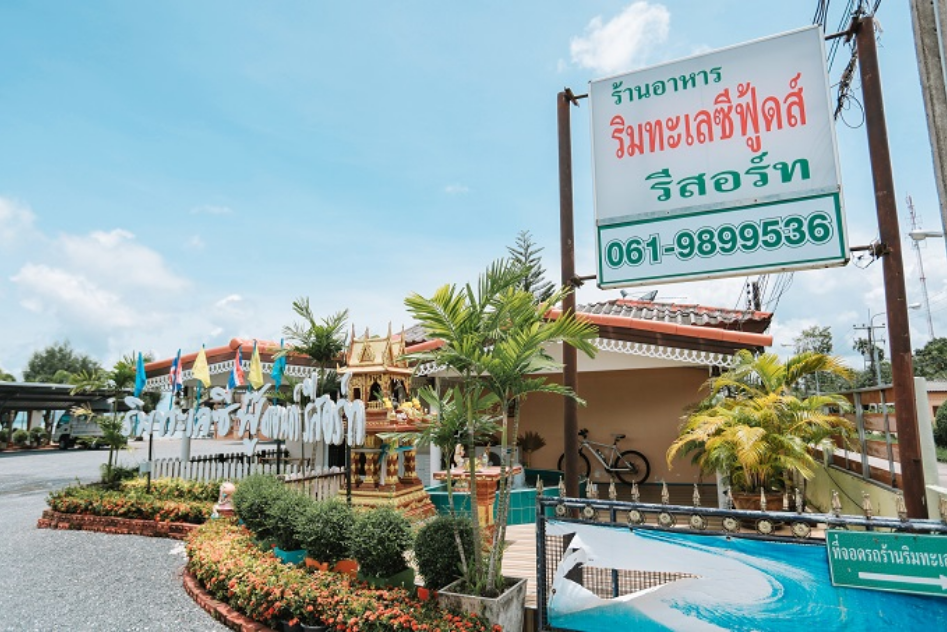
A meal is not complete without dessert. Find sweets and souvenirs at Sompoch Orchard in Ban Tai Wang.
Opened in 1994, this fruit orchard covers 32 acres with 80% of the orchard dedicated to growing salacca, also called snake fruit, and the remaining 20% to various seasonal fruits.
The variety of salacca grown here is carefully selected sumalee, known for its sweetness and yielding produce all year long. The orchard’s salacca in syrup uses 7-month-old fruit, which is still a little acidic and meaty and goes best with syrup. Other salacca is harvested at the prime age of eight months and delivered throughout the country. You can take a walking tour in the orchard or simply take photos!
Sumalee salacca in syrup - 60-100 Baht per cup
Salacca – 100 Baht/kg
Sompoch Orchard is open every day from 8.00 A.M. - 6.00 P.M. Contact them before going at 081-4382015 / 081-924-9695 / 039-674840 or at https://www.facebook.com/suansompotch.trat/
By your own vehicle : Please refer to the coordinates in this link https://goo.gl/maps/9RP99zAVviKaFggF6
By public transport : Take a public vehicle from the terminal to the Trat market. The fare is 20 Baht per person. Then, take a bus to Saen Tung. The fare is 30 Baht per person. Get off at Wat Wang Krajae and walk for three kilometres.
A more convenient way to get there is to rent an entire van from the terminal that goes directly to Sompoch Orchard. This costs 500 Baht for a roundtrip or 200 Baht one way trip.
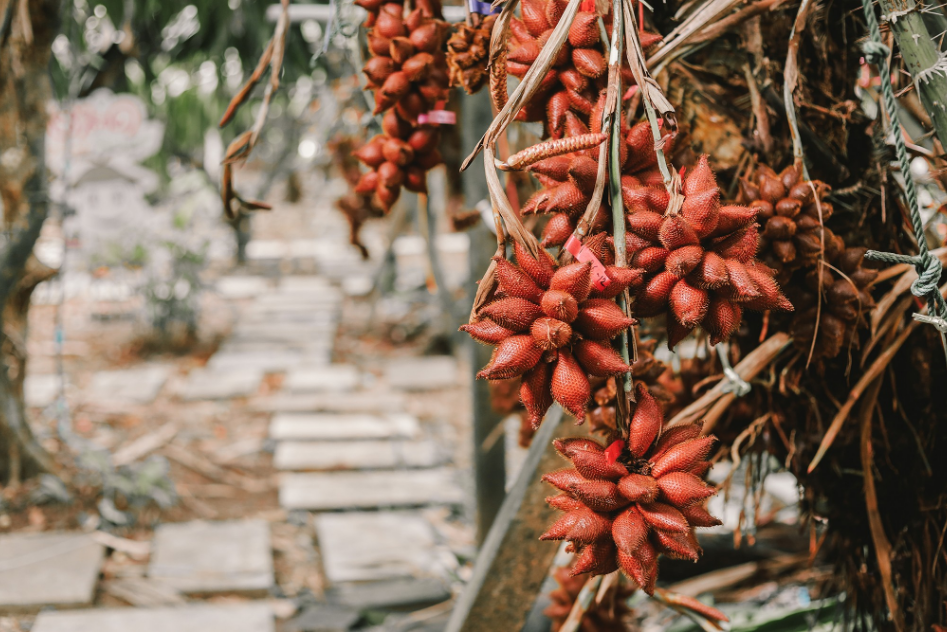
Afterward, enjoy a last lunch at Rim Kheuan Tom Yum Noodles .
This noodle restaurant near a reservoir has been open for three years. While it used to only make chicken rice, the restaurant now sells mainly noodles.
Its menu includes seafood, chicken rice, and dessert, as well as free beverages. All ingredients are super fresh. You can from choose indoor or outdoor seating and parking lot is also available.
Rice topped with seafood, mantis shrimp and crab meat noodles, and seafood noodles.
Rim Kheuan Tom Yum Noodles is open every day from 6.00 A.M. - 3.00 P.M. Contact for reservations or information by calling 092-324-4665 or at https://www.facebook.com/tradnoodle/
By your own vehicle: Please refer to the coordinates in this link https://goo.gl/maps/39RhCSF8ainEDZ5X7
By public transport: A convenient way is to reach Rim Kheuan Tom Yum Noodles is to rent an entire van from the terminal to go directly to the restaurant.
After lunch, relax in chicken coop spa at Chong Ban Chang Toon eco-museum before heading back to Bangkok.
Opened in 2012, this community-based tourism centre originated from the ideas of villagers who wanted to preserve their local culture. It has received much support and become the centre of the community.
The highlight here is the unique chicken coop spa – the one and only in Trat – made from a traditional cage-like basket typically used to house chickens and roosters. Household herbs, such as lemongrass, kaffir lime leaves, lime leaves, and turmeric, are used for the steamy spa treatment, making good use of local wisdom as suggested by the late King Rama IX’s sufficiency economy philosophy.
Other activities include a white mud treatment, ruby panning, learning out to make herbal inhalers, and seeing how traditional baskets and other items are woven by hand.
Activity Fees
Chicken coop spa - 300 Baht per person for 15-20 minutes.
White mud treatment - 200 Baht per person for 10-20 minutes.
Making herbal inhalers - 50 Baht per person.
Basketry and weaving - 50 Baht per person for 20-30 minutes.
*** All activities require a reservation. Prices are the same for Thais and foreigners.
Open from 9.00 A.M. - 4.00 P.M. Make reservations by calling 084-8637267 or going to https://www.facebook.com/changthun.ecomuseum.th
By your own vehicle : Please refer to the coordinates in this link https://goo.gl/maps/B7EHGJRj4dovCHdD6
By public transport : A convenient way is to reach Chong Ban Chang Toon is to rent an entire van from the terminal to go directly to the eco-museum.

That concludes your unique trip to Trat. Make sure to visit and experience it for yourself. You will be surprised by what Thailand’s secondary cities and provinces have to offer!
Get Inspiration
Destination
4 Natural Tourist Attractions in...
See & Do
Trat Travel Guide
In a nutshell.
Close by to the Cambodian border in the southeast, Trat is one of the cheapest provinces in Thailand and the main transport hub for reaching the archipelago of eastern islands, including Koh Chang , Koh Kood and Koh Mak .
Why go to Trat
However, if you scratch beneath the surface, you'll soon find that Trat is more than just a convenient stopover. In the town itself, the old quarter has some lovely guesthouses and restaurants, several markets, and is perfect for observing local Thai life.
A visit to the southern coast of Trat is also worthwhile, as its home to several gorgeous beaches, good value resorts, a fishing village, and waterfalls .
It's also possible to travel all the way to Hat Lek at the Cambodian border, along scenic coastal roads, and there's even a market to explore at the end of your journey. Other sights in Trat include various temples, mangroves, and a very special opportunity to see extremely rare Irrawaddy dolphins (if you’re lucky!).
When to go to Trat
Where to stay in trat.
For accommodation, there’s plenty of choice in both Trat town, and along the southeast coast .
In town, most of the accommodation is in the form of charming and good value guesthouses in the old quarter , or basic but comfortable hotels in the city center area. The most popular choices in the old quarter are Ban Jaidee and Rimklong Boutique Hotel, whilst in the city centre, both Trat City Hotel and Trat Center Hotel are good choices.
Along the southeast coast, there are several wonderful resorts that offer guests a relaxed atmosphere and excellent facilities. Mairood Resort is probably the best option for travelers on a tighter budget, whilst Centara Chaan Talay Resort and Mango Beach Resort are perfect if you are looking for something a bit more luxurious.
Where to eat in Trat
The majority of restaurants in Trat can be found around the old quarter area, but for a real local experience, you should definitely venture to one of the local markets and try some authentic local dishes, including fresh curries, noodle soups, sweet treats and roasted meats.
If street food isn't really your thing, there are several great Thai eateries (Namchok and Sang Fah), plus a few Western spots too. The most popular international restaurant in Trat is Joy's Pizza, which is the perfect place for satisfying Western food cravings. Along the coast, you’ll find an array of seafood restaurants; we really enjoyed Hat Ploy Dang.
How to get to and from Trat
From/to Bangkok Getting to Trat really couldn't be any simpler; it really depends on your budget and how quickly you want to get there.
If you don't mind spending a bit more, a flight between Bangkok (Suvarnabhumi) and Trat airport is from THB800 one-way. From there, its 30km to Trat town, and you should use either the shared minibus service or arrange a transfer in advance.
Alternatively, you can catch a bus from Bangkok, which is a much cheaper option. The best bus terminal to use is Ekkamai (eastern), with at least one bus departing every hour between 5.00am and 11.30pm (ticket price THB270 per person, one way). If you catch a bus around 12.30pm, you'll arrive in time to settle in and have some dinner, arriving at approximately 6.30pm (journey duration is roughly six hours).
Buses back to Bangkok from Trat run on a similar schedule, but the first bus is not until 7.00am.
Another option from both terminals is to use the minibus service (more frequent at Morchit), which is similarly priced but the journey is slightly shorter at 5 hours. There are also buses from Morchit terminal (every three hours from 8.30am to 5.30pm), but they are much less frequent, and if you are using the BTS, you'll have to get a taxi to reach the bus terminal.
From/to other destinations of the Eastern Seaboard Other destinations that have a bus route to Trat include Pattaya , Rayong , Koh Samet , and several towns in Cambodia too ( Sihanoukville and Siem Reap ).
From/to Cambodian border Trat is sometimes used by travellers as a base to cross over the Cambodian border, but note that Hat Lek– Koh Kong border crossing is notorious for visa scams and even if you have already your Cambodian visa, you are 100% sure be asked to ‘tip’ for a quick lane or whatever.
There are regular songthaews from Trat bus station to the border leaving when full at a fixed price of THB50 per pax. It is about 80 km to the border, so the whole trip will take between one hour and one hour and a half.
From/to the islands As mentioned above, Trat is mostly used as a transport hub for reaching the islands off its coast, with various boat options available depending on which island you want to visit.
Whilst there are around 52 islands, the most popular and developed are Koh Chang, Koh Kood and Koh Mak.
The closest island is Koh Chang, with journey times around 30 to 45 minutes. The Koh Chang ferry departs from the mainland at Ao Thammachet Pier, and the Centrepoint ferry departs from Dan Kao pier. Both ferries cost around THB80 one-way, or THB120 for a return trip. The ferries accommodate foot passengers, cars and motorbikes.
The next closest island is Koh Mak, with ferries and speedboats departing Trat from Laem Ngop pier (ferry cost is THB350, speedboat cost is THB600).
Finally, Koh Kood can be reached from Laem Sok pier, by both ferry and speedboat at the same price as Koh Maak.
The piers for both Koh Chang and Koh Mak can be reached by songthaews that depart from Trat bus station (price is around THB50 to 60 per person), whilst the boat tickets for Koh Kood include a minibus transfer.
Choosing which island to visit really depends on what sort of holiday you are hoping for. Koh Chang is the most developed island, with the best restaurant selection and lively nightlife, making it very popular with backpackers and groups. Both Koh Kood and Koh Mak are much quieter and relaxed with a lot less development, so they are much better suited to couples and families.
How to get around Trat
The best way to travel around Trat is on foot , as the city centre and old quarter are close together, making it easy to reach restaurants and the markets from wherever you choose to stay.
Bicycles can also be rented from Pop Guesthouse (THB50 per day), as can motorbikes (THB200 per day). A motorbike is also the most convenient way to reach the southeast coast, as there are no taxis in Trat and only a few tuk-tuks. Motorbike taxis are another option, or you can flag down a songthaew on the main roads, which will take you to the bus station.
Is Trat a safe place to visit?
For any health issues, Trat Hospital is the best option, or if you don’t mind a longer journey, Bangkok Hospital is in the northwest close to the main highway.
Trat is generally considered a very safe town, with warm and friendly locals who are happy to help visitors. That said, you should always be careful with your valuables, and try to choose accommodation that provides a secure place to keep them.

Trat Travel Guide | Tropical City in the Gulf of Thailand
- May 21, 2018
- Thailand , Trat

Table of Contents
Trat | Trat Travel Guide
Considering your mileage of discovering beach destinations worldwide including ones in southern Thailand, somehow your travel itinerary is missing the true gem on the Gulf of Thailand. Trat is geographically settled at the edge of the country’s southeastern region bordering Cambodia. Thanks to 52 islands including the largest Koh Chang for making up the land of Trat renowned for the archipelago, Trat travel guide is now ready to climb up the rank!
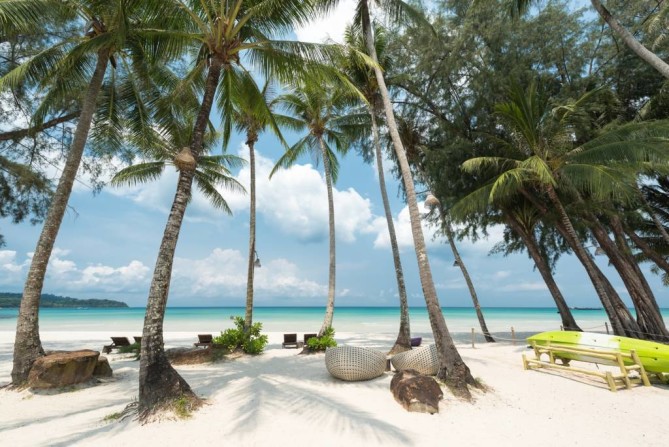
No natural beauty here is less than the ones in the Andaman Sea of the South, we’d say. Sun-kissed beaches, aquamarine waters, impeccable nature, whichever is the case, Trat does not only possess but overwhelm with it. With a great number of small islets, which are inhabited at most, Trat is booming with accommodations as a consequence such as secluded hideaways, beachfront resorts, 5-star hotels and budget-friendly local lodges. The significant increase in resorts and hotels guarantees that places to visit in Trat won’t make your vacation wasted.
1.Koh Chang National Park | Trat Travel Guide

There might be something wrong for not putting Koh Chang National Park in the limelight, and in this Trat travel guide . Since a number of tourists go as much as the number of tropical jungles, velvet-like beaches, idyllic undersea world, it implied so many things to do in Trat that can occupy you for a week-long vacation. For that reason, it is deplorable if you come to Trat but doesn’t bother making the effort to visit Koh Chang National Park.

How big is Koh Chang can be measured by its name. The word ‘Chang’ in Thai refers to an elephant and a creature’s size needs no further explanation. Given that the island’s figure looks resembling a horde of elephants walking after another, there is no doubt why it is named so. On the whole, Koh Chang is all about silky beaches, blue waters, vivid coral reefs, marvelous sea creatures, limestone mountains, cascading waterfalls, evergreen jungles and anything that Koh Chang can wear as Thailand’s second largest island after Phuket.
2.Koh Kood, Koh Mak and Koh Kham | Trat Travel Guide
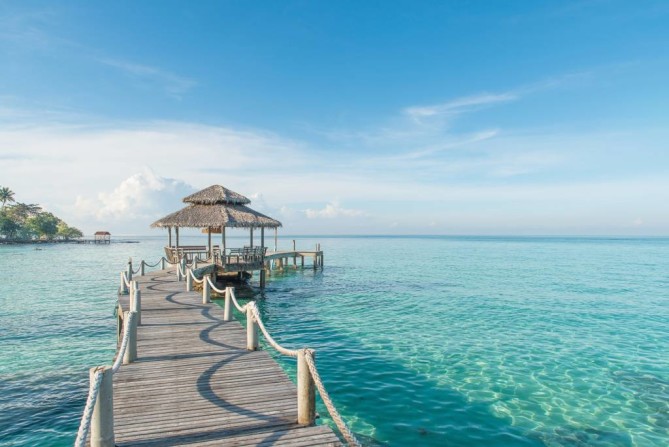
The second largest of its kind on the Gulf of Thailand is Koh Kood , the Andaman Sea of the East. Before it gets the nickname and is considered as not-to-be-missed destination for this Trat travel guide , what elements do it take to be equal to that of the ideal beaches of the Andaman? Maybe not just aquamarine waters, but golden sand, prolific marine life, and unspoiled natural resources that are making up a picture-perfect destination for beach vacation.

The third largest island of Trat goes to Koh Mak . Its third rank, however, does not mean being second for its beauty. And did you know that ‘The Sunday Times’ newspaper once voted Koh Mak as one of the World’s Top 10 Secret Beaches. And this secret will lead you to clear sand, clean beach and crystal-like waters. With a wooden bridge stretching into the sea close enough to see coral reefs, it already touts itself as a landmark of Koh Mak and one of the places to visit in Trat.
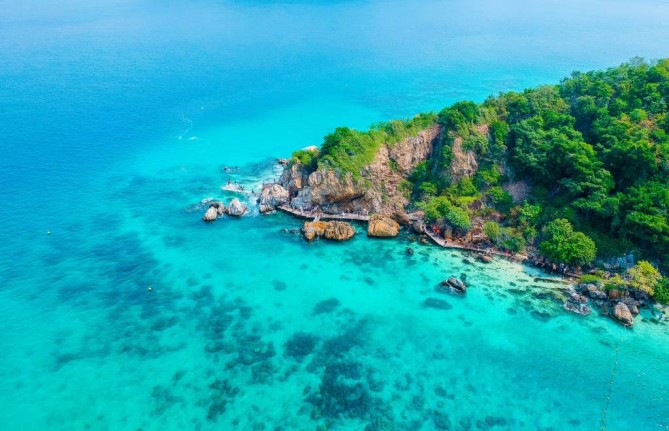
Moving to its neighbor where Koh Kham is settled. Though it is being a lesser-known place in this Trat travel guide , the pristine of the sea and things that come with it are no less than the two islands mentioned earlier. Koh Kham is proud itself to be ‘The Emerald Pearl of Trat’. The privacy, quiet, serene of the island make it one for the books, especially if you are looking for a secluded hideaway. A sandbar spanning 300 meters into the sea is a wonderful spectacle to behold. Volcanic rocks lined with vivid coral reefs unitedly painted the underwater world lively than ever.
3.The Black Sand Beach | Trat Travel Guide

Out of only 5 black sand beaches worldwide, one of them is here in Trat, Thailand. This Trat travel guide reveals ‘The Black Sand Beach’ in Lam Ngop which is unusual, yet this unusual appearance makes it a distinct one and not to be forgotten. As part of national preserved forest Lam Mahkam area, the beach is inevitably home to diverse endangered species living in harmony under the shadow of mangrove trees.
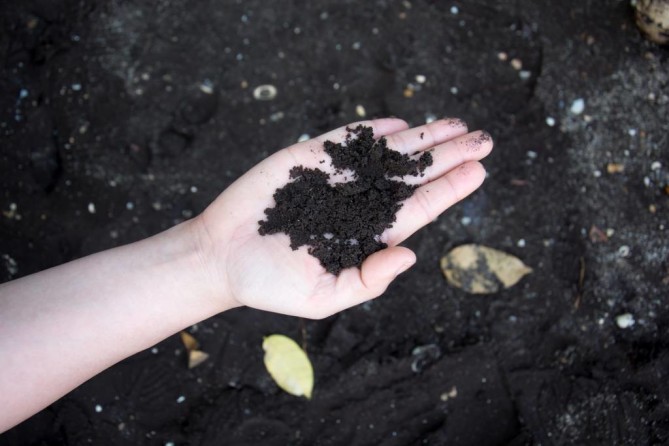
It is believed that the black sand is capable of healing diseases, aches and for beauty therapy purpose. The famous black sand leads to Black Sand Spa which is the one and only of its kind in the middle of mangrove forest. Prolific and rich in natural resources, it brought a construction of 1-kilometer-long nature trail built upon the wooden bridge that stretching into the mangrove forest. The odd feature of the Black Sand Beach draws all its guests to come – taking a walk, be amazed and getting the perfect shot as one of the things to do in Trat during your stay.
4.Koh Kradad | Trat Travel Guide

Almost every island in Trat has its nickname and Koh Kradad is not exempt. By its alternate title as ‘The Safari of the Gulf of Thailand’ being influenced by some adorable creature living there, there is not just one but a large herd of lovely deer. For that reason, it may not be typical for beach enthusiasts to spot a herd of deer while enjoying their vacation. And it makes all senses to include Koh Kradad one of the places to visit in Trat.
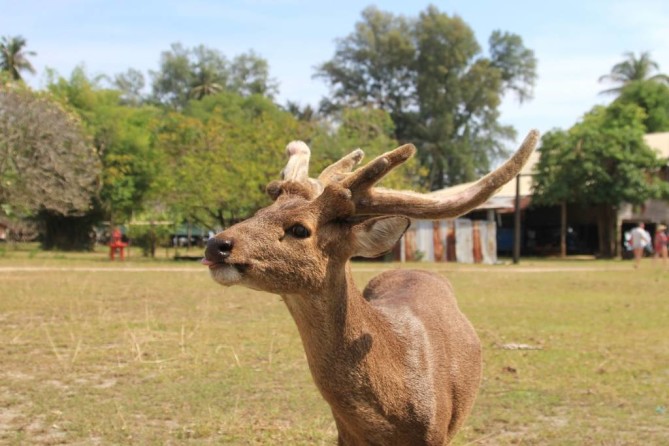
Koh Kradad is derived its name from the landscape that is so flat and looks resembling a floating sheet of paper in the sea (the term Kradad refers to paper in Thai). The 2-kilometer-long flat island seems like an uninhabited except for one family, folk lodges, a few fishermen and most importantly swaying coconut trees which blown away by the wind. The open grassland allows for clear vista of those coconut trees which is the quaint charm of nature. For this, Koh Kradad is unquestionably chosen as one of UNSEEN THAILAND.
5.The Hat Lek Border Market | Trat Travel Guide

If it happens to you that you are lost in Trat and out of things in stock, perhaps you may need to store those travel accessories at Hat Lek Border Market . Let this Trat travel guide navigate you where to get those accessories in need, or else allow yourself for new shopping opportunity at the edge of the southeastern Thailand bordering to Cambodia. You can take a stroll along the two-sided road which lined shophouses and some of recommended restaurants while the the area around Immigration Checkpoint near Trat border is where most tourists flock.
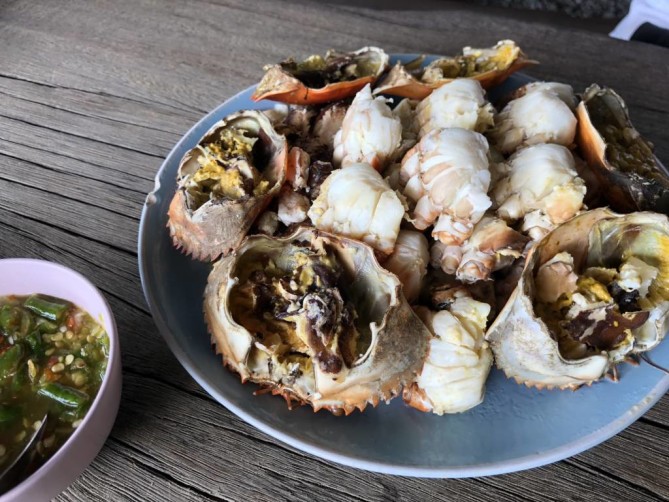
Before heading to Hat Lek Border Market, you need to wake up early since the market is open at 7 o’clock in the morning and will be closed 1.30 hrs after. Such temporary period is only for makeshift market zone where you will be spoiled by choices of accessories, apparel, wristwatch, glasses, perfume, many-sized bags, even camping equipment. Surprisingly, if you are a big fan of durian, you’ve come to the right place considering that Ban Hat Lek is the leading exporter of durian, King of Thai fruits. Apart from lying down on the beach, go on a shopping spree is one of things to do in Trat.
6.Ban Nam Chiao | Trat Travel Guide
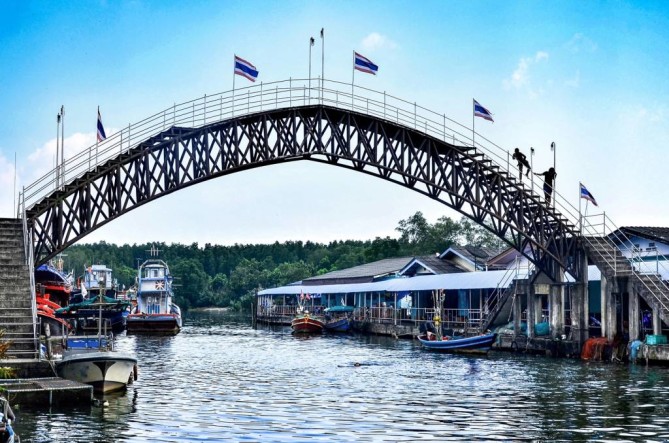
Cultural tourism has been at the forefront of travel ever since travelers started to realize not to just visit but absorb the community, experience local life and imbue in the charm of each community in particular. This Trat travel guide will give you a glimpse of Ban Nam Chiao , a community located 8 kilometers south west of Trat town.
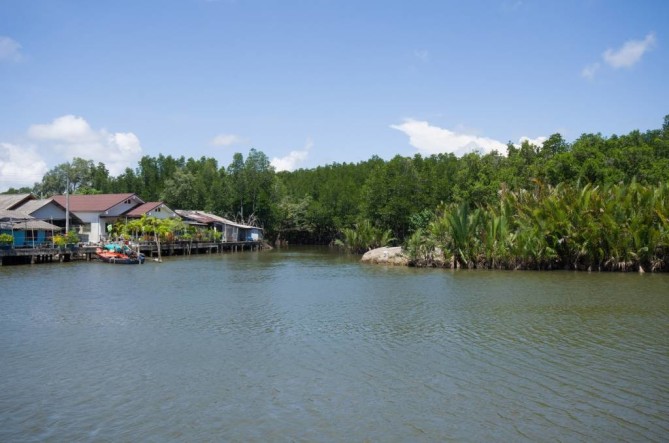
Being chosen as OTOP Village Champion, the award does not only guarantee the outstanding community-based tourism but it explains how important a community is to the local. By hopping on a long-tail boat, you’ll get to see undamaged mangrove forest. With its abundant natural resource and as home to endangered species, it enables a greater chance for bird watching, one of the things to do in Trat , which is rare elsewhere.
Sleeping over at some local homestay here can be as pleasant as much as joining in fireflies boat trip. Ban Nam Chiao villagers are specialized in making Thai farmer’s hat or locally referred to as ‘Ngob’. So do not miss a single chance for Thai farmer’s hat demonstration.
Book your flight to Trat today! Visit http://www.bangkokair.com/eng/flightdeals/view/trat to check flight availability.

© 2023 by Bangkok Airways. All rights reserved.
Privacy Policy
- Luang Prabang
- Mae Hong Son
- In the News
- Route Network
- Book a Flight
- Flight Schedule
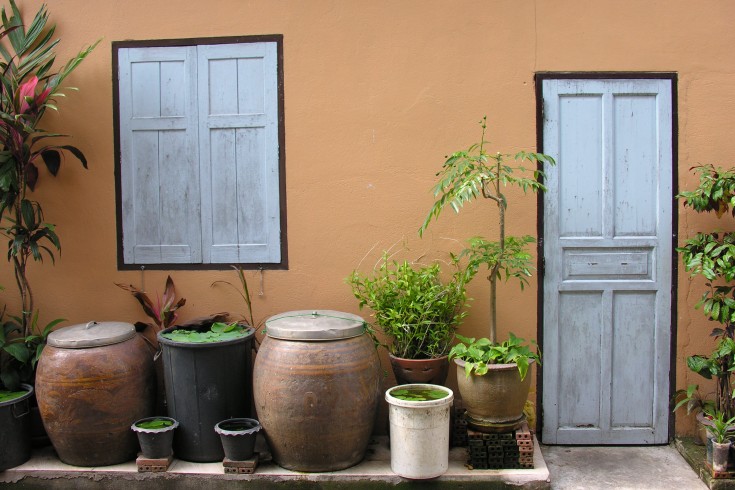
Eastern Thailand
- Introduction
- Accommodation
An independent travel guide to Trat
Thailand's southeastern corner
Published/Last edited on 31st July, 2018.
Best known for its hefty chain of islands, Trat province lies wedged between the eastern Gulf of Thailand and the Cardamom Mountains that stand as a natural border with Cambodia. Quite a few travellers pivot through the provincial capital of Trat but only a handful hang around for cheap digs in the old town.
Browse hotels in Trat on Agoda
Provided by Travelfish partner Agoda .
A few nights in Trat will do the trick if you need to save cash: a room at one of the old-style guesthouses, plus three meals, can cost less than 300 baht per day. Daring tongues will enjoy grazing markets that bustle in the heart of town. You’ll also find some charm down a couple of “old town” lanes, where ghostly murals join Chinese lanterns to decorate the heritage houses. Otherwise Trat town is unremarkable—we’d opt for nearby Chanthaburi if seeking an eastern Thai town for cultural and culinary travel.

Those wanting to skip the town will find that hitting the islands can be as easy as transferring from bus to songthaew to ferry. Though Ko Chang, Ko Mak and Ko Kut are Trat province’s most popular islands, smaller isles like Ko Wai and Ko Rang are also worth a look. Sailors, divers and beach bums watch months slide away in the province’s 52-island strong ... Travelfish members only please log in below to continue reading. The full text is around 1,000 words.)
Learn more about Trat
Log in to Travelfish Please sign in to read the rest of this page. The full text is around 1,000 words.
Become a Travelfish member Choose from $5 week-long through to a lifetime membership.


More destinations
Ban Phe Bang Saen Chanthaburi Ko Chang Ko Kut Ko Mak Ko Mun Nork Ko Samet Ko Si Chang Ko Wai Rayong Sri Racha
Holiday checklist
If you prefer to have all your ducks in a row before you hit the road, here are some travel services you may wish to consider.
- SafetyWing offers affordable travel insurance , along with coverage for travellers up to the age of 70.
- Buying a SIM card through Klook to pickup at the airport when you arrive can save you time and money. Choose from airports across Southeast Asia.
- GetYourGuide offers a quite comprehensive range of popular organised activities across the region.
- 12Go is a reliable travel agent for selecting and booking your transport in advance.
- 1 Understand
- 2.1 By plane
- 2.3 By share-taxi
- 3 Get around
- 4.1 Festivals
Trat (ตราด) is the capital of Trat Province , Eastern Thailand . Trat town is the main centre for road travellers to the eastern islands of Thailand including Ko Chang , Ko Mak , and Ko Kood .
Understand [ edit ]
Trat is on the Cambodian border in southeastern Thailand. Some travellers will use Trat as an access point to Ko Chang , but most will use buses or vans that will deliver them directly to Ko Chang, bypassing Trat. Trat, formerly a vibrant traveller scene when all transport passed through town, has sunk into the doldrums according to most residents.
Trat is at the southeast end of Sukhumvit Road, which connects it with Chanthaburi, Rayong, Chonburi, and Bangkok.
There is regular bus service, taking 5–6 hours, to Bangkok's Ekamai Station for downtown Bangkok and Bangkok Mo Chit for other destinations in Thailand. Many tourists stop over in Trat before going to the islands from Laem Ngop or Leam Sok (15–20 km from Trat. There are ferry and speedboat services to the eastern islands, Ko Chang and Ko Kood .
Trat is a transit point for people travelling to Cambodia, as it is a 90-km minibus ride to the border at Hat Lek. After crossing the border there is a short journey to Koh Kong and bus service to Sihanoukville .
Get in [ edit ]
By plane [ edit ].
Alternatively, and much cheaper, is a 1st class bus service that connects Trat directly with Suvarnabhumi Airport ( BKK IATA ).
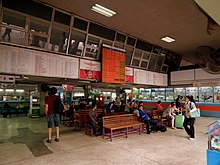
By bus [ edit ]
Buses to Trat depart from Bangkok 's Eastern (Ekamai) and Northern (Mo Chit) Bus Terminals (5 hours). From Ekamai buses run frequently throughout the day 06:00-23:30 with an overnight bus at 23:30 (as of October 2016). First class is 252 baht (June 2019) and the government-run bus has a nice 2nd class (air-con, but no toilet) for 188 baht. These buses are slow (they stop at every station en route), and the journey can take up to eight hours. Consider taking a minivan for a faster transit time.
If attempting to go to the border with Cambodia and continue on to Phnom Penh via one of the regular Cambodian bus services the same day, it is advisable to take one of the overnight buses from Bangkok to Trat. The overnight buses will arrive at the Trat bus depot very early in the morning and you can then catch the first morning mini-bus from the Trat bus depot to the border. 120-150 baht. Takes one and half hours. hourly 05:00-18:00.
There are also 5 buses daily from Bangkok Suvarnabhumi Airport for 248 baht. The journey takes about 5 hours.
The regular Cambodian buses that leave Koh Kong for Phnom Penh depart Koh Kong around 08:00, so in order to catch the bus you need to be across the border when it first opens in the morning or shortly thereafter. Taking a mid-day bus from Bangkok puts you into Koh Kong either too late to cross the border (not a 24-hr operation) the same day or too late to catch the bus to Phnom Penh. In these cases you will have to spend a night in a hotel on the Thai or Cambodian side before moving onward.
To go straight to or from the border by minivan from the Trat bus station to cross over to Koh Kong costs 120 baht.

Regular bus connections from Chanthaburi, 70 baht, and other provincial capitals are also available from the Trat bus depot.
By share-taxi [ edit ]
On the east side of the main market building is the local songthaew departure area. You can't miss the blue cars and pick-ups. Departures toward most provincial villages leave when the vehicle is full, including those to Haad Lek . Connections from there are available to the Cambodian border and Koh Kong .
Get around [ edit ]
The town is sufficiently small to make walking the best mode of transport, although there is little to do besides explore the backstreets and relax. If needed, a motorbike taxi to just about anywhere in town, including to bus terminal, is 20 baht.
See [ edit ]
- City Pillar Shrine ( ศาลเจ้าพ่อหลักเมือง ). Different from other city pillar shrines because of its form as a Chinese pavilion. Every year on the sixth night of the waxing moon period of the sixth lunar month, there is a celebration called Phli Mueang Day (วันงานพลีเมือง), known among the Chinese as Xia Gong Sae Yit (วันเซี่ยกงแซยิด) , which means "birthday of the city pillar God".
- Wat Buppharam ( วัดบุปผาราม ), Moo 3 Ban Plai Khlong, Wang Krachae Subdistrict . An ancient temple dating back to the w: Ayutthaya era (mid-17th century), recognized as the oldest and most beautiful temple of Trat. The architecture here is early Rattanakosin and the ordination hall interior features murals in Ayutthaya and Chinese styles. Its name means 'temple full of fragrant flowers'. ( updated May 2019 )
- Wat Khiri Wihan ( วัดคีรีวิหาร ). A temple which features fine architecture with a blend of modern art. Principal buildings inside the temple's precincts include a large Phra Ubosot or ordination hall, Phra Chedi, reception pavilion for HRH Princess Maha Chakri Sirindhorn, monk's residence, preaching hall, and Chinese pavilion enshrining Phra Phuttha Udom Sombun, Bodhisattva Avalokitesvara, and Phra Sangkatchai.
- Wat Phai Lom ( วัดไผ่ล้อม ). Used to be a resident of Trat's Father of Education, Than Chaokhun Phra Wimonmethachan Worayannurak. The temple also houses a Buddhist garden for public meditation and chedi museum of three much revered monks of Trat.
- Wat Saphan Hin ( วัดสะพานหิน ). It is assumed to be more than a hundred years old, although its exact date of building is not known. There is an old Buddhist ordination hall in the water, approximately 1 km from the temple.
- Wat Yotha Nimit ( วัดโยธานิมิตร, Wat Bot (วัดโบสถ์) ). The only royal temple in Trat. The temple was once used as a place to hold the oath of allegiance ceremony. There is an old ordination hall of Ayutthayan art serving as a wihan called Wihan Yotha Nimit for storing many antiques.
- Old shophouses ( On Chai Mongkhon Road ). Classic beauties in the old commercial area of the district. In this area, some walls will have murals in the form of street art that tells stories of the old town in the old section of Khlong Bang Phra. ( updated May 2019 )
- Tha Sadet . An old pier where w:King Chulalongkorn (Rama V) visited Khlong Bang Phra to disembark and continue to w:Sanam Luang . ( updated May 2019 )
- Residanggamport Residence ( Residence Kampot ). A colonial building used by French troops when Trat was a colonial town. ( updated May 2019 )
- Trat National Museum . A large Makha ( w:Afzelia xylocarpa ) wooden house exhibits the stories of Mueang Trat in various perspectives. ( updated May 2019 )
- Soi Rai Rang Market . A night market, the centre of street food and local food in the heart of the district, offers old style sweets at Khanom Thai Pa Nom. ( updated May 2019 )
Festivals [ edit ]
- The Ko Chang Naval Battle Day ( งานวันวีรกรรมทหารเรือไทยในยุทธนาวีที่เกาะช้าง ): Held in late January ( at the Ko Chang Naval Battle Monument (Anuson Yutthanawi) at Laem Ngop ). The event commemorates the bravery of the Royal Thai Navy's action against the French on 17–21 January 1941. Merit-making and tribute rites are performed and there is an exhibition by the Royal Thai Navy.
- Trat Independence Day ( งานวันตราดรำลึก ): 23–27 March annually ( The celebrations are held at the provincial town hall ). Marks the province's return to Thai sovereignty after the French occupation.
Do [ edit ]
Trat can be a starting point for a motorcycle trip to Ko Chang. Rentals of Honda and Yamaha motorbikes, in good condition, can be hired at the shop on Sukhumvit south of the market area (~200 baht per day). Drive south along Sukhumvit for about 45 minutes, and follow signs for the ferry quay. Be sure to top up with petrol before taking the ferry, as fuel prices on the island are rather high. Also, caution is required when driving on the island as the roads, although in excellent condition, are very steep and winding. Furthermore, if taking your motorbike on the ferry you have no choice but to immediately go over the most dangerous hill, since it lies between the ferry piers and all the beaches. Carrying maps of Ko Chang and Trat province is advisable, as the routes are not always clear.
Cycle around the scenic lake which is just a few minutes cycle away from Trat town centre. Its about 10 km around the lake and is scenic the whole way around. There are a few places to eat and drink as well. Hire a bicycle from Tattoo Guesthouse opposite Pop Guesthouse for 50 baht for all day. Use the bike to go shopping at the huge Tesco Lotus supermarket on the edge of town. It has an excellent pharmacy.
Have a 2 hour kick boxing lesson in the ring, at Tattoo Guesthouse.
Buy [ edit ]
- Resident expats have set up a few used bookshops which provide English and German books at fair prices. They can be found in the small streets south of the central market.
- Rubies (พลอยแดง) - Trat is renowned for its precious red gemstone known as the "Siamese ruby". As gemstones in the province are depleted, the Siamese ruby is now becoming rare. Remember, if you're offered a deal that's too good to be true, you're probably being scammed.
- Ngop Nam Chiao (งอบน้ำเชี่ยว) is a folk-style hand-made palm leaf hat identified with the Nam Chiao community. The hat is made into a distinct shape looking like an overturned frying pan or soldier's hat in former times.
- Rakam Wan (ระกำหวาน) is a sweet variety of w:salacca , the most famous of the province's vast array of fruit produce.
- Trat Si Thong pineapple (สับปะรดตราดสีทอง) is a sweet and crispy variety of Trat's juicy pineapple with yellowish skin.
- Namman Lueang (yellow oil) (น้ำมันเหลือง) is a herbal rubbing oil made since ancient times. The aromatic oil is claimed to relieve muscular pain, stiffness, dizziness, congested nose and cold symptoms
Eat [ edit ]
- Across from the KFC in central Trat, and very close to the main bus terminal, there is a large indoor market with plenty of restaurants.
- A lively night market gets underway around 18:00 just north of the main market. Just north of that is a smaller market open all day offering snacks and local produce.
Drink [ edit ]
- Oscar Bar , Thana Charoen Rd . Roughly 17:00 to midnight . One of the only places for the few expats to hang out. Run by the accommodating owner, Sao. Her opening time is variable. She will stay open as long as she has customers. No food, only beer and full bar. Also does laundry on the premises. She has a dryer, often required to dry clothing in Trat's damp climate. ( updated Jul 2019 )
Sleep [ edit ]
- Ban Jai Dee Guest House , 6 Chaimongkol Rd , ☏ +66 83-5890839 . Fan room with shared bathroom. Hot water showers. 250 baht . ( updated Feb 2017 )
- Dream Guesthouse ( Small road left off Sukhumvit (Choeren Rd), just S of the market ). Simple, clean rooms at fabulous rates (~100 baht for twin room with fan). Friendly advice is available in English from the resident owner. 100-450 baht .
- Garden House Guest House , 87/1 Rad-anuson Rd , ☏ +66 39-521018 . Check-in: 12:00 , check-out: 12:00 . Fan room with outside bath. Fan room from 150 baht . ( updated Feb 2017 )
- James Guest House , 45/1 Lak Muang Road , ☏ +66 87-1379983 . Check-in: 12:00 , check-out: 12:00 . Fan room with outside bath. From 150 baht . ( updated Feb 2017 )
- Jane's Place Guest House ( On Lak Muang Rd, conveniently in the centre of Trat near the market ), ☏ +66 39 511827 . They only have three double rooms but each is clean, and also have a balcony overlooking the garden.
- Orchid Guesthouse , 92 Lhak Muang Rd, 92 ( On a side street S of the market area ), ☏ +66 92 765 8400 , [email protected] . The front operates as a restaurant serving Thai/Western fare. Serves good pizza and Western food, breakfast with homemade brown and white bread. The Thai selection of the menu is nicely cooked. Has air-con rooms, and free Wi-Fi for guests. Friendly advice is available in English from the resident owner. From 150 baht for fan rooms .
- Rimklong Boutique Hotel , 194 Soi Rimklong Rakmuang Rd , ☏ +66 81 8617181 . Perfect small hotel close to downtown and the Oscar Bar. A little gem. Owned an operated by a friendly guy nicknamed "Tuu". ~1,500 baht . ( updated Jul 2019 )
- S.A. Hotel , 45 Soi Terdjarad 2 , ☏ +66 39 511141 , +66 39 524572 , fax : +66 39 524411 . 100 rooms. 250 baht rooms are fan only and barely furnished, but with TV. 250-900 baht .
- Sangjun Guesthouse (formerly, Guy GH) , Thana Charoen Rd ( From Sukhumvit Rd about 500 m from center. Direction W. Go left Thana Charoen Rd. Sangjun is after 200 m ), ☏ +66 92 7074654 , [email protected] . Check-out: 12:00 . 15 rooms, also has family room. Good price-quality balance. Nice restaurant, good location, ticket service. From 200 baht .
- Yotin Guesthouse , Thana Charoen Rd ( 200 m from Sukhumvit Rd, near center ), ☏ +66 89 2247817 , +66 85 4401477 , [email protected] . Check-out: 12:00 . Seven rooms. New guesthouse in good location. Close to night market/center. Very clean rooms and very good beds. No traffic or other noise. Rooms with TV, air-con or fan. Bathroom inside. Hot shower. 350-600 baht .
Go next [ edit ]
- Most people head straight from Trat to Ko Chang , Ko Kood , Ko Mak , Ko Wai or continue to Hat Lek for a visa run to Cambodia
- Has default banner
- Has map markers
- Airport listing
- See listing with no coordinates
- Drink listing with no coordinates
- Sleep listing with no coordinates
- Has routebox
- Has Geo parameter
- Trat Province
- All destination articles
- Outline cities
- Outline articles
- City articles
- Pages with maps
Navigation menu
- Southeast Asia
- South-Eastern Thailand
- Trat Province
Trat Travel Guide
This eastern Thai city is the district capital of Trat Province and acts as a great access point to the islands of Koh Chang and Koh Kood in the Gulf of Thailand .
The Cambodian border town of Hat Lek is around 120km to the east and buses from Bangkok take around 4 or 5 hours to reach Trat, which lies near to the border with Cambodia .
Trat is reported to have more markets per square kilometer than any other place in Thailand so bargain-hunters will not go short. Most travelers who visit Trat tend to arrive by air from Bangkok.
The major attraction of Trat is its geographical location. During the Indochina War it was considered a strategic site, and the French attempted to seize it on a number of occasions. Today its location remains its main benefit, offering as it does a convenient gateway by air or ferry to the popular island of Koh Chang.
Getting There & Away
Flights from Bangkok to Trat are regular and good value can be had on the budget airlines. Traveling by road, however, is straightforward, with buses leaving Bangkok regularly and taking between 4 and 5 hours to reach Trat via national highways 7 and 3. Connecting ferries to Ko Chang take about 45 minutes to complete the crossing.
Things to Do
Trat attractions.
A sacred monument to the people of trat, the city pillar is housed in a chinese architecture building and was put in place by king taksin in the 18th century.
Residence of the occupying french governor from 1904 to 1907 and home to the governor of trat since.
Trat has a number of pretty beaches on the coast of the gulf of thailand.
- Privacy Policy
- Affiliate Disclosure

Travel itinerary for Chanthaburi, Rayong, and Trat
Destinations
Joanna Horanin
Current condition
Weather in Eastern Thailand
Partly Cloudy
Temperature
Feels like 36.6 ℃ 🥵
Air quality index
Last updated at 01/05/2024, 01:00
Hi, I'm Joanna, the author of The Blond Travels. In the worlds of Thailand and Portugal, I feel like a fish in water - and it's no coincidence! I've been exploring Thailand for over a decade, and I've settled in Portugal for 6 years now. My mission is to support Dreamers - just like you - in discovering these fascinating countries and helping those in love with them find their own place on Earth, preferably for good! Let's uncover these unique corners of the world together.
The east of Thailand is amazing. If you’re looking for something authentic without hordes of tourists, where you can eat delicious food and meet wonderful people, then this region is for you. Visit the east of the Land of Smiles if you don’t fancy spending all of your time under a coconut tree and don’t like loud parties.
I have recently had a pleasure to attend a familiarization trip to Chanthaburi, Rayong, and Trat, which was organized by TAT – Tourism Authority of Thailand . I was introduced to yet another region in the country, which I didn’t know yet. The places and experiences were truly incredible and I am sure I wouldn’t have had found these places by myself. The trip lasted only 5 days and left me wanting more. The below itinerary to Rayong, Trat, and Chanthaburi is for those, who would also like to see and experience something remarkable.
Day 1 – Rayong
Rayong is mostly famous for Koh Samet – a well-known island. However, not many foreigners know that the best seafood in Thailand comes from here. Fishing communities are quite small, but they provide most of the country with fresh fish, prawns, crabs and other delicacies.
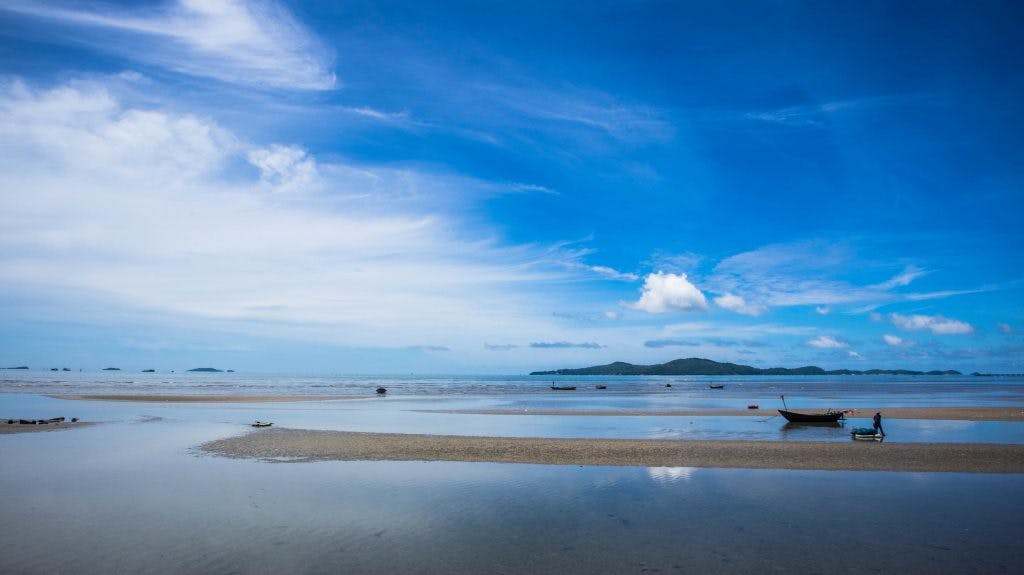
Recommended activities in Rayong
Rayong is mostly famous for its seafood and fruits. If you’re looking for fresh prawns, crabs, and fish, you cannot miss this province. For the freshest seafood head to Ban Phe – a small village on the coast. I recommend dining in J-Taipupen restaurant (ร้านเจ๊ต่ายปูเป็น) , which is a Thai-style restaurant offering not only the freshest produce but also a lovely view over the bay.
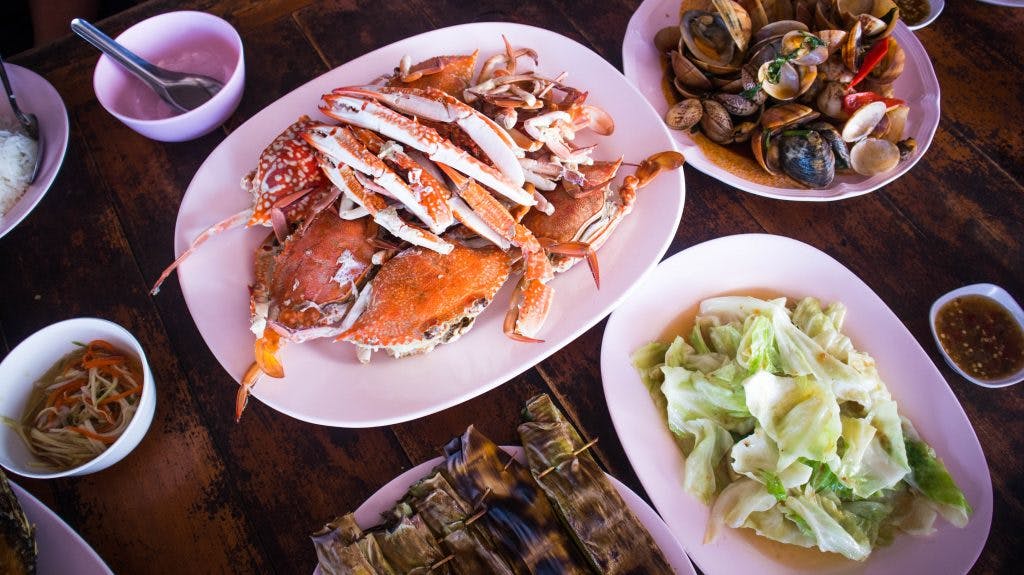
Vegans, vegetarians, and fruit lovers will be more than happy in the Suppathra Land orchards, where you can see how exotic fruits are grown and harvested and then enjoy a fruit buffet. Don’t forget to try durian – the smell might be strong, but the taste is really not that bad. Cost: 450 Baht including the buffet.
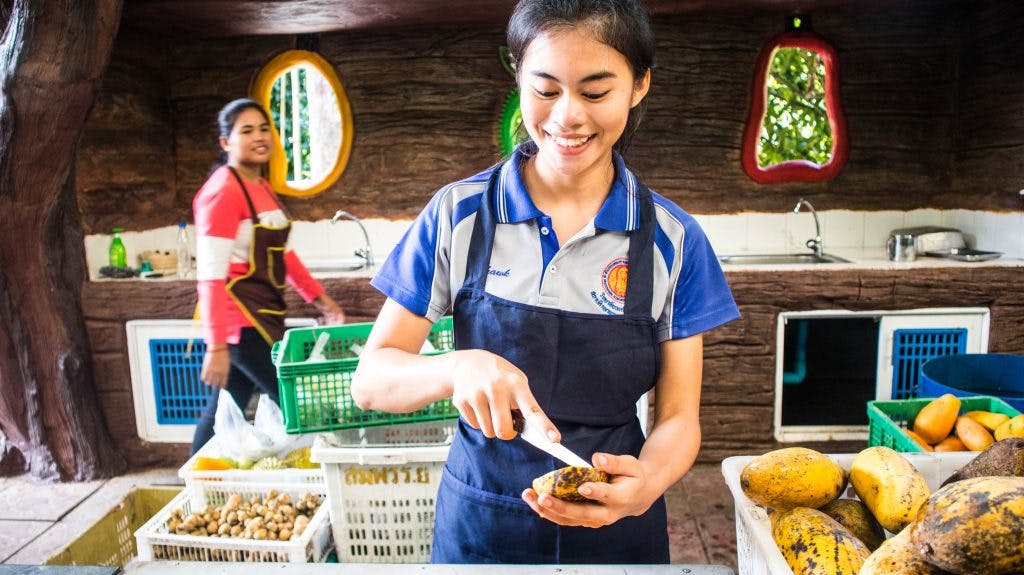
How to get to Rayong?
From Bangkok Morchit Station, you can take a minivan to Rayong . It takes around 3 hours to get there and costs about 220 Baht. Once there you can rent a motorbike, a car, or inquire at your hotel for a private driver.
Accommodation in Rayong
Golden City Rayong Hotel – if you fancy something a bit nicer. It’s only 50 meters from the center. All rooms are air-conditioned. There is also a fitness center and a swimming pool.
Life Station – very reasonable price with an interesting decor and a cafe in the same building. There’s free wi-fi and air conditioning in every room.
Day 2 – Chanthaburi
Chanthaburi is a town and a capital of the eastern province of the same name. Once it was Thailand’s hub for excavating precious stones. Nowadays 8% of all of them come here from all over the world to be polished and turned into shiny objects. It’s not possible to visit Chanthaburi and not see some opals, sapphires, or even diamonds. However, Chanthaburi has lots of other things on offer.
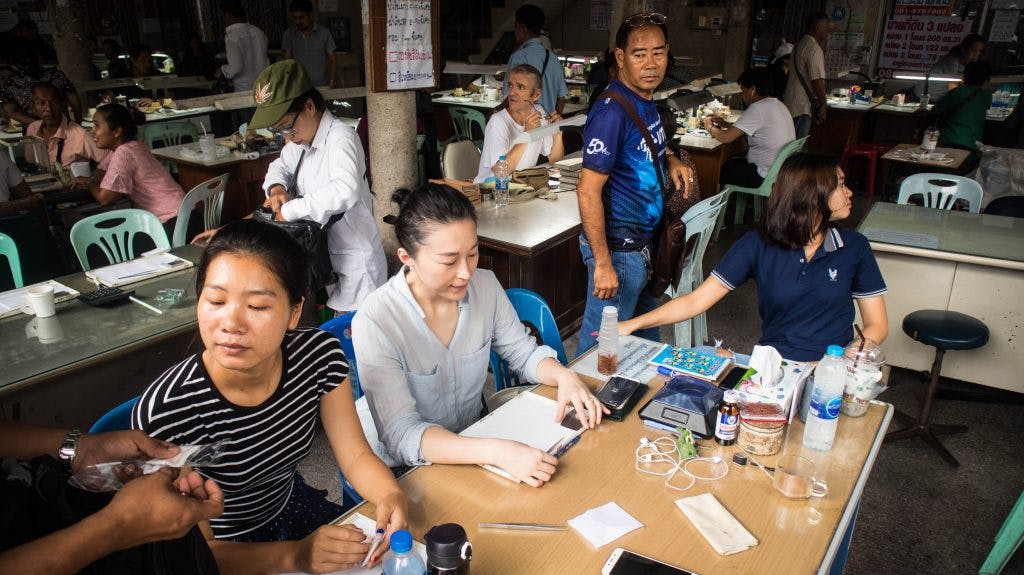
Recommended activities in Chanthaburi
Start your day with a visit to Sea Farming Demonstration Unit in Kung Krabaen Bay (กระชังปลาของศูนย์พัฒนาอ่าวคุ้งกระเบน). There is no entrance fee and you can feed sharks, watch turtles swimming and find out more about marine life and what’s being done to preserve it.
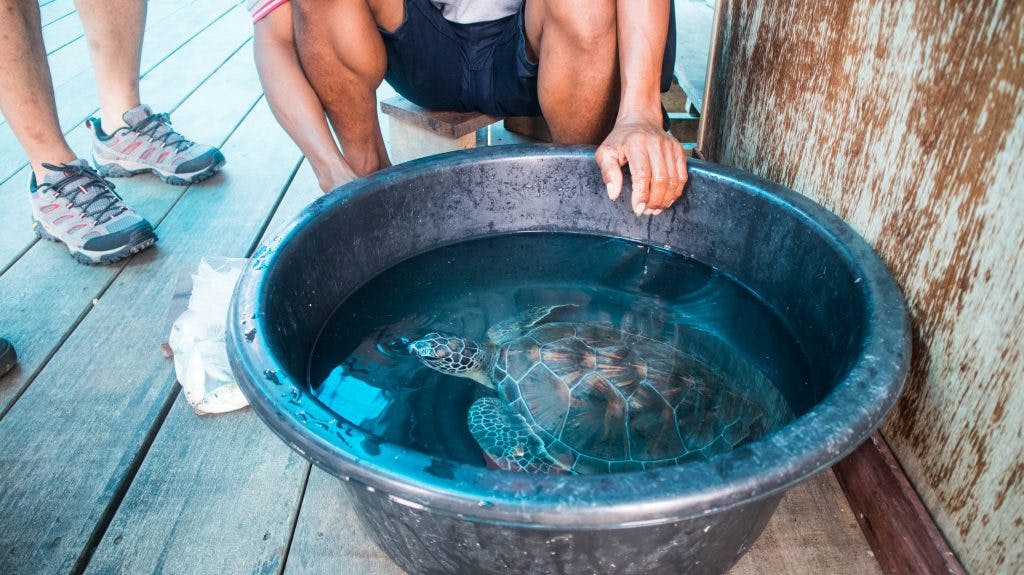
From there drive through Noen Nangphaya Viewpoint . The road leading there is worth a stop or two and the viewpoint offers sweeping views over the surrounding waters and hills.
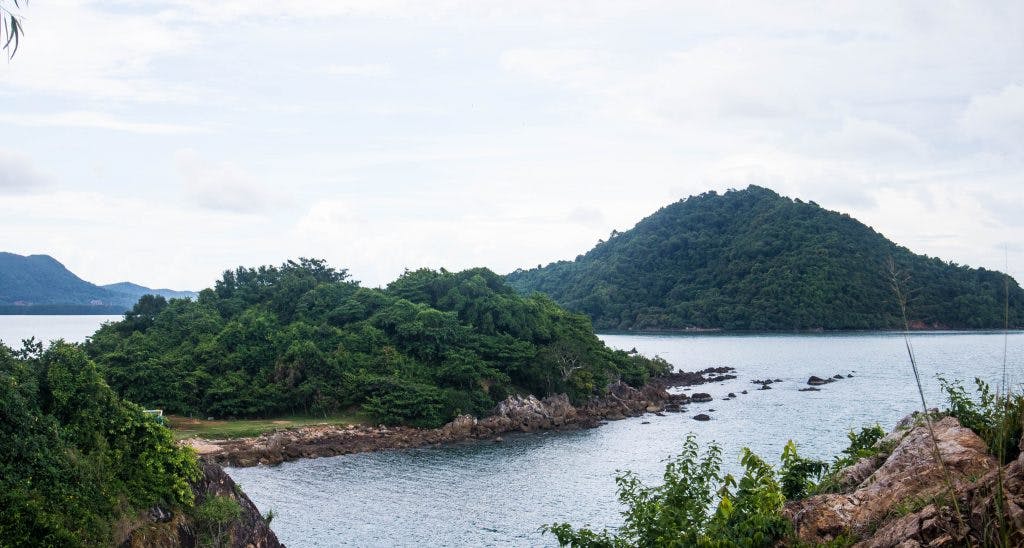
Chanthaburi is also famous for its food. One of the most beautiful meals are prepared in Ban Namprik Khao Suay (บ้านน้ำพริกข้าวสวย) , where you can enjoy all sorts of local dishes with a flower twist.
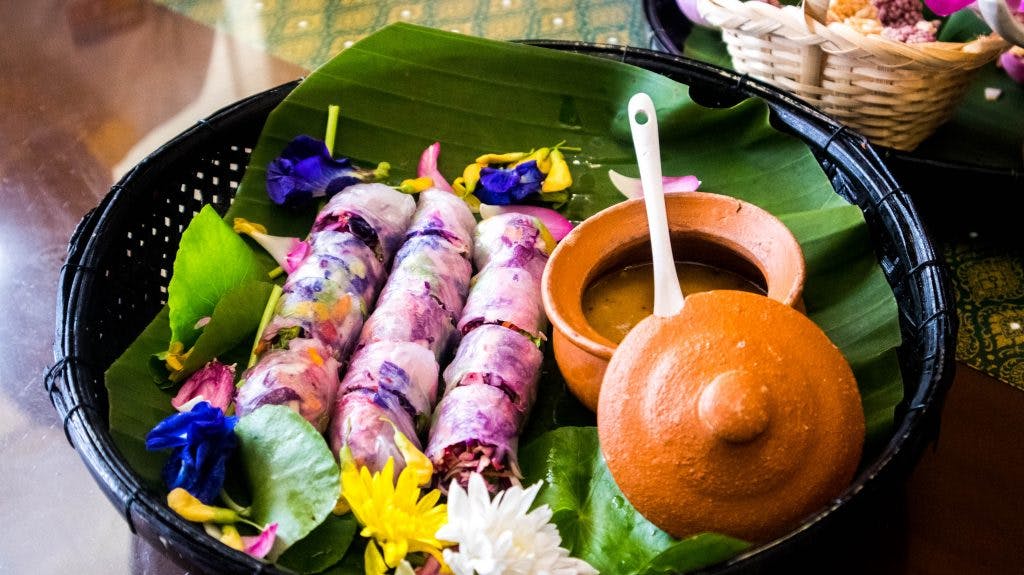
Next on the list is the gems market in Chanthaburi . I must say that this place made a great impression on me. It felt real and authentic and was great for street photography. People from Africa, Europe, and Asia come here to trade. They buy and sell precious stones and you can watch them doing so. Just be careful, quite a lot of them don’t want to be filmed or photographed.
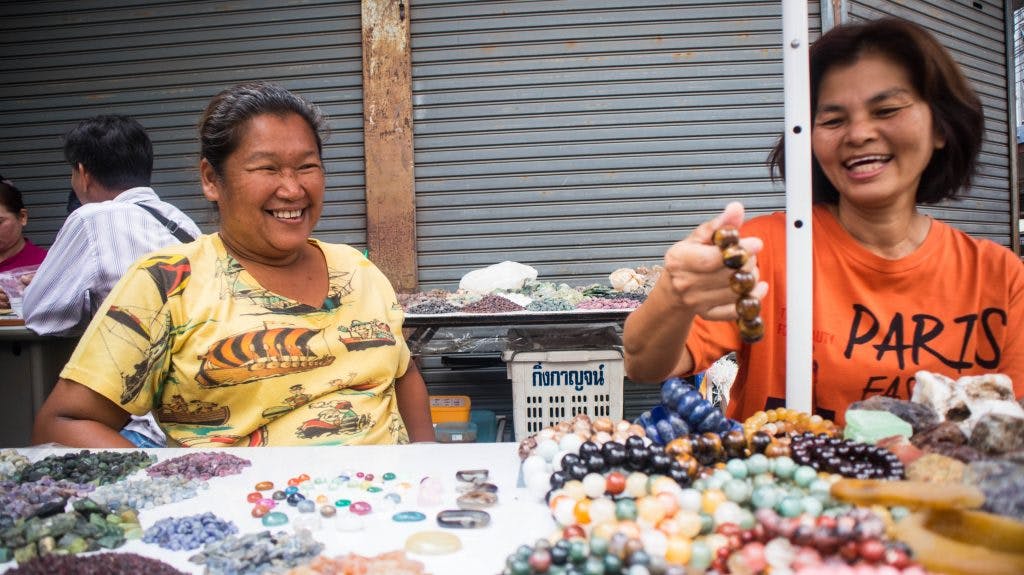
Just around the corner, you will find a Catholic cathedral . The local Catholic community was started by Vietnamese immigrants in the 18th century. The church is pretty inside and outside. It’s, of course, nothing compared to some of the churches we have in Europe, but it’s worth the visit nevertheless. Please remember to dress modestly, cover your arms and legs.
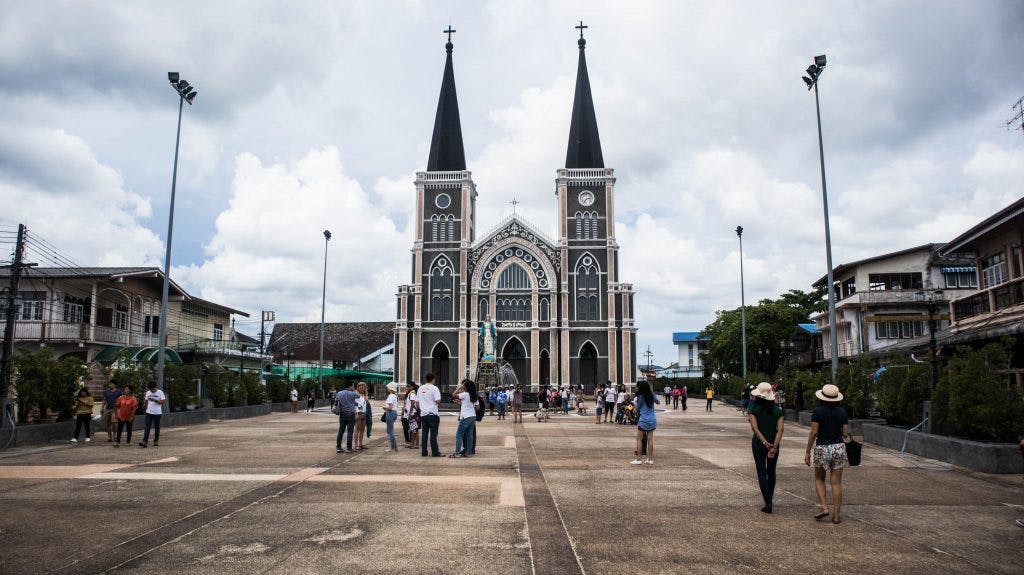
Spend some time walking around the town. There are plenty of things to discover. The buildings are stunning and the people really friendly. Try out some of the local specialties, like pastries and sweet snacks, which are sold all over the town.
How to get to Chanthaburi
From Rayong, you can take a bus. They depart at 4:00, 8:30, 11:30, 13:00, 14:30 and 18:00 and take 4 hours. You can also take a private taxi , which costs around 4,000 Baht.
If you’re traveling from Bangkok you can take a minivan from Ekkamai to Chanthaburi Bus Station . It takes 4 hours and costs around 300 Baht.
Accommodation in Chanthaburi
Sand Dunes Chaolao Beach Resort in Tha Mai district of Chanthaburi – it is not actually in the town, but if you want to combine your sightseeing with some relaxation and stay somewhere nice, I highly recommend this resort. It’s quiet and perfect for couples and families.
D Varee – a great spot if you want to be a bit further away from the noise of the town. You can book a private driver to take you around the town, or rent a bicycle, or a motorbike. Rooms are very spacious and the hotel has a very nice swimming pool with a view over the river.
Bussarakam Place – the cheapest option in town with a good location. Rooms have air conditioning and free wifi.

Are you looking for a local guide? Are you after an interesting tour?
TakeMeTour connects local guides with tourists and creates unique tours in South East Asia.
Spend a day with your private guide, find out more about the country and make new friends.
Day 3 – Chanthaburi and Trat
Oysters are very popular in Chanthaburi and while here you will have a chance to try some of them out. Book a tour to an oyster farm. I went to Auntie Louise and Uncle Tom , who have been farming oysters for 30 years now. Usually, it takes a year to grow them enough so they are ready to eat, but from time to time he harvests them after 3-5 years. They are bigger than and more expensive as well. I tried 2-year oysters, which were a little bit too big for my taste.
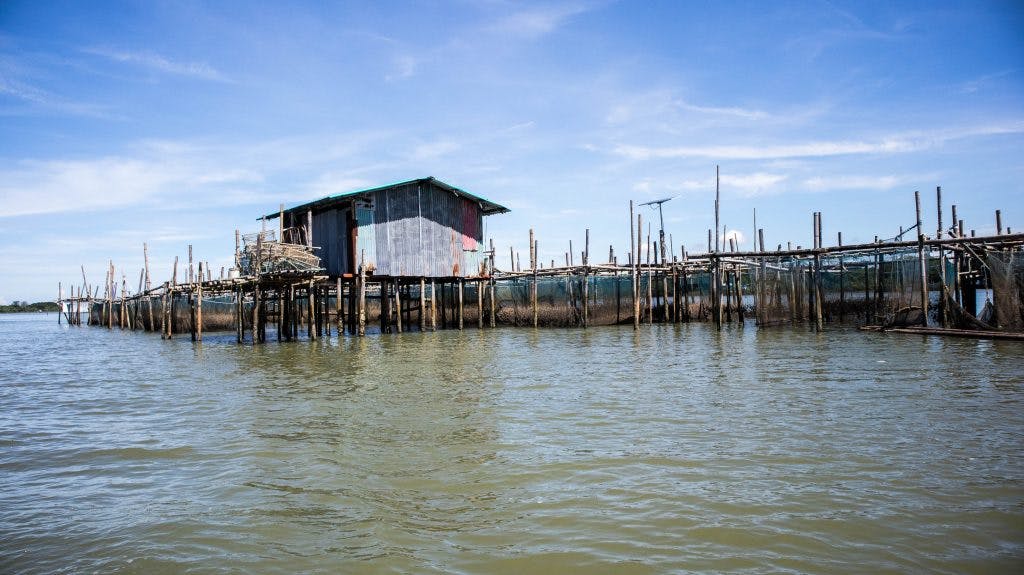
Chanthaburi also has a very nice gems museum , where you can find out more about polishing and preparing precious stones. At the end of your sightseeing, you can buy jewelry in the shop located in the museum.
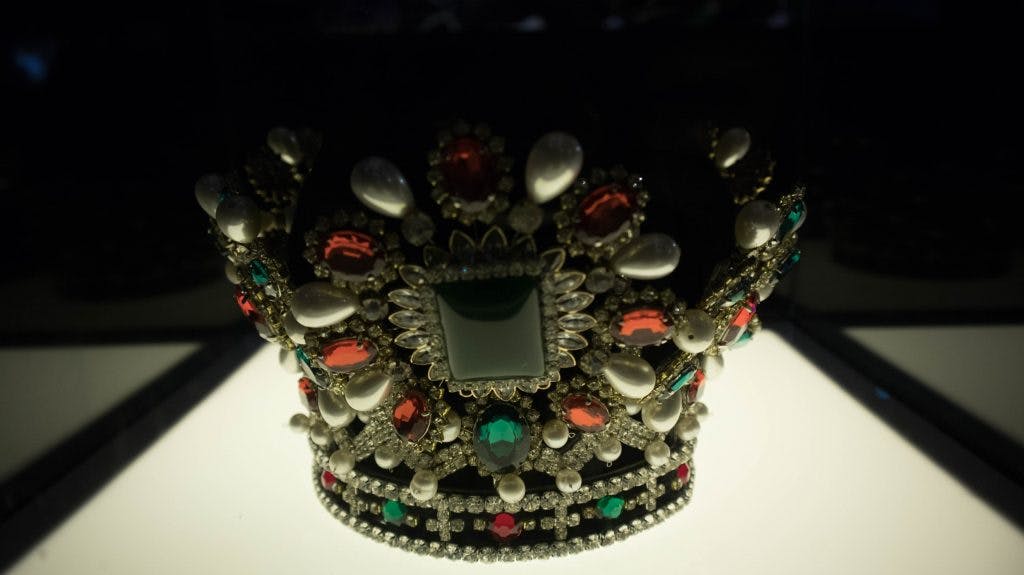
In Chanthaburi, I ate lunch at Tamjun Hotel , which serves amazing local food. If you’re ever there, notice how the food is served. Pintoh – small metal bowls are used to transport food. You can stack them up and close on top. This is how Thais transport their lunches.
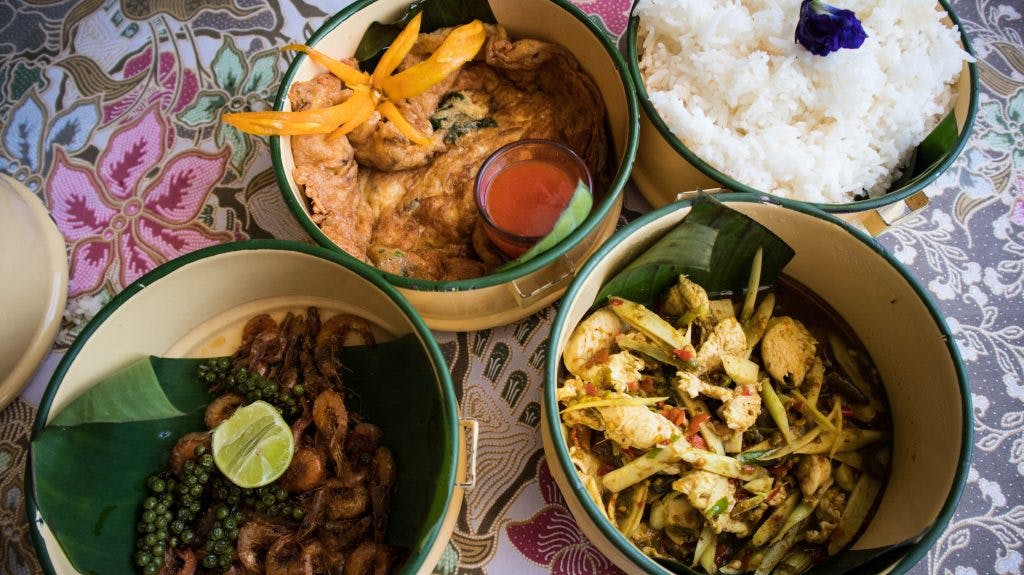
From Chanthaburi, it’s a short ride to Trat . First, stop at Ban Tha Ranae mangrove forest. For 250 Baht per person, you can rent a boat to take you through the forest, play bowling in the middle of it and then sample some local food made out of mangrove trees. The village also offers homestays for another 250 Baht per person per night.
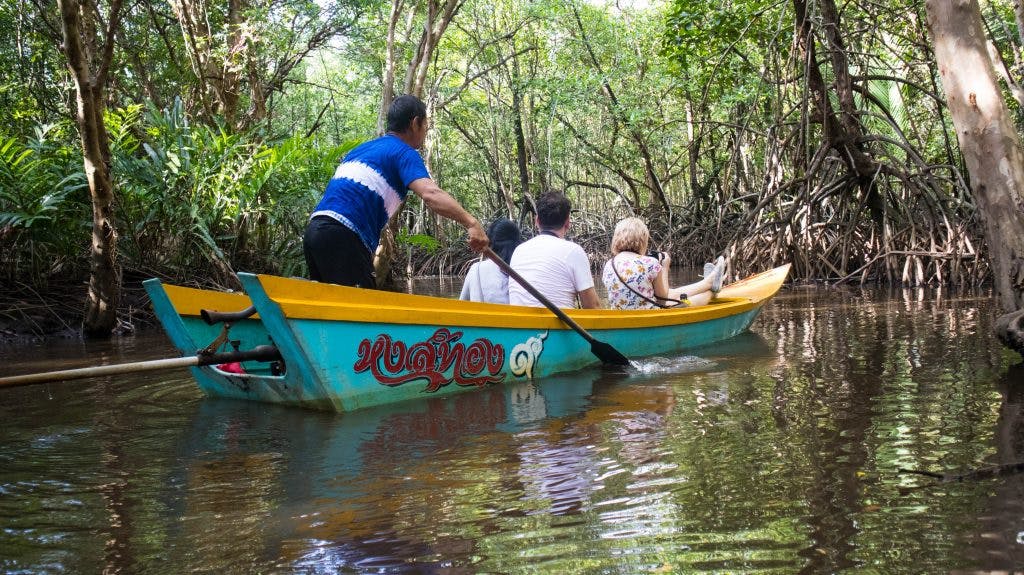
Hungry? The best food in the area can be found at Tiw Tara Restaurant . It’s a bit of a drive as you need to go through some fields and then change to a golf cart to take you to the very end of the road, but it’s worth it! Seafood is the best here and the freshest with soft shell crabs and fish on the menu.
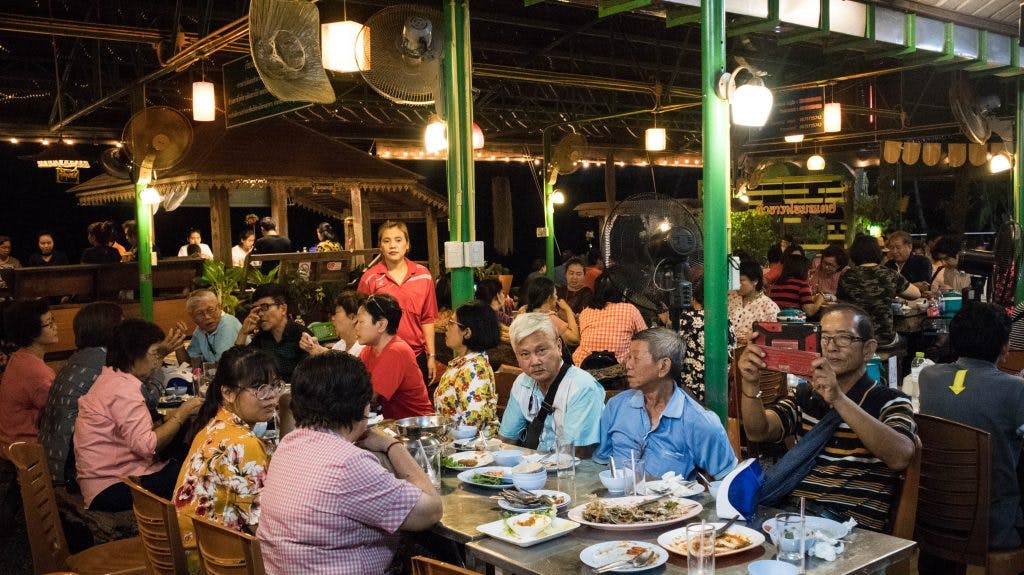
Day 4 – Trat
This is where you will find the most famous island in the area – Koh Chang. Trat is actually more than just this one island. Experiences in Trat vary from ecotourism to food sampling. History buffs will also find something for themselves. It’s really worth exploring the area before heading to Koh Chang.
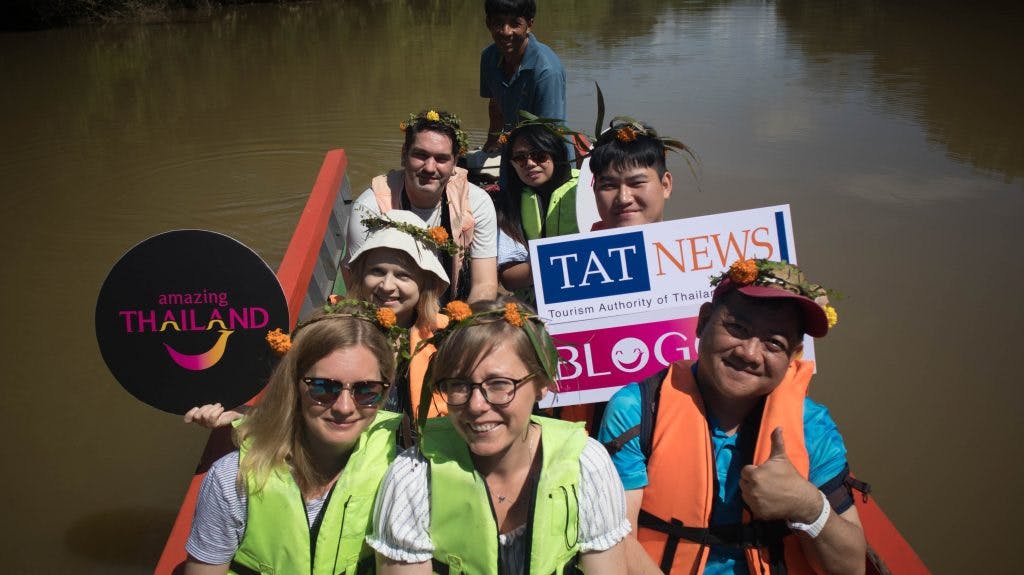
Recommended activities in Trat
My favorite activity in this province was a visit to Huai Raeng Ecotourism Group . The cruise on the canal was just stunning and there was no one on the river except us. On the way, we learned how to cut nipa palm branches and what the locals use them for.
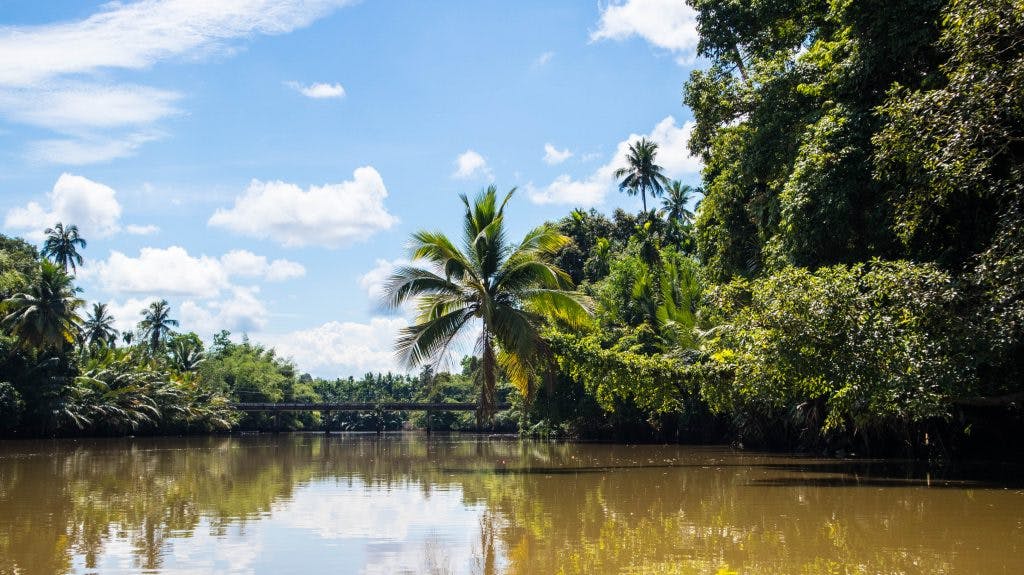
After the cruise, I was invited to try to make desserts made out of nipa palm and coconut. I wasn’t very good at it as they require some art skills, but I did my best.
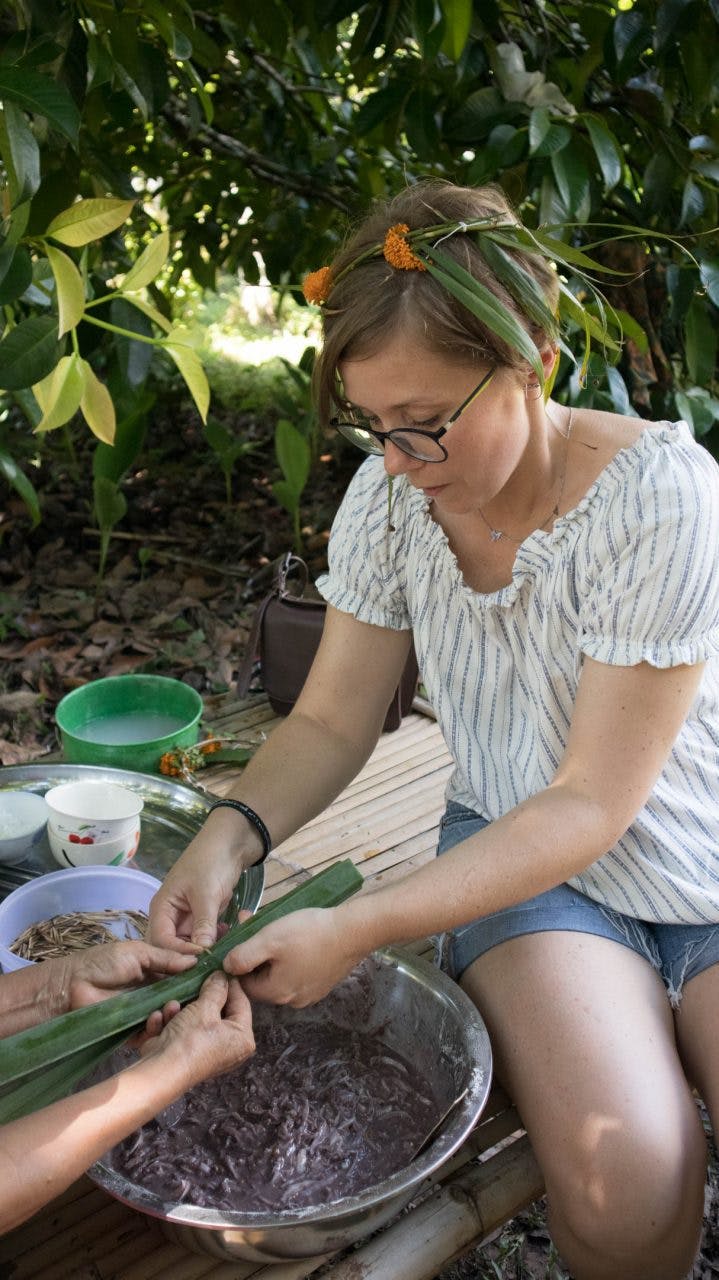
The visit finished with making mangosteen soap. This was my favorite thing to do as I love cosmetics. Lola and Lulu, who were the soap makers were very patient and helped me to make my own soap.
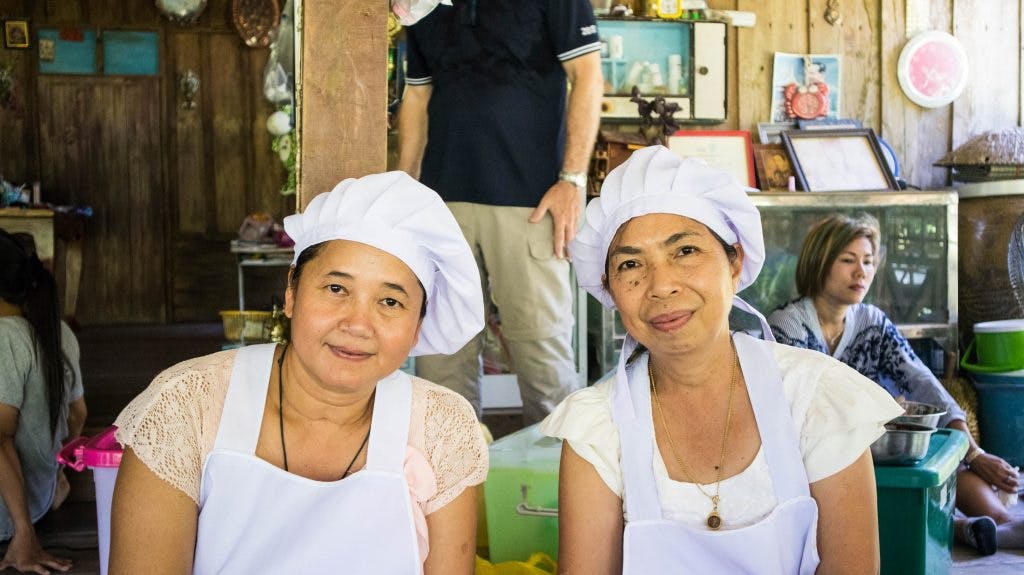
The biggest surprise was lunch at Ton Plat Tin restaurant (ร้านอาหาร ฅนพลัดถิ่น) in Nong Khan Song. The food was great, but it was the hawks flying around that were the most amazing. For some reason, these birds nest here and then come out to hunt when the owners feed the fish in the pond. One of the hawks with a broken wing was being looked after during our visit and we could have a closer look at it.
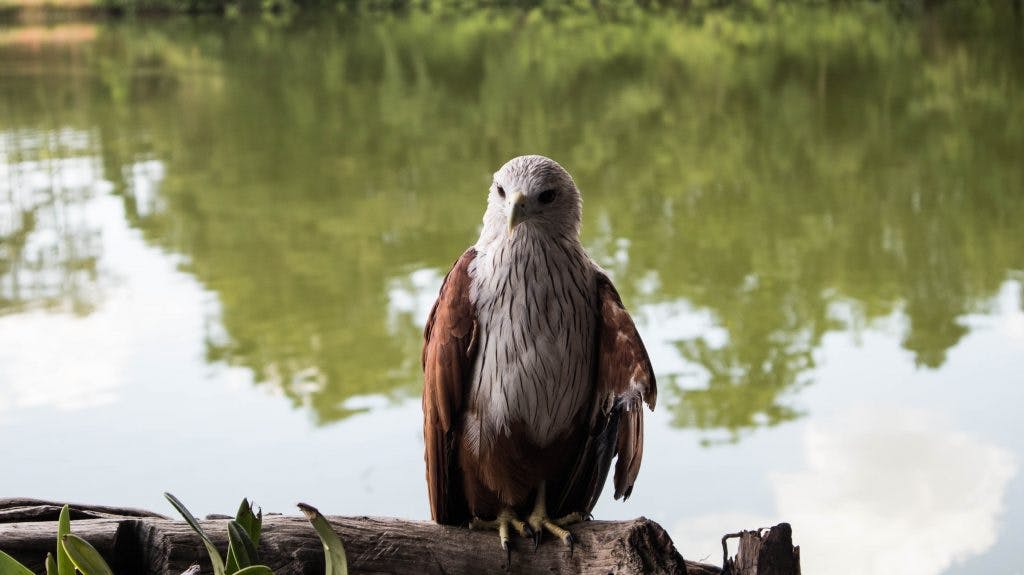
How to get to Trat?
Trat has a very small airport and you can take a flight to and from Bangkok . There are also buses from Morchit Bangkok directly to Trat . The journey takes 6 hours and tickets cost around 350 Baht.
If you’re traveling from Chanthaburi, you will be able to catch a direct bus to Trat from the main bus station. The ticket costs 50 Baht and the journey takes 1.5 hours.
Accommodation in Trat
Mango Beach Resort – a beautiful and peaceful resort on the beach. It’s quite far from the main town, so this is an option for you if you want to relax and do your sightseeing in the meantime.
Pop Guesthouse – probably the cheapest option in town. The property has a bar and a restaurant. There are only shared bathrooms and some rooms have no air con.
Trat City Hotel – it’s a good option for people, who want peace and quiet and access to a swimming pool and fitness. The rooms are quite small but still spacious enough for 2 people.
Day 5 – Trat
The last day can be a little less intense. I recommend visiting the local museum in Trat , which has a lot of information in English about the area. If you like history then you will be really happy here.
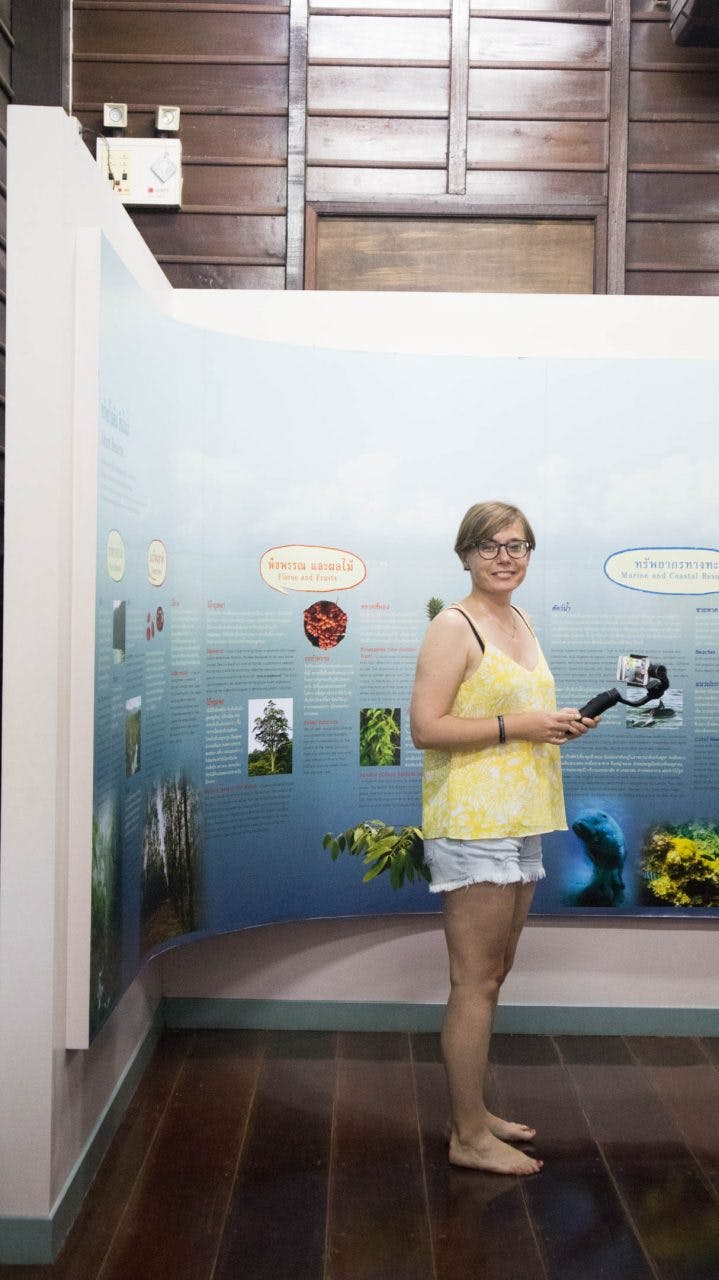
Trat also houses Wat Buppharam (วัดบุปผาราม) – a temple from the 17th century. Most of the buildings are opened to visitors but ask to see Ubosot, which holds the ancient Thai-Chinese murals.
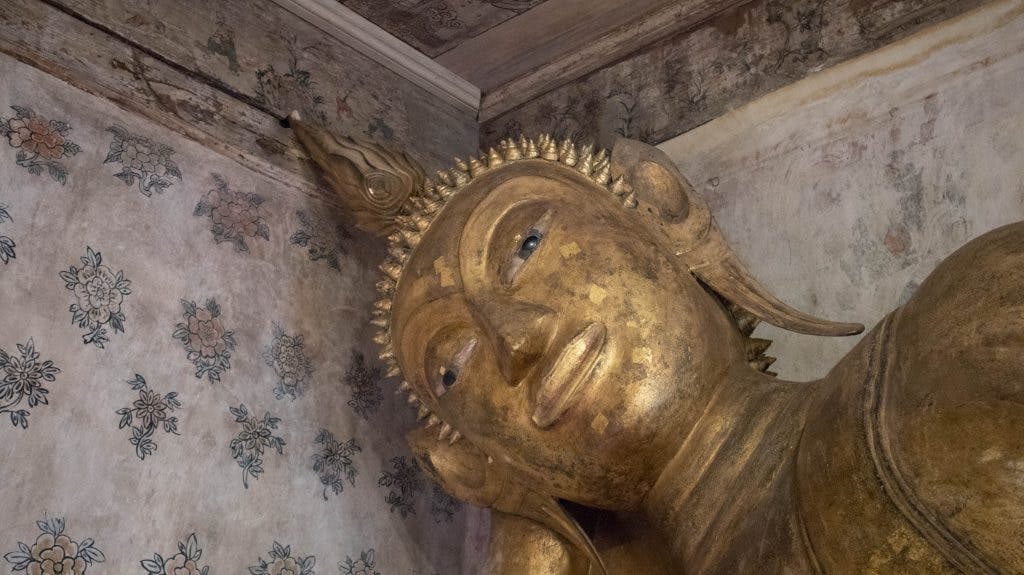
From here you can go to Laem Ngop Harbor – a lovely little spot with a lighthouse. You can catch a ferry from here to Koh Chang, or head to the airport and go back to Bangkok.
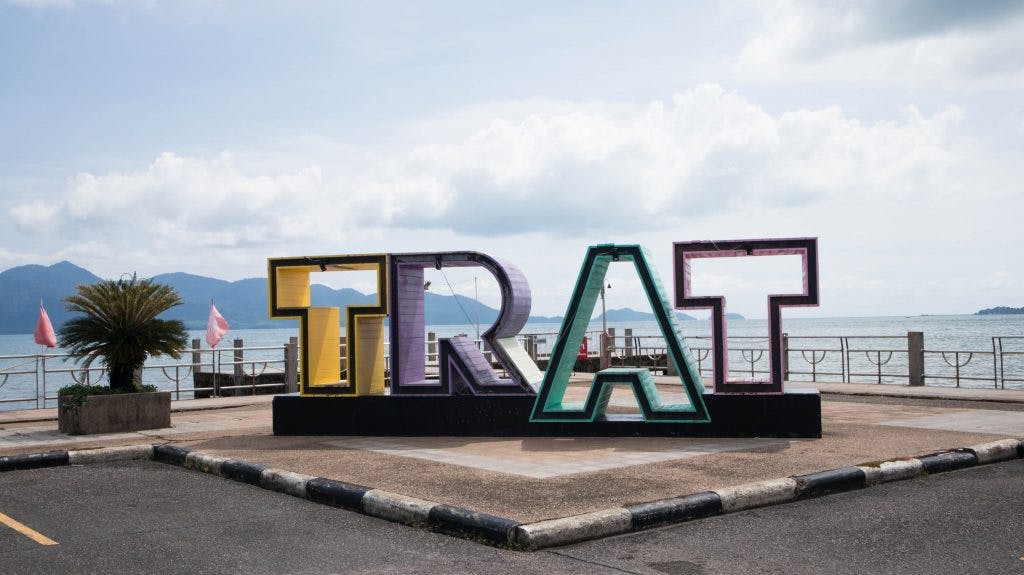
I hope you enjoyed this itinerary for Rayong, Chanthabury and Trat. This is of course not everything you can do and see in the east. If you’re looking for more options and more activities, I recommend Take Me Tour , which creates tourists and local guides to create memorable and unique tours.
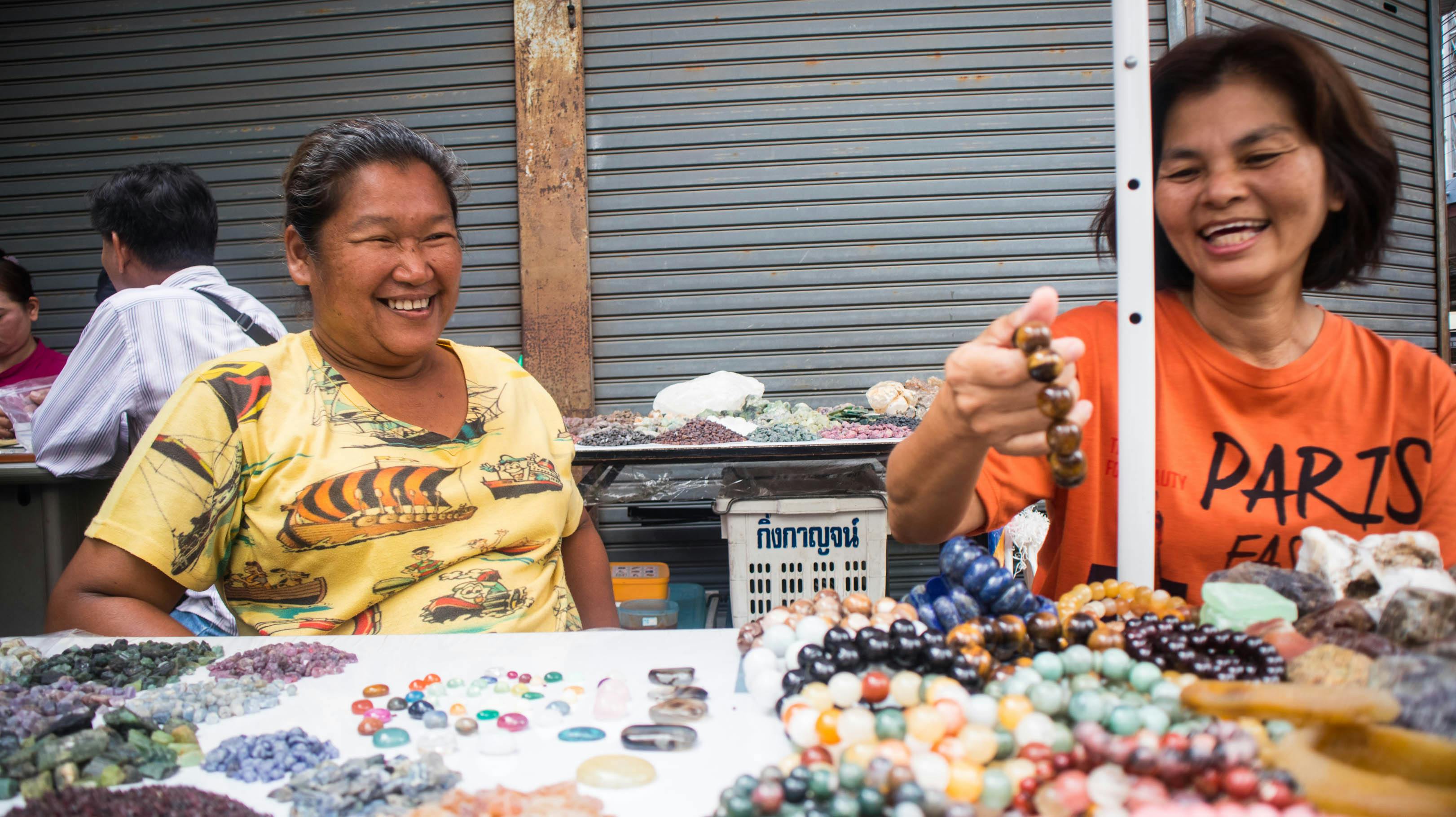
Chanthaburi – the gem of Thailand
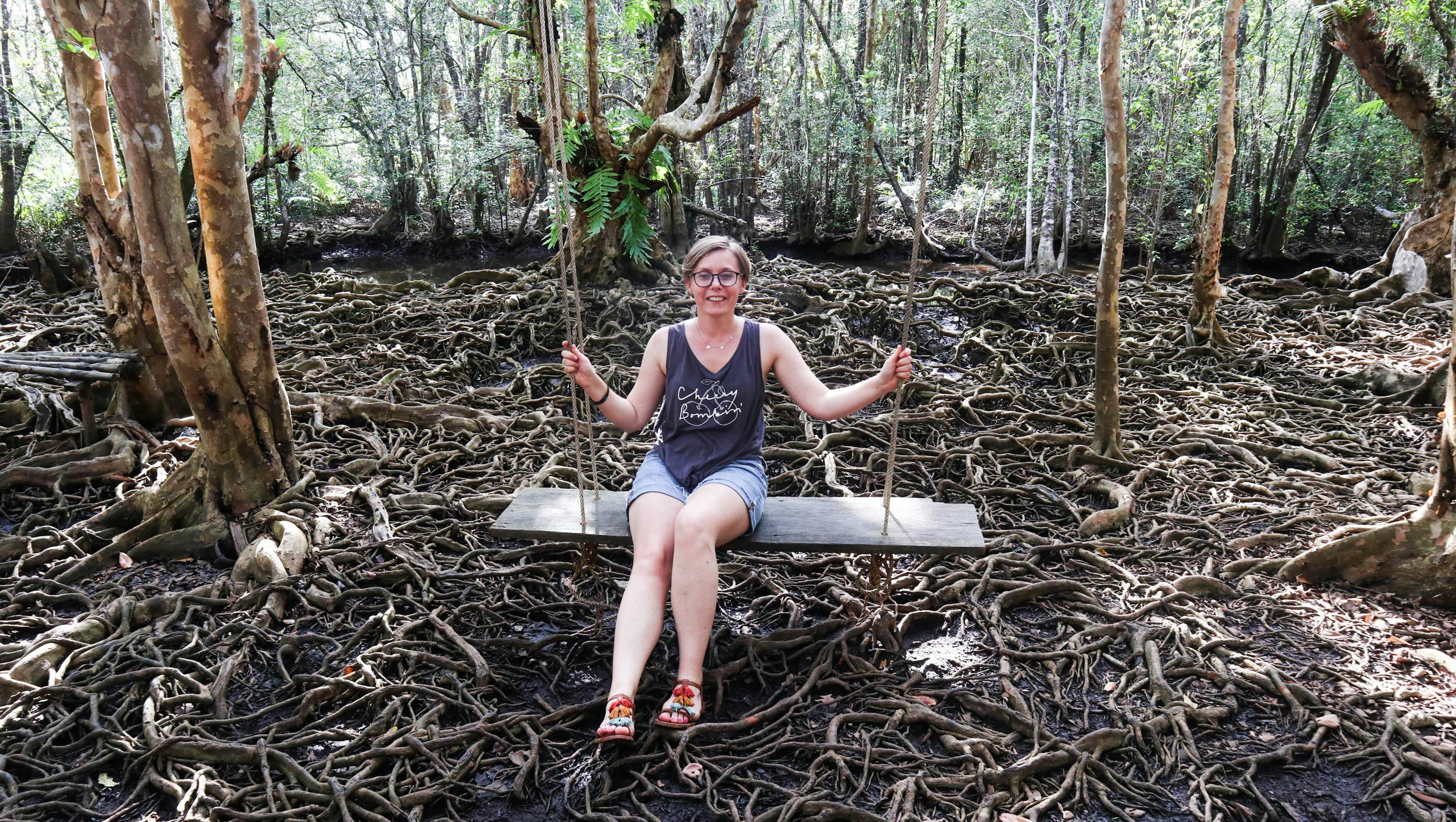
Trat: It’s all about the experience
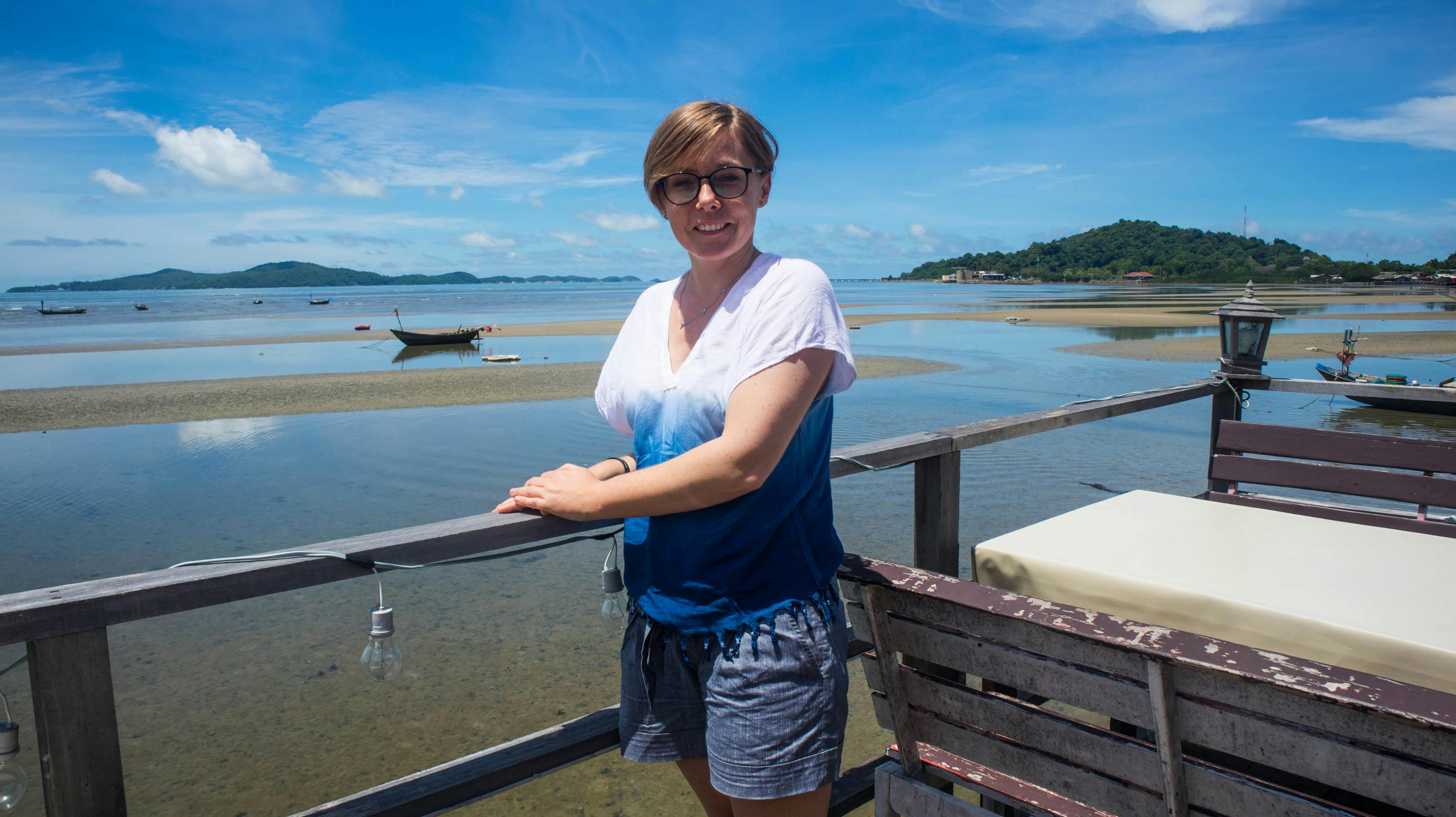
What to do in Rayong province?
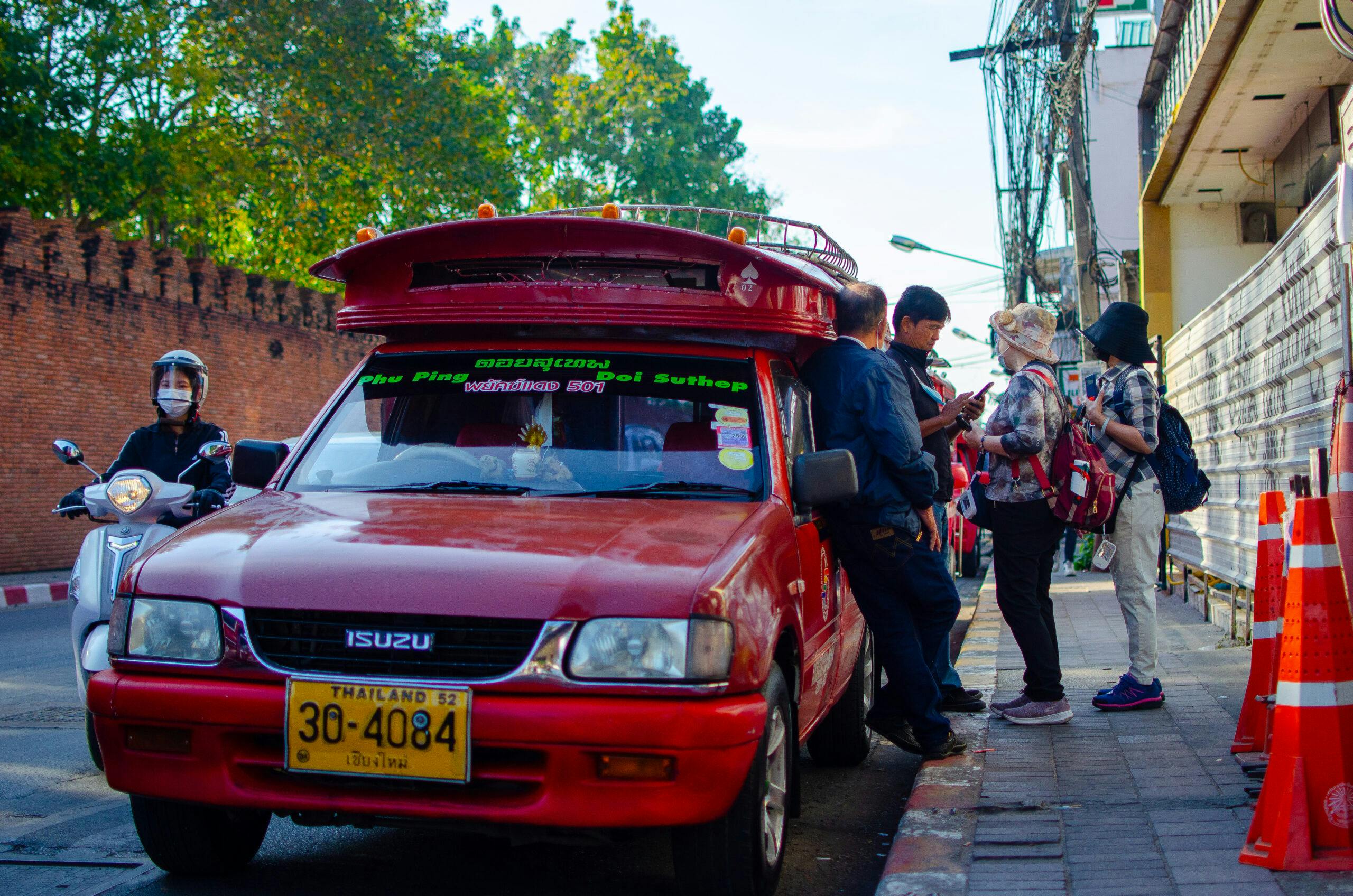
How to get to Chiang Mai by train, bus and plane
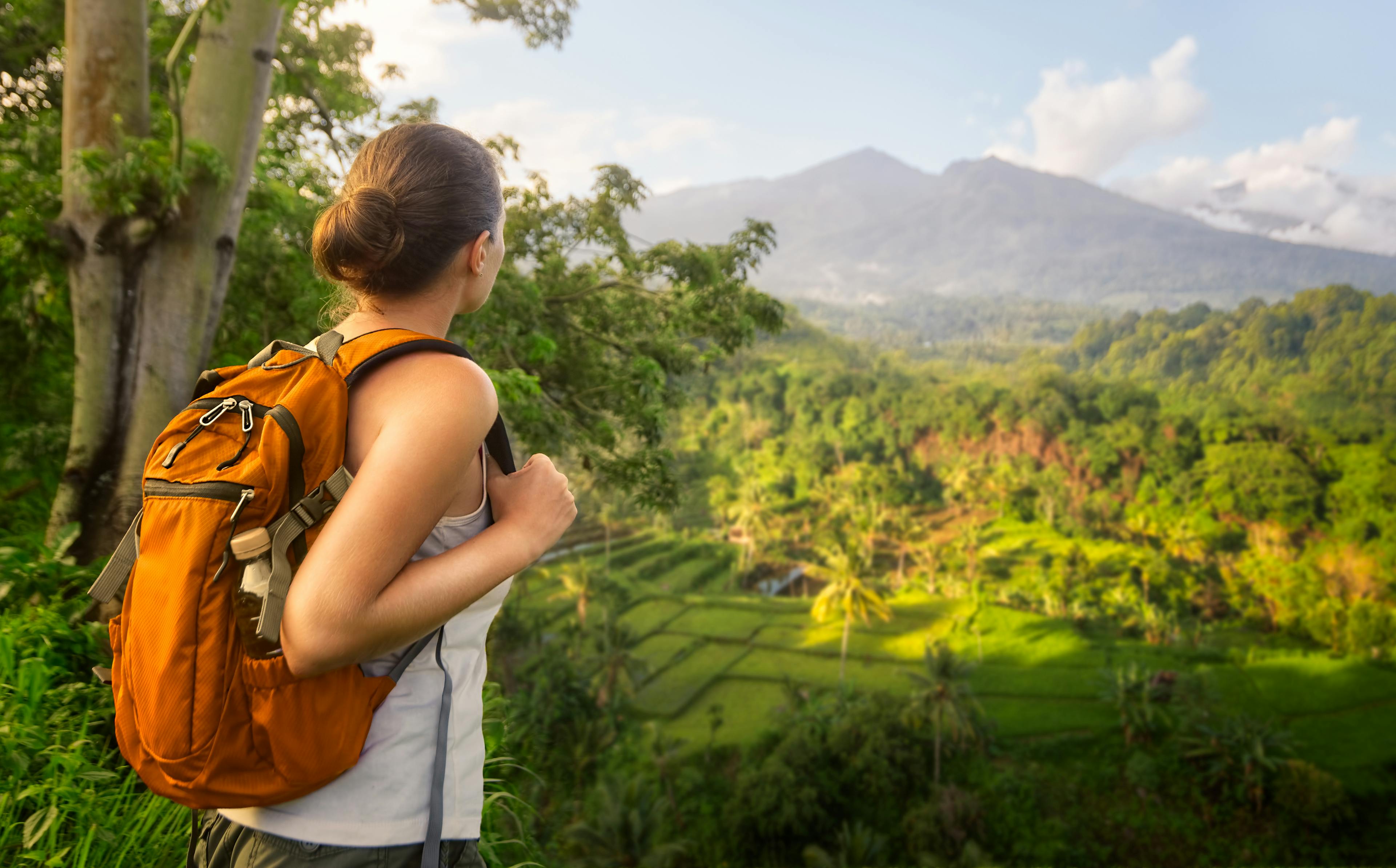
What to pack for your backpacking trip in Southeast Asia
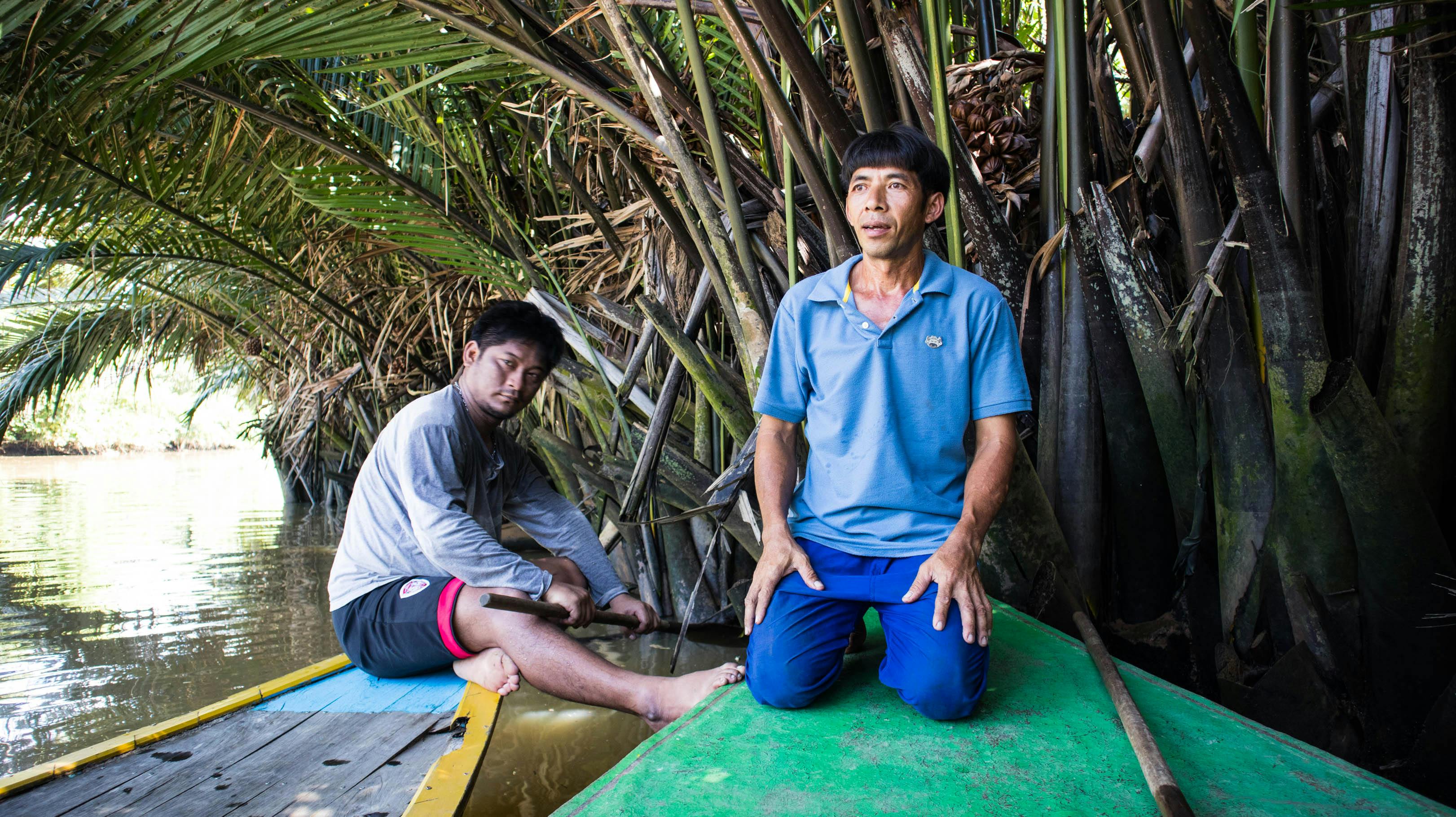
The east of Thailand: Your off the beaten path destination
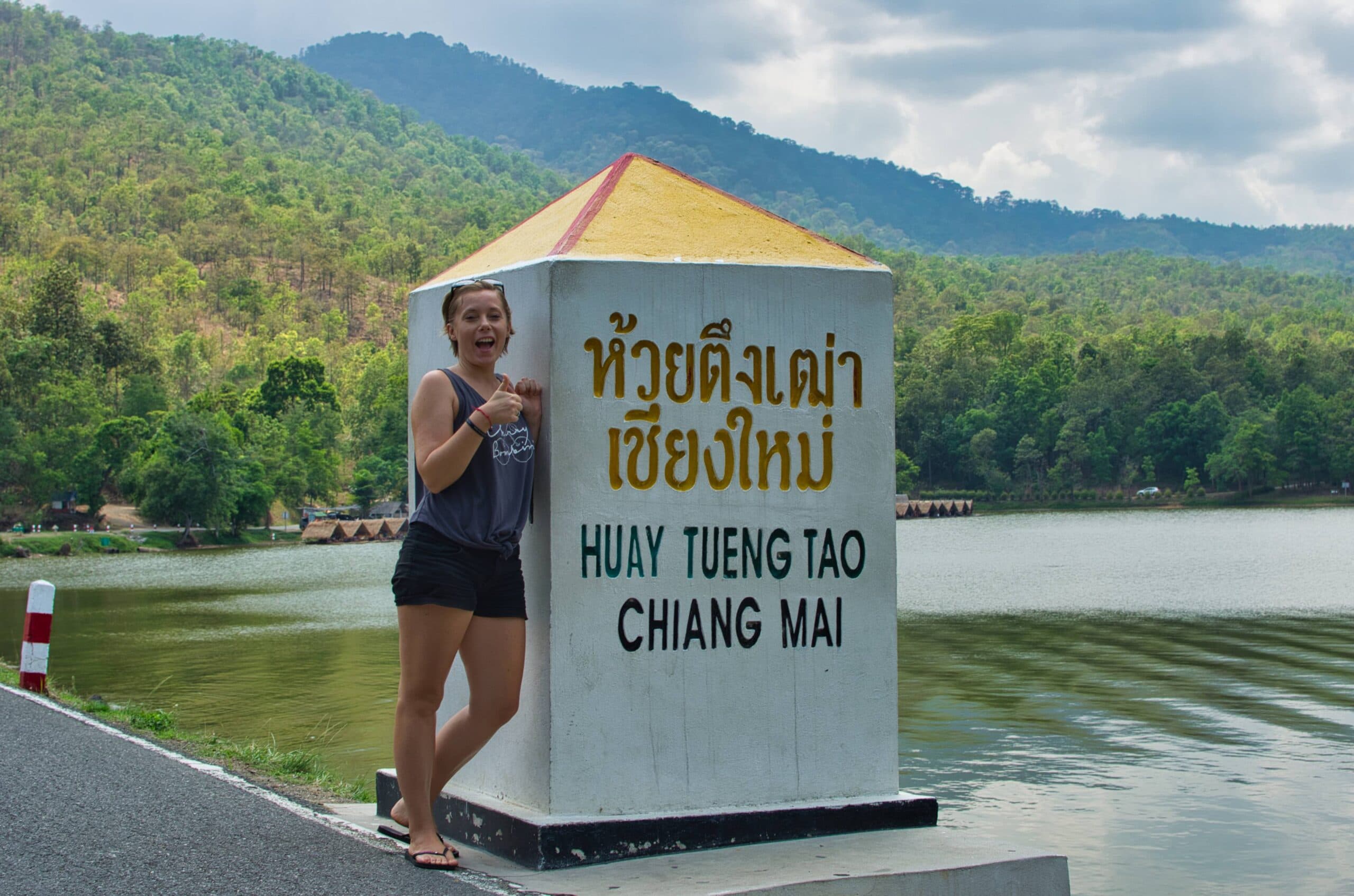
Thailand for nature lovers: Add these popular spots to your travel list
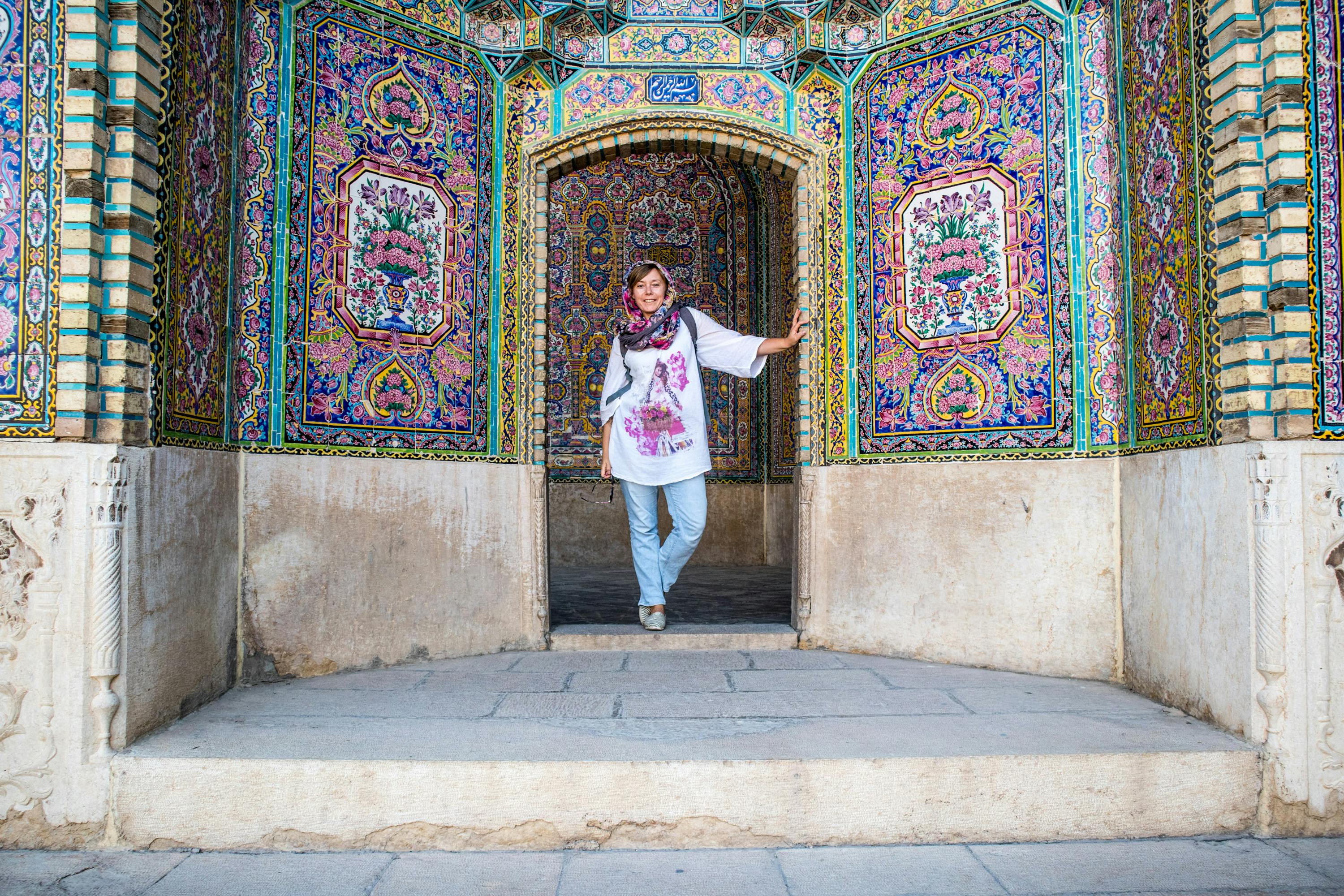
Is Iran dangerous for solo female travellers?
All you need to know to visit Trat
- directions_transit Go/Leave
- local_hotel Find room
- photo_camera To visit
- travel_explore To do
- thermostat Weather
- local_taxi Getting around

BOOK your tickets from Bangkok to Trat online
Practical guide to go and visit Trat

Accommodations in Trat
Find accommodation in trat, my recommandations.

Hotel in Trat
arrow_circle_right See all accommodations in Trat
Practical information about Trat
How to go to trat .
arrow_circle_right See all options to go to Trat
Festivals in Trat ?

Trat Loi Krathong Festival
This festival generally takes place in the month of November
arrow_circle_right Plus d'infos sur Trat Loi Krathong Festival
Other places to see in Trat

Weather & climate in Trat
The best time to come to Trat is from December to March, with the driest months being December, January and February. From May to the end of October, it is better to choose another destination. Precipitations flirt with the 500 mm from June to September.
arrow_circle_right See weather forecast in Trat
When to go to Trat ?
How to ask in thai to go to trat .

All COVID-19 restrictions for coming to Thailand lifted from October 1 !
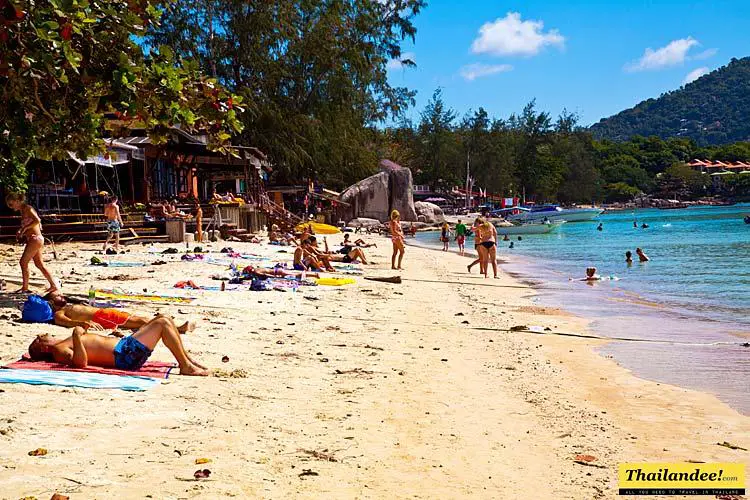
We have been waiting for it for months, hoping it will happen on July 1, but it will finally be October 1, 2022, when Thailand will lift the last COVID restrictions to enter the country. From this date, it will no longer be necessary to show...
arrow_circle_right arrow_circle_right arrow_circle_right Read post
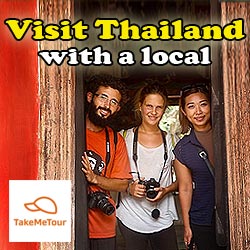

The Beauty of The East
Trat is Thailand’s eastern-most province, located about 315 kilometers from Bangkok. This small province borders Cambodia with the Khao Banthat mountain range forming a natural boundary between the two countries. With 52 large and small islands featuring long, white, sandy beaches and unspoiled coral reefs, Trat offers delightful scenery and a number of tranquil hideouts for beach and nature-lovers. The province also serves as a major fruit-growing, fishing, and gem mining region.
The city of Trat is the primary launching point for trips to the popular Koh Chang island group as well as for forays to visit both gem markets and Cambodian border markets. Like Chanthaburi, Trat is a very important ruby-mining province, with the most famous gem market located in Bo Rai District, some 50 kilometers north of the Cambodian border. Those enthralled by shopping will be delighted as Trat has more markets for its size than almost any other town in Thailand due to bustling Cambodian and coastal trade.
TOP THINGS TO DO
Visit the famous islands of Trat where you can enjoy islands hopping, beach swimming, snorkeling, and water activities. Pay respect to the statue of Prince Chumphon, father of the Thai navy at Ko Chang Naval Battle Memorial and stroll around the city of Trat to see historical and religious sites.
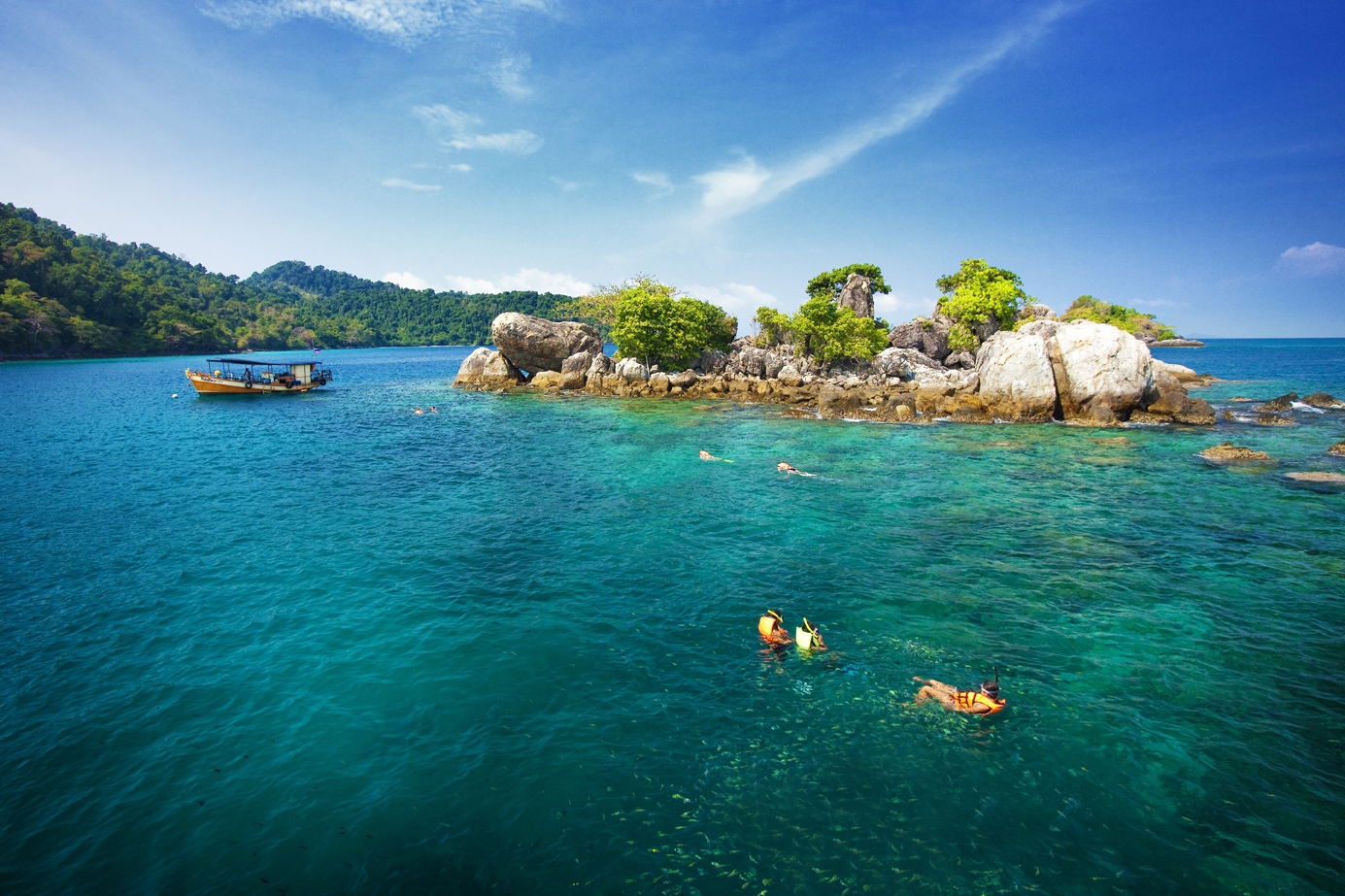
The largest island in the Gulf of Thailand
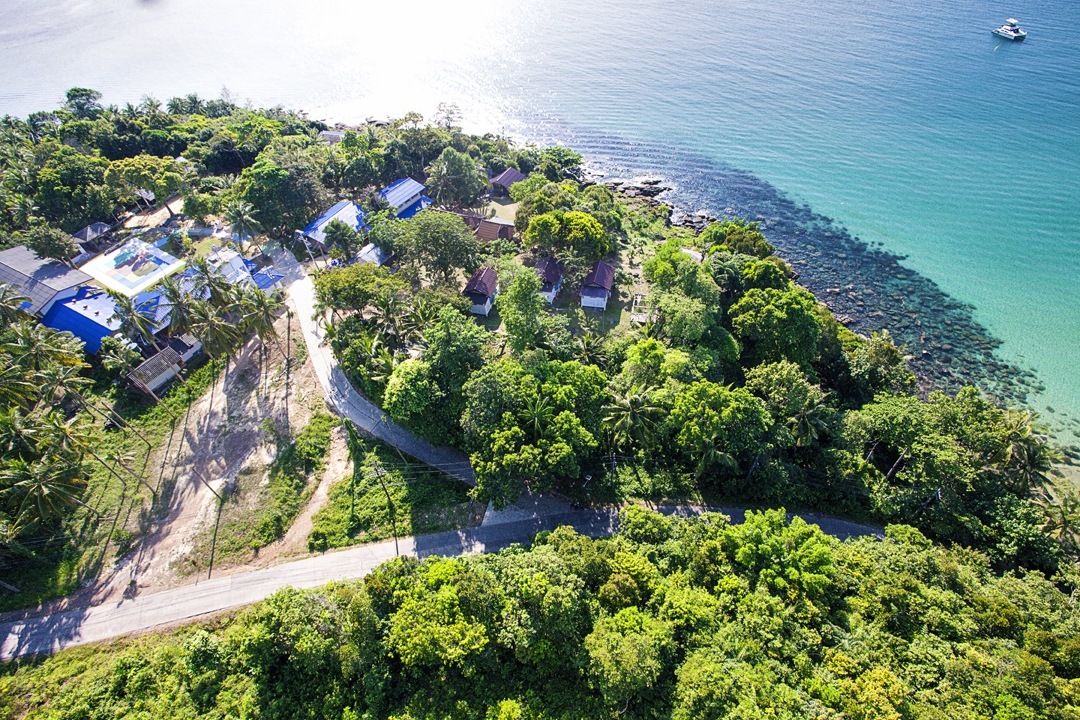
Thailand’s easternmost island.
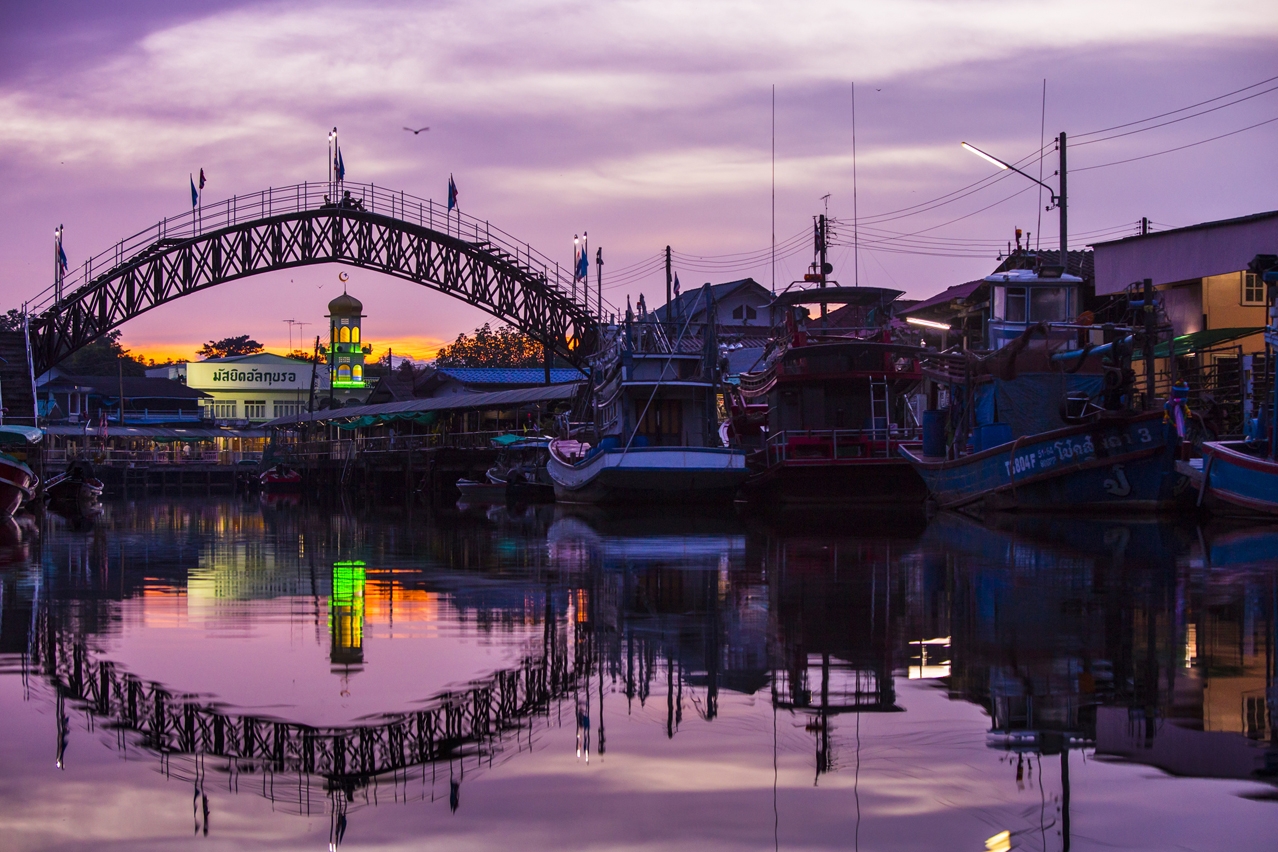
Baan Nam Chiao
Live the local life in multi-religious community

The Safari of the Gulf of Thailand
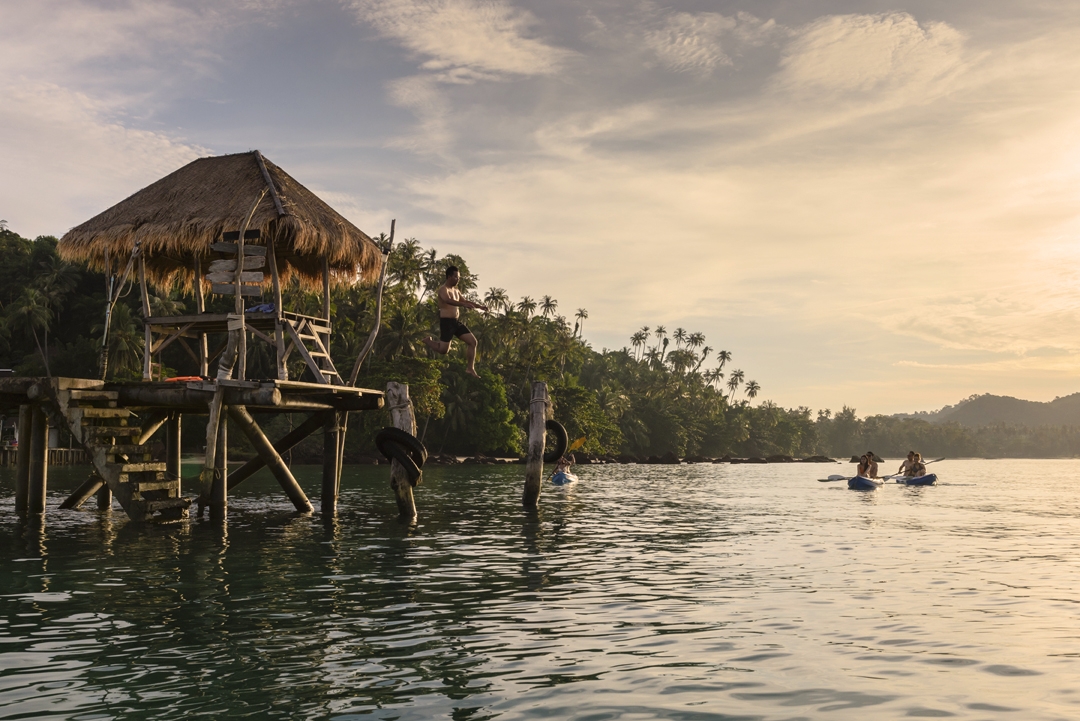
The white sandy beaches and calm crystal clear water.
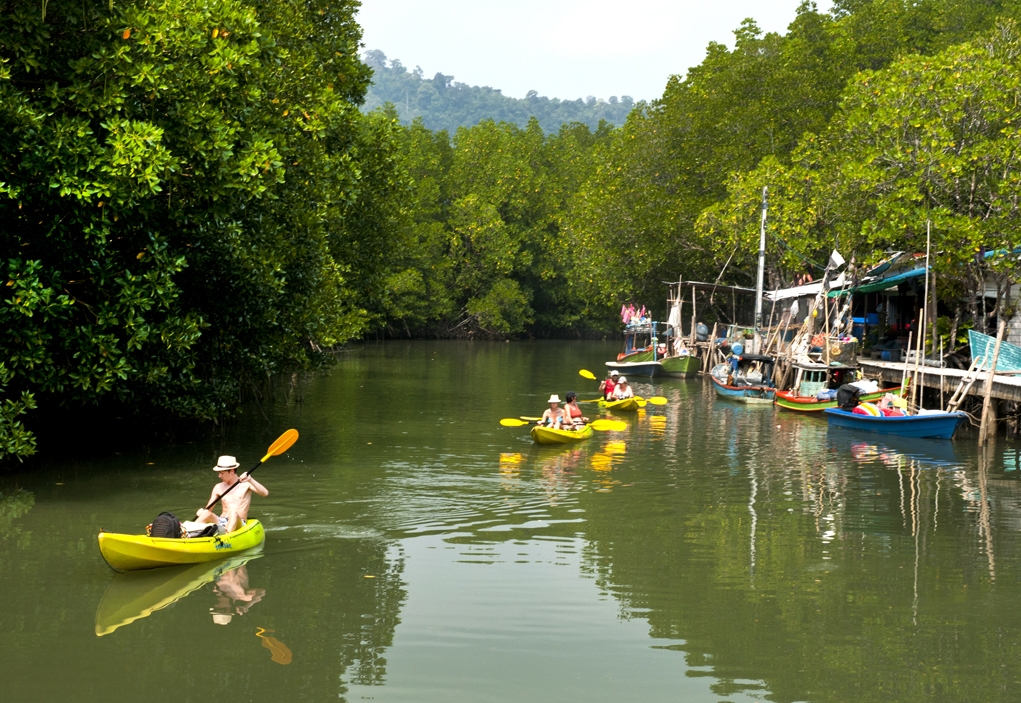
Baan Salak Khok
Traditional fishing village life

Ban Tha Ranae mangrove forest
Uncover the story of revival and see the wondrous roots
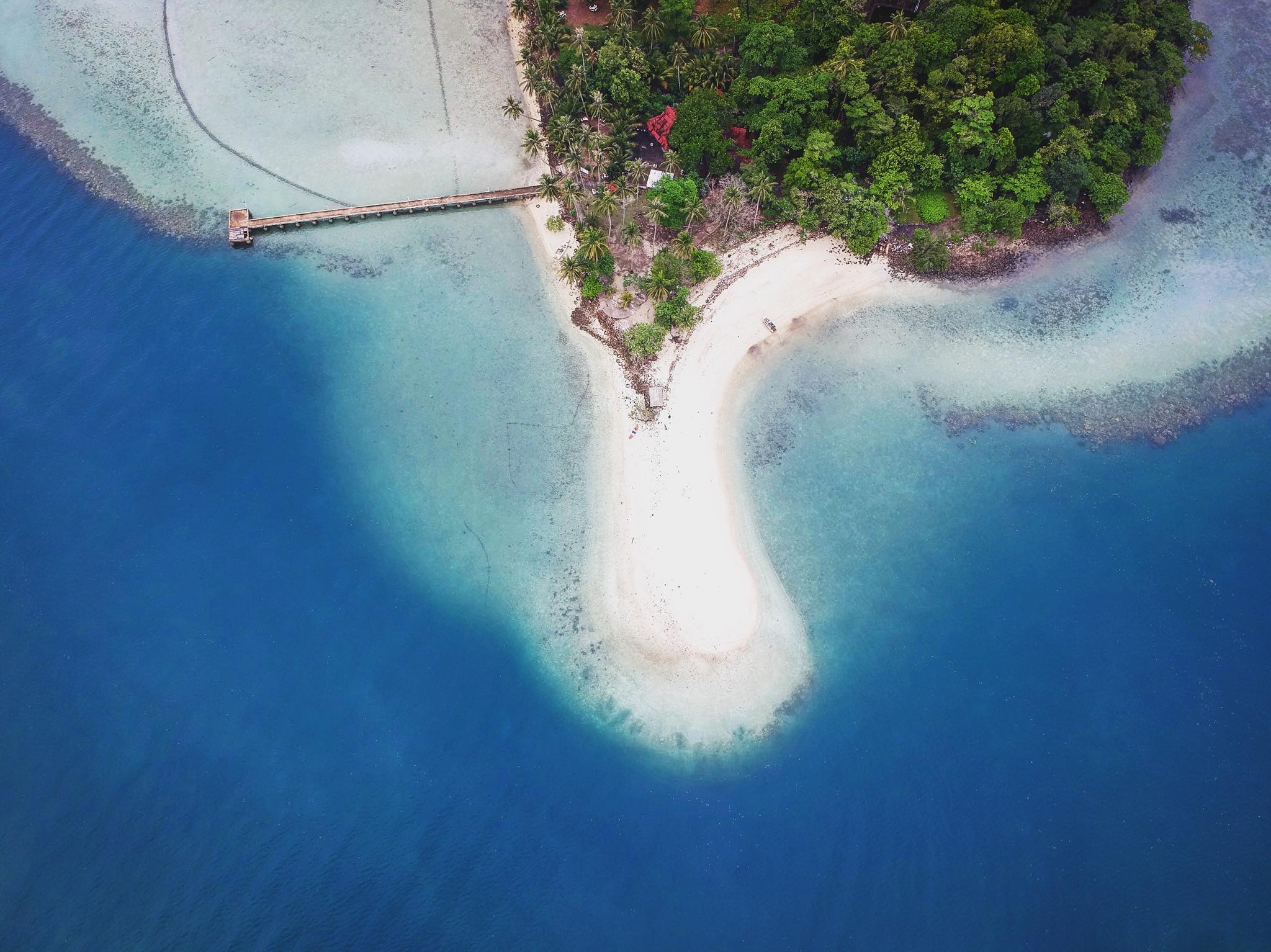
Koh Sai Kaow, Talay Waek
Pull up on the lovely white sand beach, have a swim and then take a walk around the island
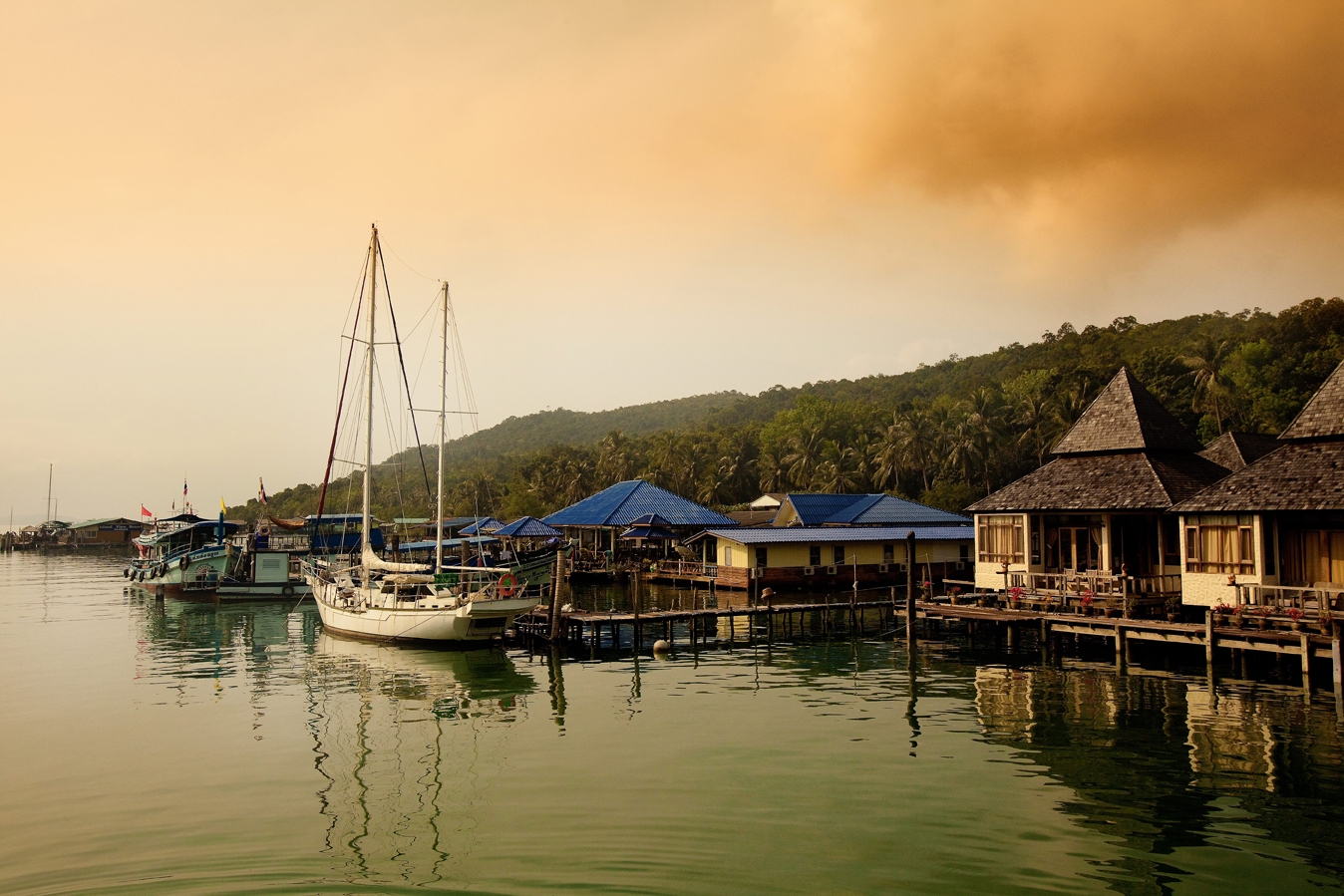
Baan Salak Peth
Salakphet offers some great views, local homestays plus the hard to reach, remote Long beach
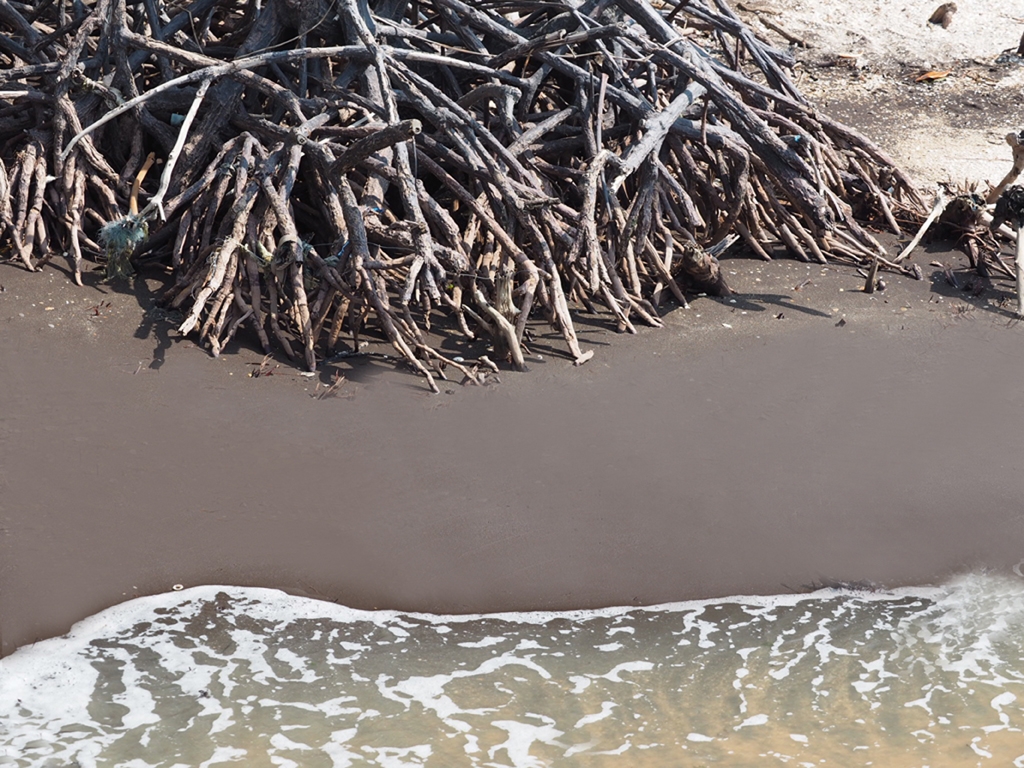
Black Sand Beach
Treat your feet to natural spa at Black Sand Beach, Laem Ngop
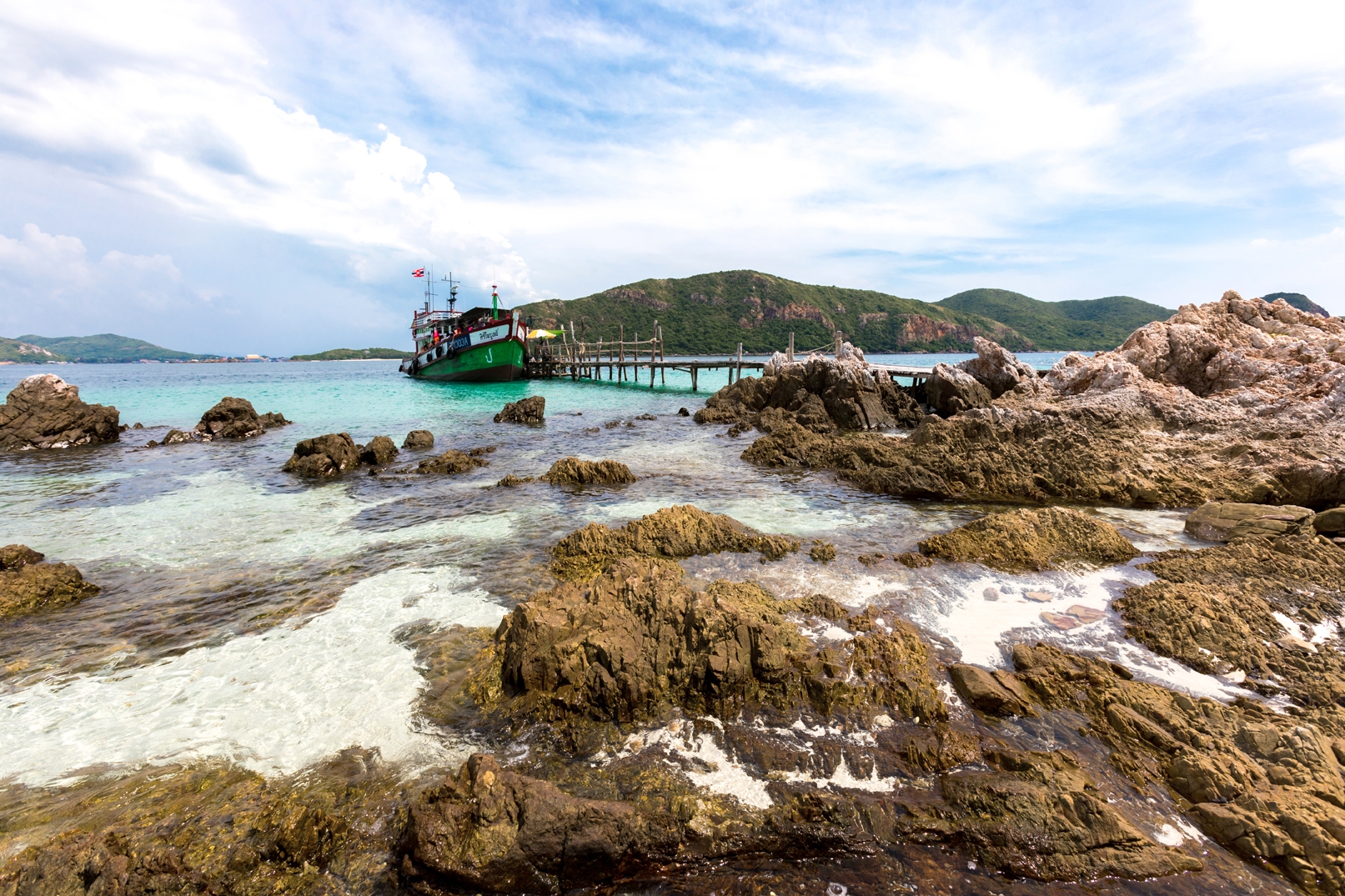
Beautiful island in the northeast gulf of Thailand
TRANSPORTATION
How do you get around in trat.
The markets, city centre and old town are all close enough together that Trat is easy to explore on foot. At the bus station and day market you’ll find some motorbike taxis and small songthaews that serve as regular taxis.
Those looking for a bicycle should look around the old town at guesthouses like Pop, Basar, Tattoo, Sangjun and Ban Jaidee; expect to pay around 50 baht for a simple pushbike. Motorbike rental is available at Thip Barber Shop, Tattoo Guesthouse and other old-town spots for around 200 baht per day.
How to get to Trat?
Trat town is around 290 km east of Bangkok and 90 km west of the Cambodia border, where the Had Lek / Koh Kong border crossing is handy for travellers reaching the coast and islands of either country. Frequent buses and minibuses run east to the border and west to Chanthaburi and Bangkok, and the town is a transit point for the islands of Ko Chang, Ko Mak and Ko Kut.
Trat’s tiny airport is located 30 kilometres west of town, serviced only by a couple of daily flights to/from Bangkok’s Suvarnabhumi Airport with Bangkok Airways . We’ve never used this airport; locals told us that minibus tickets to Trat town cost a whopping 500 baht per person. Private taxis are also available.
The provincial bus station is located off Route 3 towards the north end of the city, less than two kilometres north of the old town. Motorbike taxis and songthaews charge 30 to 100 baht for a lift to/from any guesthouse in town.
Book popular routes online with 12Go Asia Bangkok to Trat Pattaya to Trat

Passing Thru Travel
Discover Thailand: Your Ultimate Guide to 20 Incredible Destinations in 2024
Posted: March 5, 2024 | Last updated: March 5, 2024
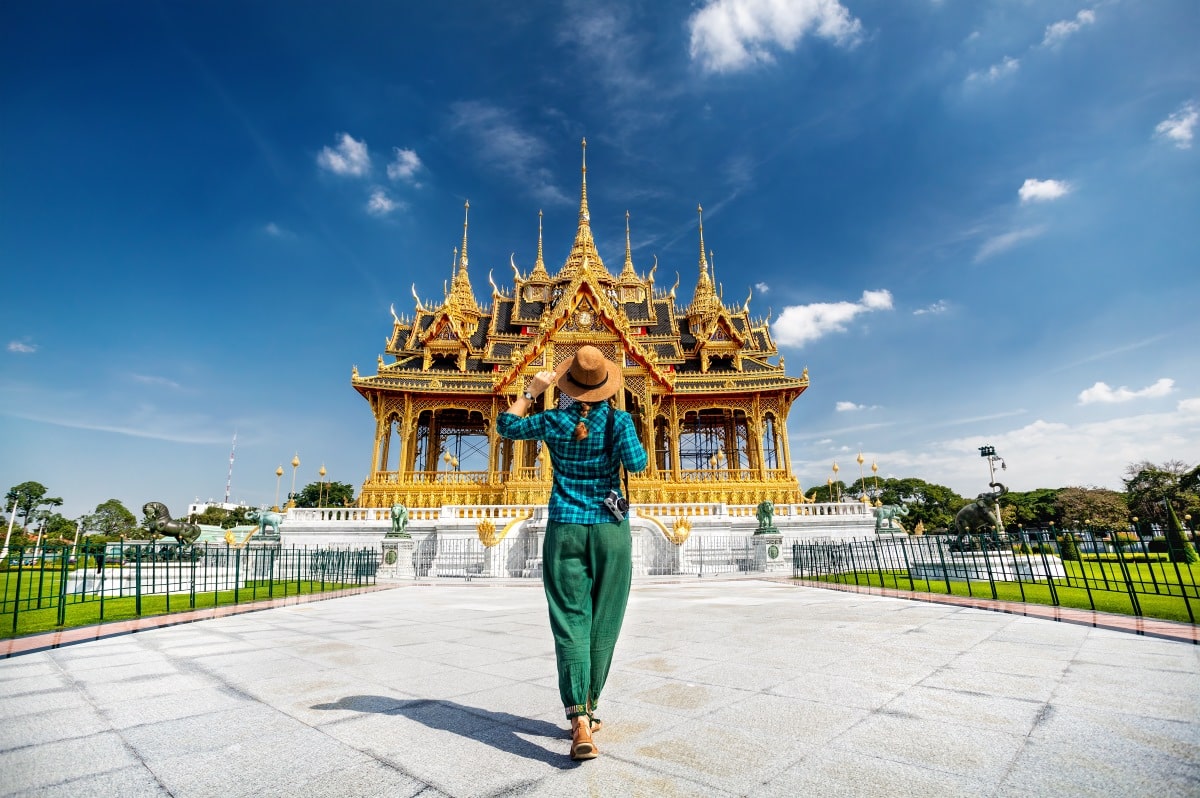
Thailand, with its rich cultural heritage, stunning landscapes, and renowned hospitality, offers a plethora of experiences for every traveler. From the bustling streets of Bangkok to the serene beaches of the south and the lush mountains of the north, this guide will take you through the diverse facets of Thailand, ensuring a journey filled with discovery and wonder.
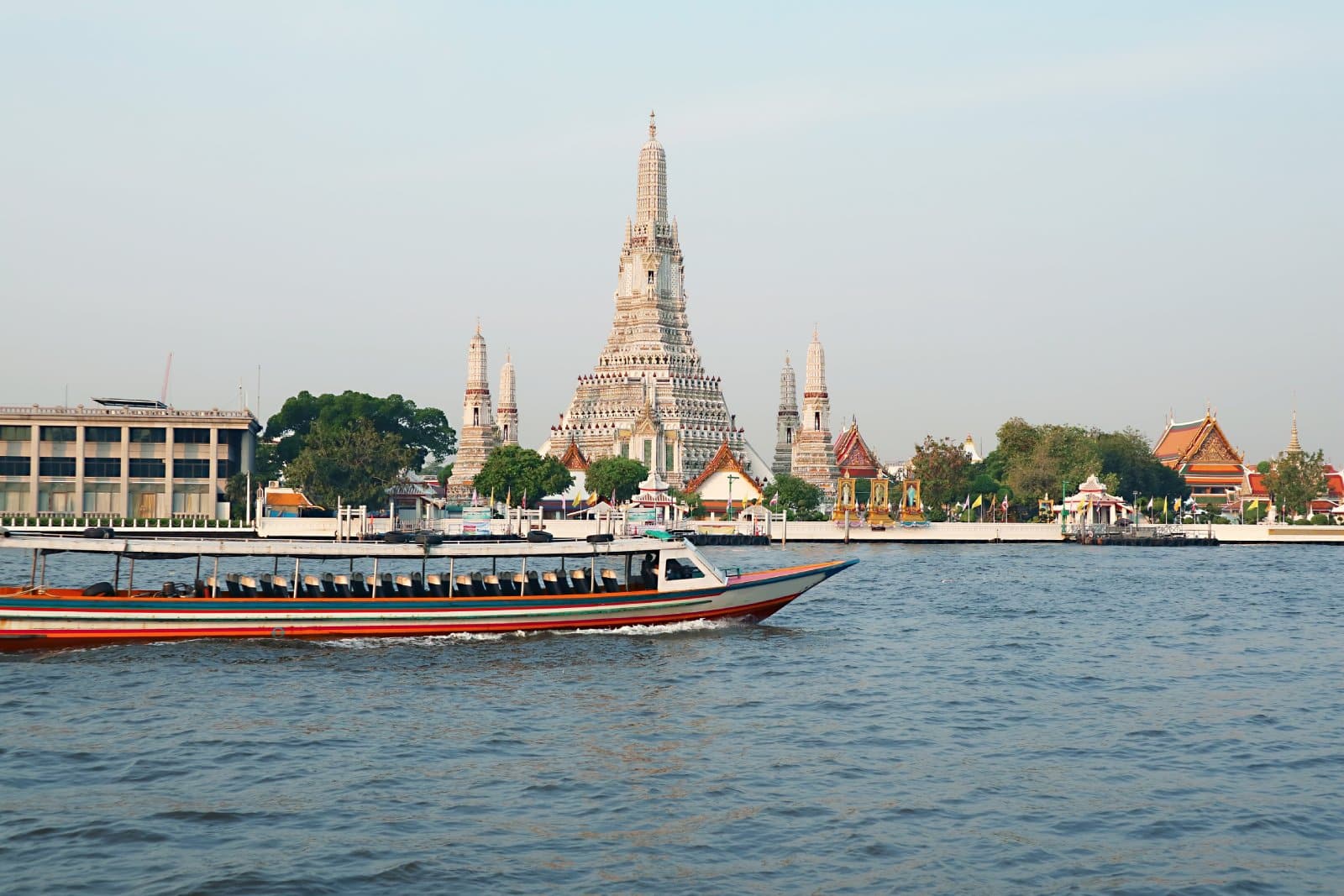
Bangkok, a city where ancient traditions seamlessly blend with modernity, offers an experience like no other. As you navigate its bustling streets, you’ll encounter magnificent temples such as Wat Phra Kaew and Wat Arun, standing as serene sanctuaries amidst the urban chaos. The Grand Palace, a former royal residence, highlights the city’s rich history and architectural grandeur.
For shopping enthusiasts, the sprawling Chatuchak Weekend Market presents a labyrinth of stalls selling everything from vintage clothing to local handicrafts. Don’t miss the opportunity to indulge in Bangkok’s renowned street food, where dishes like Pad Thai and Som Tam are served with authentic flavors.
The city’s vibrant nightlife, from rooftop bars to lively street markets, pulsates with energy, offering a glimpse into the contemporary lifestyle of Bangkok’s residents. Navigating Bangkok explores contrasts, where each turn presents a new facet of this dynamic city.
Insider’s Tip: Visit the lesser-known but equally impressive Wat Benchamabophit for a more tranquil temple experience.
How To Get There: Bangkok is accessible by its two main airports, Suvarnabhumi and Don Mueang. The city has an extensive public transport system, including the BTS Skytrain and MRT.
Best Time To Travel: The cool season from November to February is ideal, with pleasant weather and numerous festivals.

2. Chiang Mai
In Chiang Mai, the cultural heart of Northern Thailand, you’ll find a more laid-back atmosphere than Bangkok’s frenetic energy. The city is replete with historic temples, the most famous being Wat Phra Singh and Wat Chedi Luang, each offering a peaceful retreat and a look into the spiritual practices of the locals. The Night Bazaar and Sunday Walking Street Market are hubs for artisanal crafts and street food, reflecting the city’s artistic flair and culinary richness.
Just outside the city, the lush landscapes of Doi Inthanon National Park await, with trekking trails leading to waterfalls and hill tribe villages. Chiang Mai’s charm lies in its blend of history, culture, and nature, providing a holistic experience of Thailand’s northern region.
Whether you’re exploring its ancient temples, engaging in a traditional Thai cooking class, or wandering through its vibrant markets, Chiang Mai captivates with its serene beauty and rich cultural tapestry.
Insider’s Tip: Take a Thai cooking class to delve deeper into the region’s unique flavors.
How To Get There: Chiang Mai has an international airport and is also accessible by train or bus from Bangkok.
Best Time To Travel: Visit during the cool season, particularly in November, for the Yi Peng Lantern Festival.
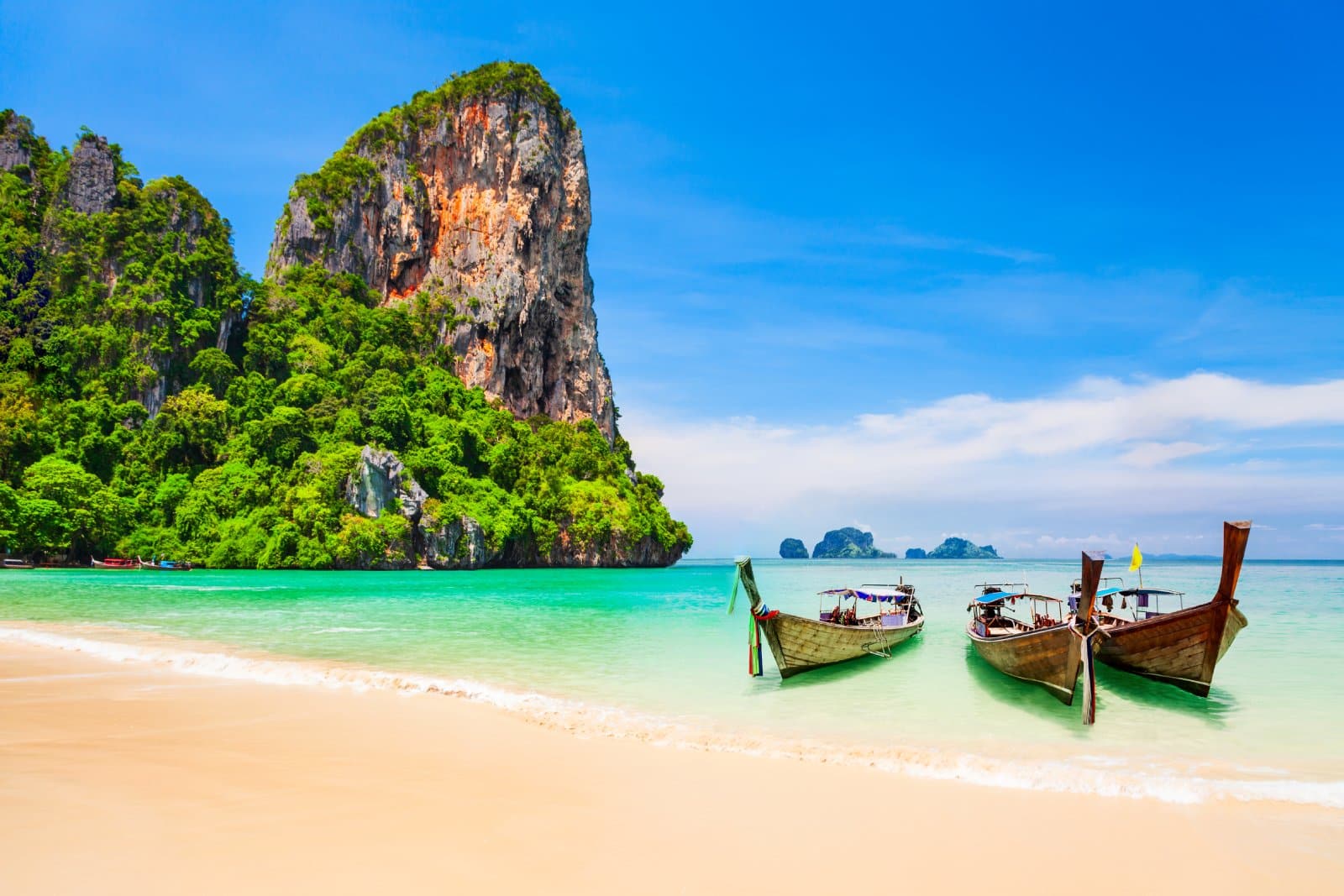
Phuket, Thailand’s largest island, is a blend of experiences catering to those seeking relaxation and adventure. The island’s beaches, like Patong, Kata, and Karon, offer a range of atmospheres, from bustling shores with water sports activities to more tranquil retreats. Beyond its stunning beaches, Phuket’s Old Town reveals a different side of the island, with Sino-Portuguese architecture and a burgeoning arts scene.
A visit to the Big Buddha is a must for a panoramic view of the island. The surrounding waters of Phuket, particularly the Phi Phi Islands and Similan Islands, are a paradise for divers and snorkelers, boasting vibrant marine life and crystal-clear waters.
Phuket’s nightlife, especially in Patong, pulsates with energy, offering many entertainment options. The island’s diversity, from its natural beauty to cultural richness, makes Phuket a microcosm of Thailand’s allure.
Insider’s Tip: Take a day trip to the Phi Phi Islands for some of the best snorkeling and diving.
How To Get There: Phuket is accessible by its international airport or by bus and ferry from the mainland.
Best Time To Travel: The best weather is from November to February, with calm seas and sunny skies.
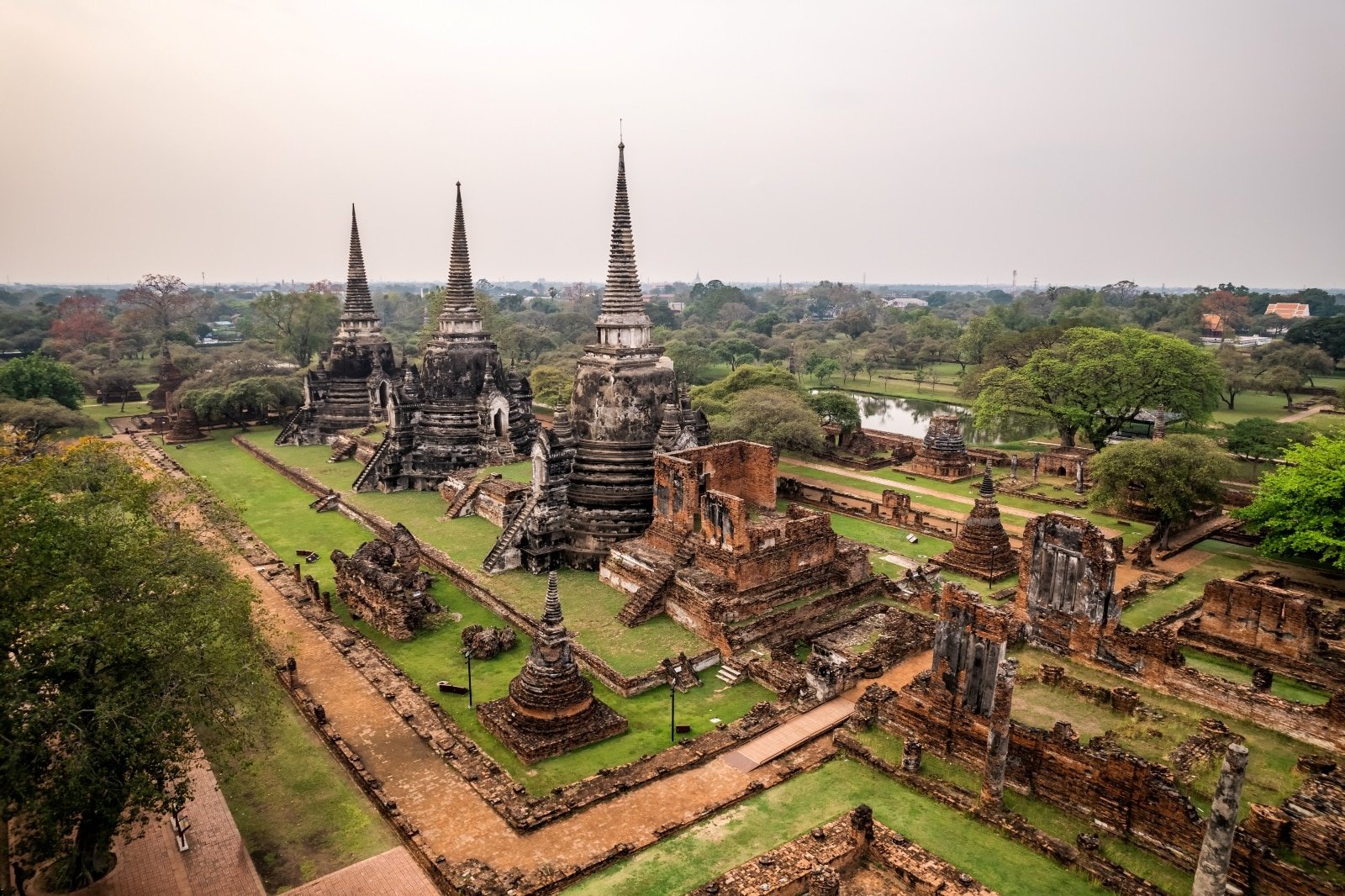
4. Ayutthaya
The ancient city of Ayutthaya, once the capital of the Kingdom of Siam, stands today as a UNESCO World Heritage Site, offering a journey through Thailand’s storied past. As you wander through the historical park, you’ll encounter the ruins of temples and palaces, each telling a tale of the city’s former glory and subsequent destruction.
The site’s most iconic structures, such as Wat Mahathat and Wat Phra Si Sanphet, showcase the sophisticated art and architecture of the Ayutthaya period. Exploring Ayutthaya is not just a historical excursion; it’s an immersive experience that transports you back to when the city was a major trading hub of Asia.
The juxtaposition of ancient ruins against a backdrop of modern life underscores the enduring legacy of Ayutthaya’s historical and cultural significance in Thailand.
Insider’s Tip: Visit during the early morning or late afternoon to avoid the heat and crowds.
How To Get There: Ayutthaya is a short train or bus ride from Bangkok.
Best Time To Travel: The cool season, from November to February, offers comfortable exploring conditions.
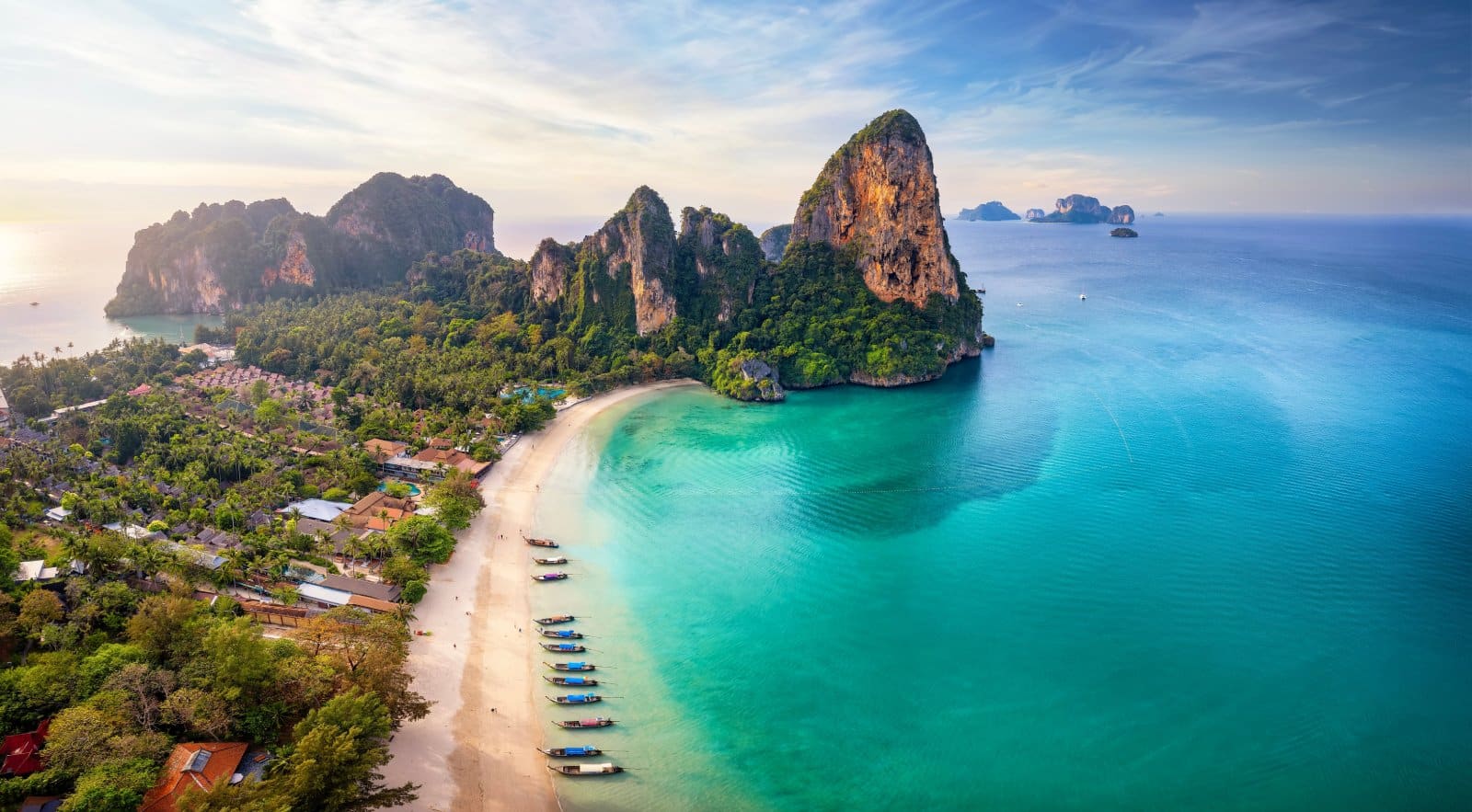
In Krabi Province, you’ll find yourself amidst some of Thailand’s most picturesque landscapes, marked by dramatic limestone cliffs, pristine beaches, and clear blue waters. The province is renowned for destinations like Railay Beach, which is accessible only by boat. It offers world-class rock climbing and stunning beachscapes.
The Phi Phi Islands, with their iconic beaches and vibrant marine life, are perfect for day trips, offering opportunities for snorkeling and diving. For a more tranquil experience, the lesser-known Koh Lanta provides a laid-back atmosphere with its long, sandy beaches. Krabi’s natural beauty extends beyond its coastline, with inland attractions like the Emerald Pool and the Tiger Cave Temple, each offering unique experiences.
Whether you’re seeking adventure on the cliffs of Railay or tranquility on the beaches of Koh Lanta, Krabi presents a diverse array of natural wonders waiting to be explored.
Insider’s Tip: Explore the mangroves and limestone caves by kayak for a unique perspective.
How To Get There: Krabi has an airport, and it’s also accessible by bus and boat from other parts of Thailand.
Best Time To Travel: Visit from November to March for the best beach weather.
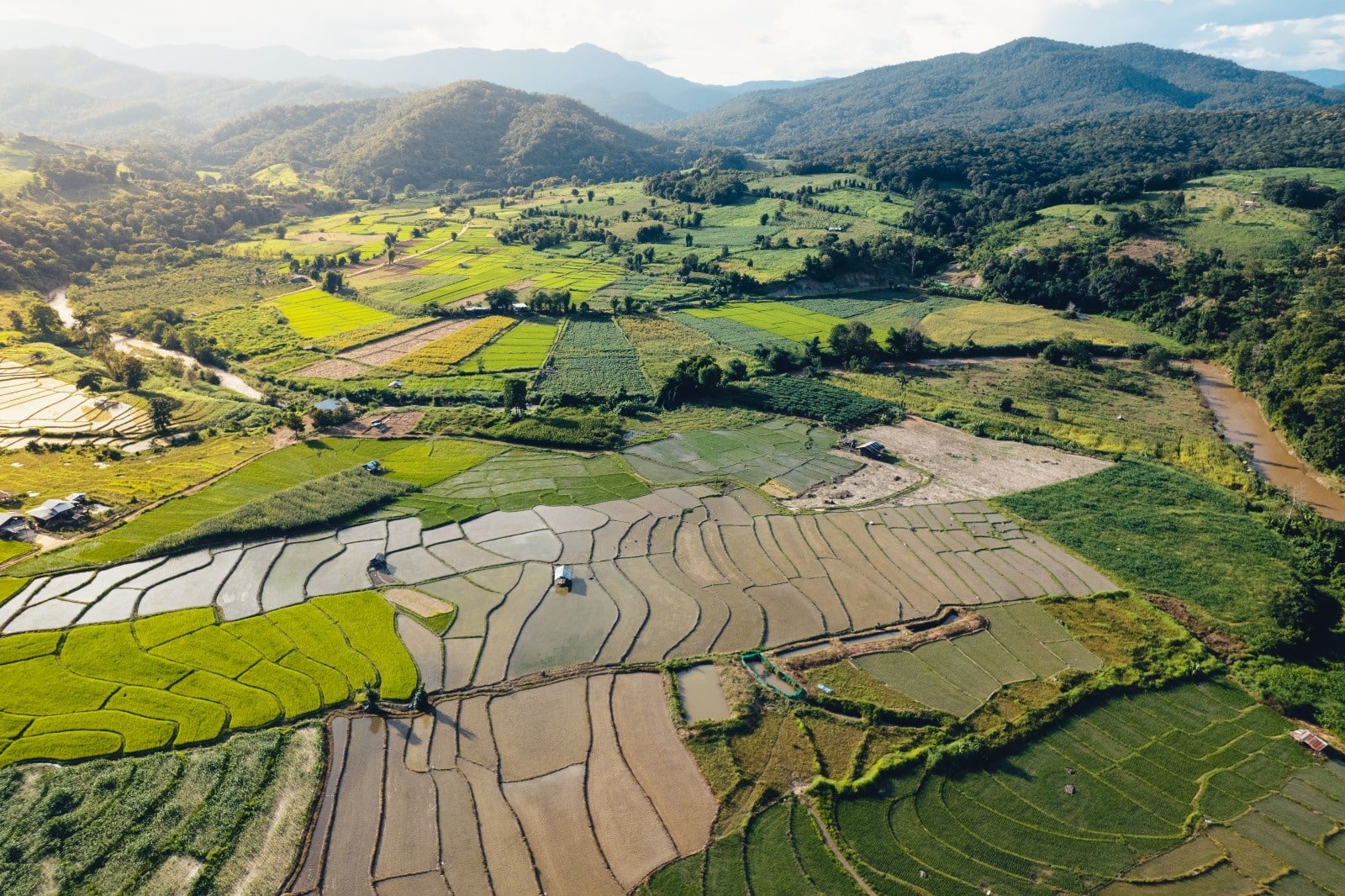
Pai, nestled in the mountains of Northern Thailand, is a haven for those seeking tranquility and natural beauty. With its relaxed atmosphere, this small town attracts travelers looking to escape the hustle of city life. Surrounded by rolling hills and lush greenery, Pai is perfect for outdoor activities like hiking, visiting waterfalls, and exploring hot springs.
The Pai Canyon offers stunning views, especially at sunset, and is a must-visit for nature enthusiasts. The town’s charming cafes, night markets, and art galleries reflect a unique blend of local Thai culture and bohemian influences.
Renting a scooter to explore the surrounding countryside is a popular way to discover the area’s hidden gems, but be cautious on the winding roads. Pai’s natural beauty, laid-back vibe, and cultural richness make it a refreshing stop in your Thailand journey.
Insider’s Tip: Rent a scooter to explore the surrounding countryside, but be cautious on the winding roads.
How To Get There: Pai is accessible by bus from Chiang Mai.
Best Time To Travel: The cool season, particularly from October to February, is ideal for comfortable temperatures.
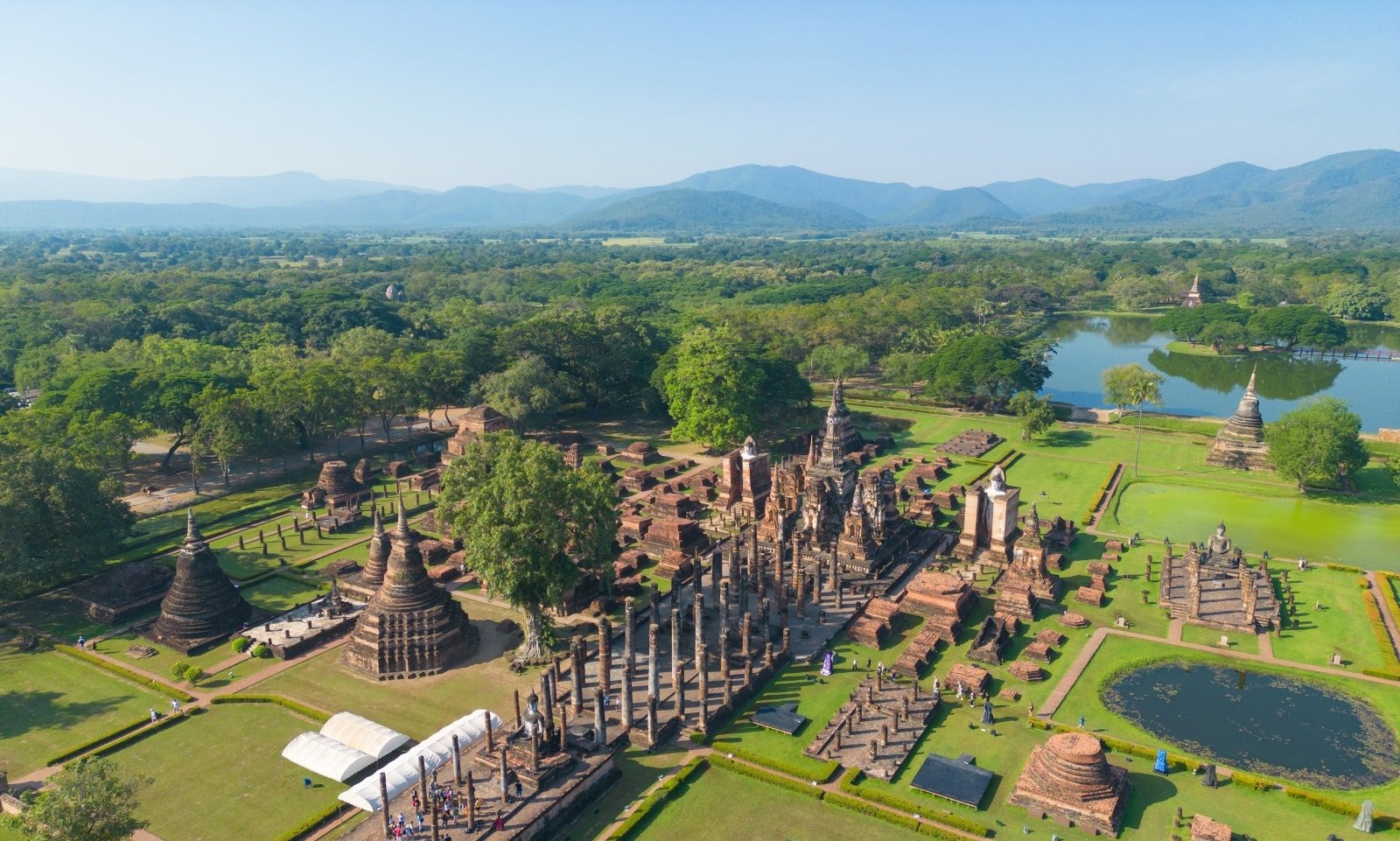
7. Sukhothai
Sukhothai, the first capital of Thailand, is where Thai art, architecture, and language began to develop and flourish. The Sukhothai Historical Park, a UNESCO World Heritage Site, is an archaeological delight with well-preserved ruins and majestic Buddha statues set amidst scenic lakes and gardens.
Exploring this ancient city on a bicycle offers a leisurely and intimate experience of the park’s vast grounds. Highlights include Wat Mahathat, with its impressive central stupa, and Wat Si Chum, known for its gigantic seated Buddha.
The historical significance of Sukhothai, coupled with its serene and picturesque setting, provides a profound insight into the origins of Thai culture and the nation’s early history.
Insider’s Tip: Visit during the Loy Krathong festival in November, when the park is beautifully lit with lanterns.
How To Get There: Sukhothai is accessible by bus or plane from Bangkok and Chiang Mai.
Best Time To Travel: The cool season is the best time to visit, especially around the Loy Krathong festival.
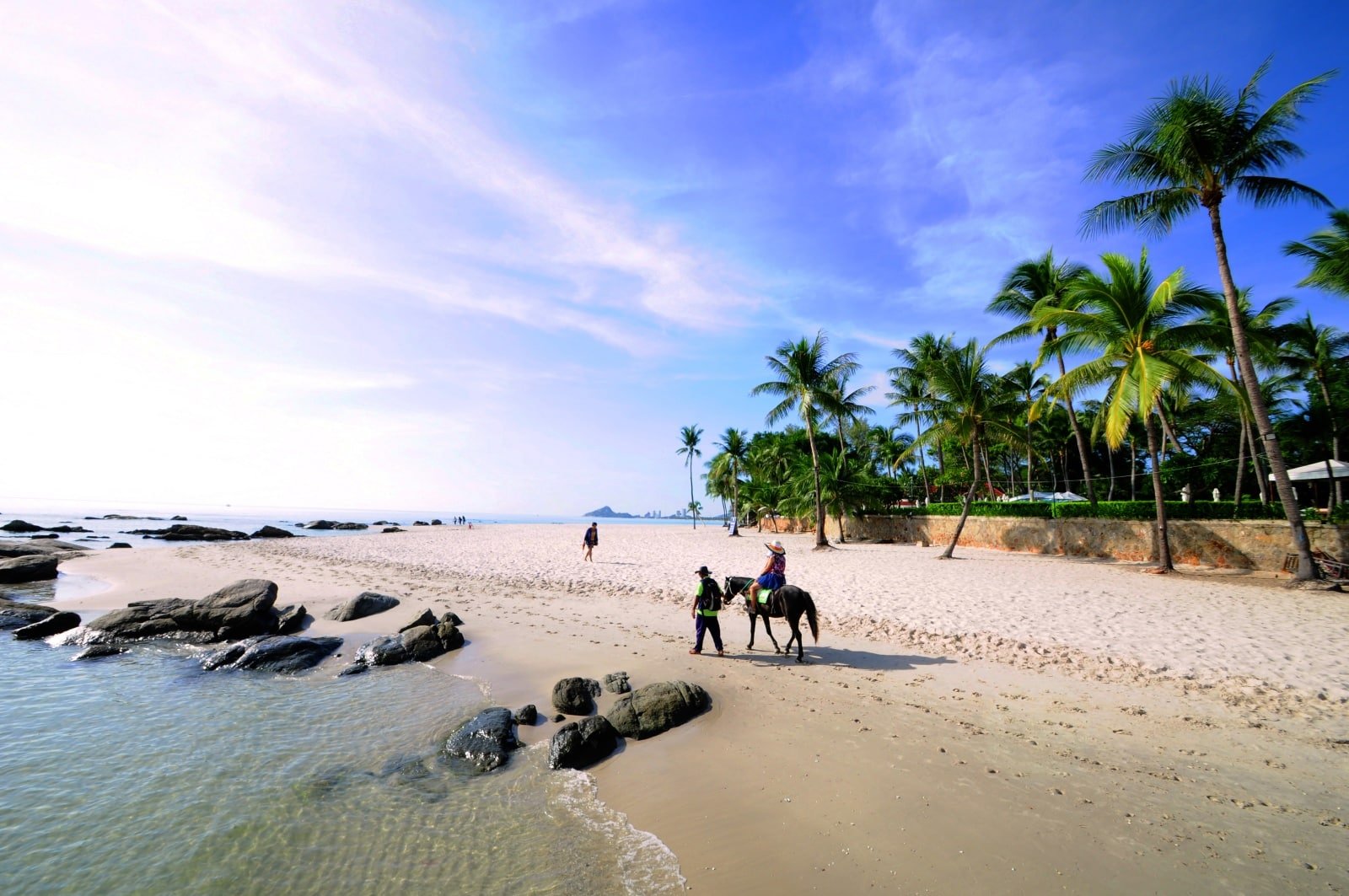
Hua Hin, once a quiet fishing village and now a popular beach resort town, offers a perfect blend of relaxation and cultural experiences. Known for its beautiful beaches, golf courses, and the summer palace of the Thai royal family, Hua Hin exudes an air of sophistication and tranquility.
The night markets in Hua Hin, particularly the Cicada Market, are great for experiencing local crafts and cuisine. Nearby natural attractions like Sam Roi Yot National Park, with its limestone mountains and mangrove forests, provide opportunities for nature exploration.
Hua Hin’s combination of beachside leisure, royal heritage, and natural beauty makes it an ideal destination for those seeking a more laid-back experience in Thailand.
Insider’s Tip: Try the local seafood at the night market, known for its freshness and variety.
How To Get There: Hua Hin is about a three-hour drive from Bangkok and is also accessible by train.
Best Time To Travel: Visit from November to February for the best beach weather and fewer rain showers.
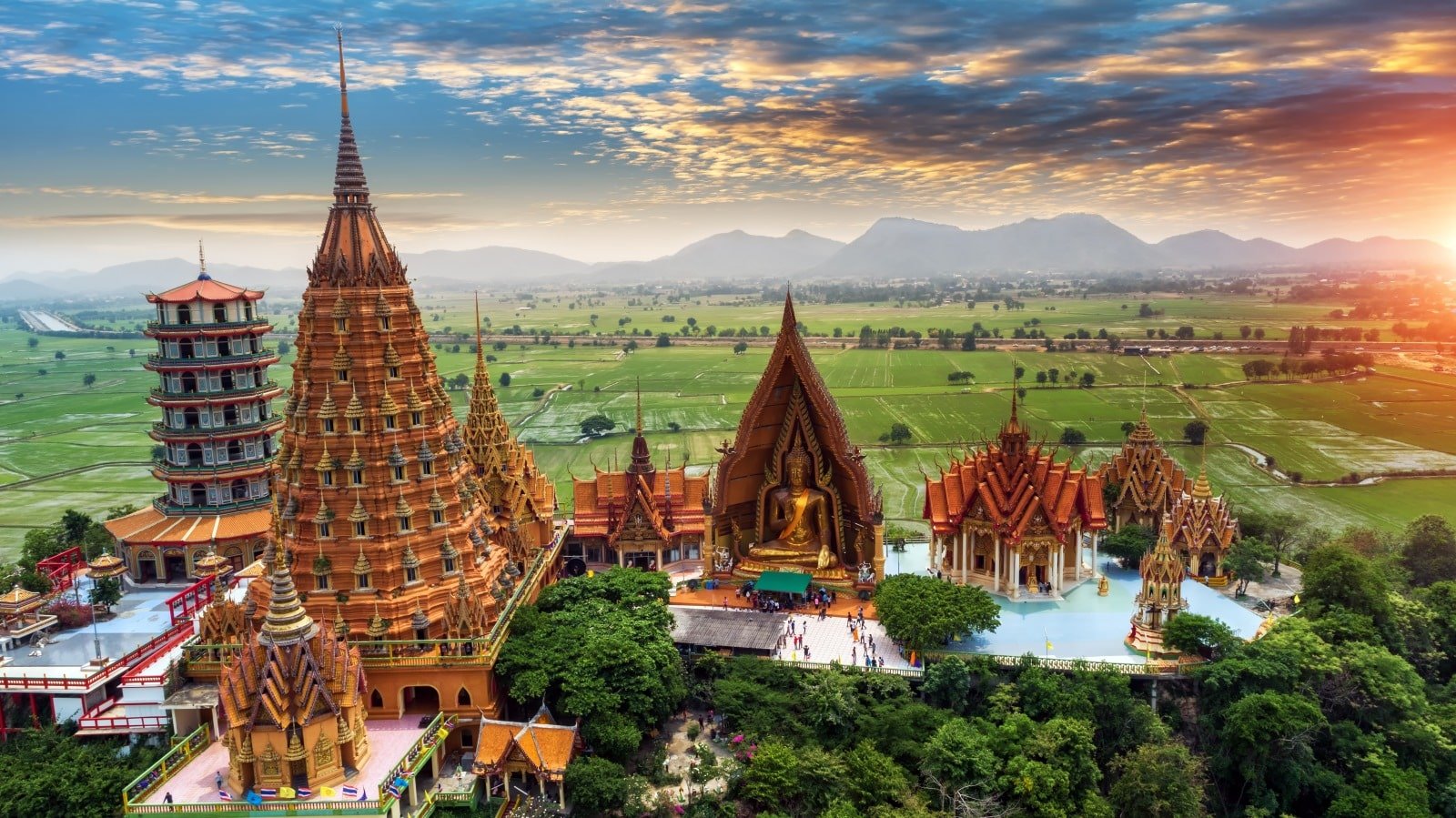
9. Kanchanaburi
Kanchanaburi, known for the Bridge over the River Kwai and its World War II history, offers a poignant reminder of the past, set against a backdrop of stunning natural scenery. The Death Railway, war cemeteries, and museums provide a deep understanding of the region’s wartime history.
Beyond its historical significance, Kanchanaburi is also home to beautiful national parks like Erawan and Sai Yok, offering trekking, waterfalls, and river rafting. The province’s blend of history and natural beauty provides a multifaceted experience, making it a destination that appeals to history buffs and nature lovers.
Insider’s Tip: Take a train ride on the Death Railway for a scenic and historical journey.
How To Get There: Kanchanaburi is accessible by bus or train from Bangkok.
Best Time To Travel: The cool and dry season from November to February is ideal for exploring and outdoor activities.
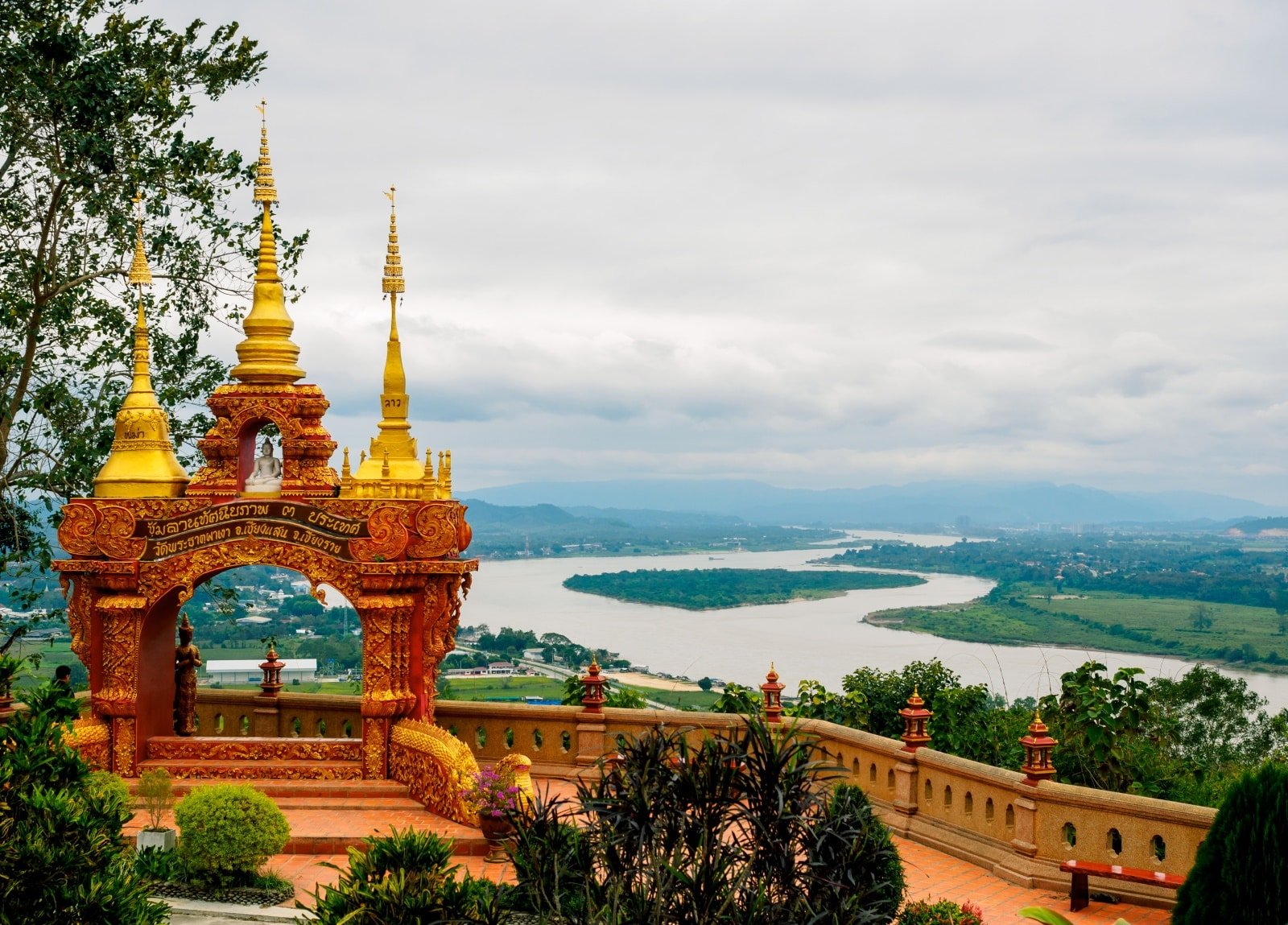
10. The Golden Triangle
The Golden Triangle, where the borders of Thailand, Laos, and Myanmar converge, offers a unique cultural and geographical experience. This area, once notorious for its opium production, now provides insights into the region’s history with attractions like the Hall of Opium Museum.
A boat ride on the Mekong River is a serene way to experience the beauty of this area and the confluence of the three countries. The ancient city of Chiang Saen nearby, with its ruins and temples, adds a historical dimension to your visit. The Golden Triangle’s cultural influences and stunning landscapes make it a fascinating destination in Northern Thailand.
Insider’s Tip: For a panoramic view of the three countries, visit the viewpoint at Wat Phra That Pu Khao.
How To Get There: The Golden Triangle is accessible by bus or car from Chiang Rai.
Best Time To Travel: The cool season, from November to February, offers comfortable weather for exploring.
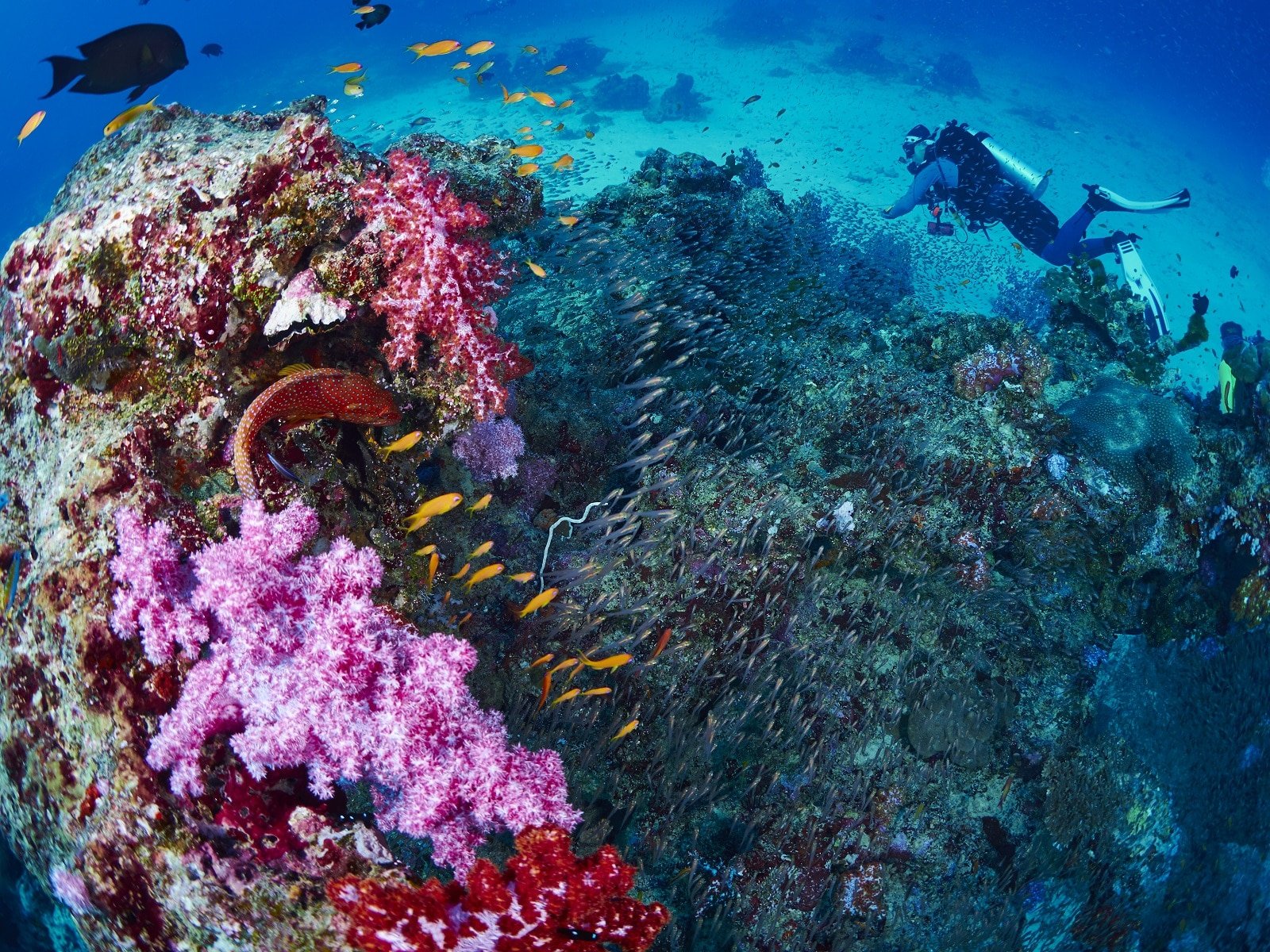
11. Similan Islands
The Similan Islands in the Andaman Sea are a pristine archipelago renowned for their exceptional diving and snorkeling opportunities. These islands, part of a protected national park, boast some of the clearest waters in Thailand, with visibility often extending up to 30 meters.
The underwater landscape of coral reefs teeming with diverse marine life, including manta rays, whale sharks, and a myriad of colorful fish species. Above water, the islands are equally stunning, with powdery white sand beaches and lush tropical forests. The Similan Islands are perfect for a retreat for anyone seeking unspoiled natural beauty.
Whether you’re exploring the depths of the ocean or simply relaxing on a secluded beach, the Similans offer a tranquil escape from the world, where nature’s wonders are on full display.
Insider’s Tip: Book a liveaboard diving trip for an immersive experience in the islands’ underwater world.
How To Get There: The Similan Islands are accessible by boat from Khao Lak or Phuket.
Best Time To Travel: The diving season runs from November to April, with the best conditions from February to April.

12. The Isaan Region
The Isaan region, located in northeastern Thailand, is a land steeped in tradition and history, offering a stark contrast to the country’s more tourist-centric areas. This region is the heartland of Thai culture, where ancient customs and lifestyles are preserved. Isaan’s rural landscapes, dotted with rice paddies and traditional villages, provide a glimpse into a simpler way of life.
The region is also home to some of Thailand’s most significant archaeological sites, including the prehistoric Ban Chiang and the Khmer ruins of Phanom Rung. Isaan’s cuisine, known for its bold flavors and spiciness, is a highlight, with dishes like som tam (spicy papaya salad) and larb (minced meat salad) being local staples
A journey through Isaan is a journey through the soul of Thailand, where the richness of the country’s heritage and the warmth of its people are palpable in every experience.
Insider’s Tip: Try the local dishes like som tam (spicy papaya salad) and larb (minced meat salad) for an authentic taste of Isaan.
How To Get There: Isaan is accessible by bus or train from Bangkok, or by plane to regional airports like Udon Thani.
Best Time To Travel: Visit during the cool season, from November to February, for comfortable travel conditions.
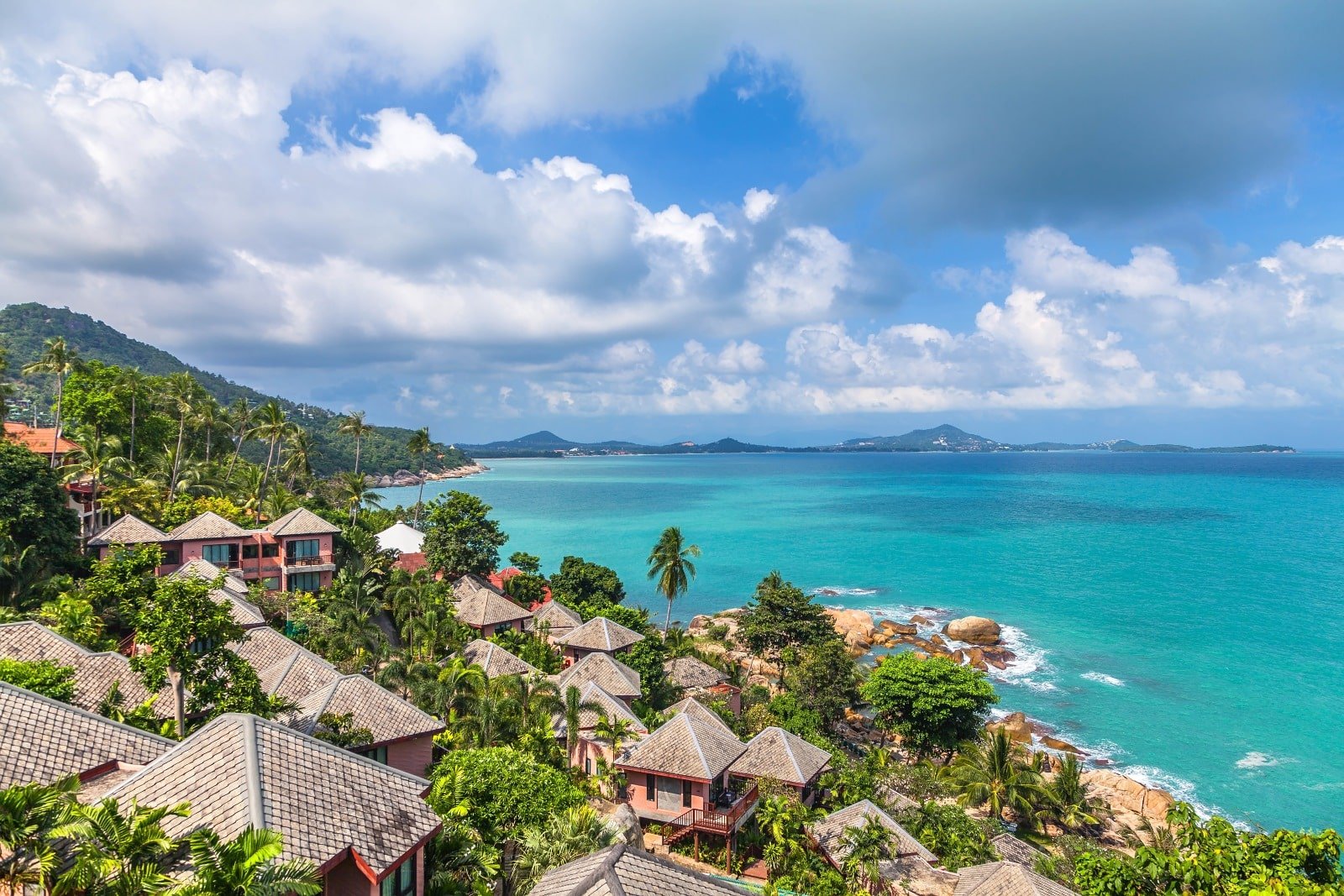
13. Koh Samui
Koh Samui, nestled in the Gulf of Thailand, is a tropical paradise combining natural beauty, luxury, and relaxation. The island is renowned for its idyllic beaches, such as Chaweng and Lamai, which offer crystal-clear waters and powdery white sands. Beyond its stunning coastline, Koh Samui has various attractions, from the majestic Big Buddha statue to the enchanting Na Muang Waterfalls.
The island’s interior is a lush landscape of coconut groves and rainforests, offering opportunities for hiking and exploring. Koh Samui’s culinary scene is a blend of traditional Thai flavors and international cuisine, with a plethora of dining options ranging from beachside shacks to upscale restaurants.
The island’s vibrant nightlife, centered around Chaweng Beach, provides entertainment well into the early hours. Koh Samui caters to all types of travelers seeking a romantic getaway, a family vacation, or a luxurious retreat.
Insider’s Tip: Explore the Ang Thong National Marine Park for stunning landscapes and snorkeling opportunities.
How To Get There: Koh Samui has an airport with flights from Bangkok, Chiang Mai, and international destinations.
Best Time To Travel: The best time to visit is from December to February, with dry weather and calm seas.
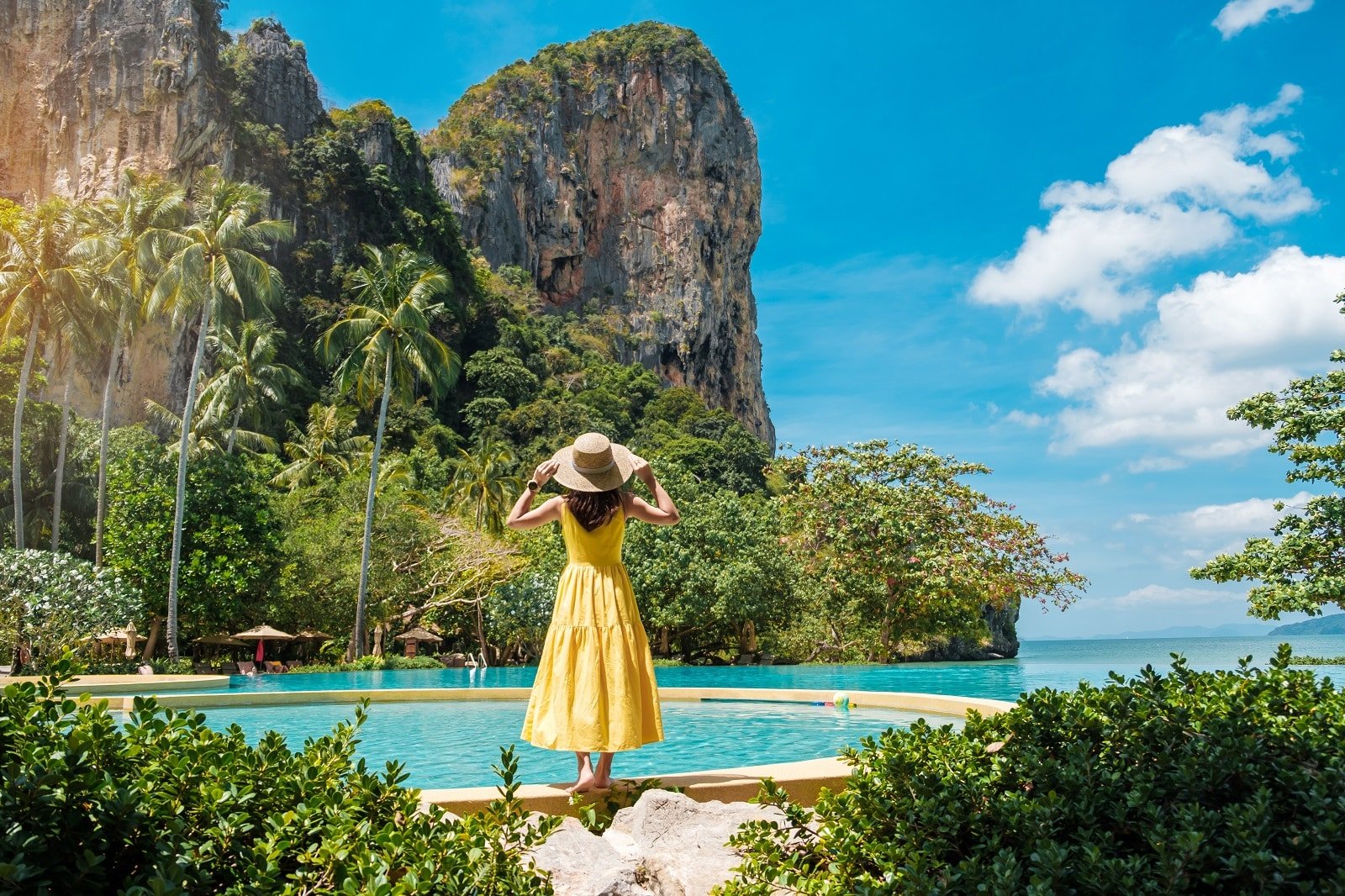
14. Railay Beach
Railay Beach, accessible only by boat, is a hidden gem offering a serene escape from the more crowded tourist spots. This peninsula, known for its stunning limestone cliffs and pristine beaches, is a haven for rock climbers and beachgoers.
The turquoise waters are perfect for swimming and kayaking, while the viewpoints and caves provide opportunities for exploration. Railay maintains a laid-back atmosphere, with a small selection of bars and restaurants, making it an ideal spot for adventure and relaxation in a tranquil setting.
Insider’s Tip: Take a rock climbing course if you’re a beginner to safely enjoy the sport under expert guidance.
How To Get There: Railay Beach is accessible by boat from Ao Nang or Krabi Town.
Best Time To Travel: Visit from November to April when the weather is dry, and the seas are calm.
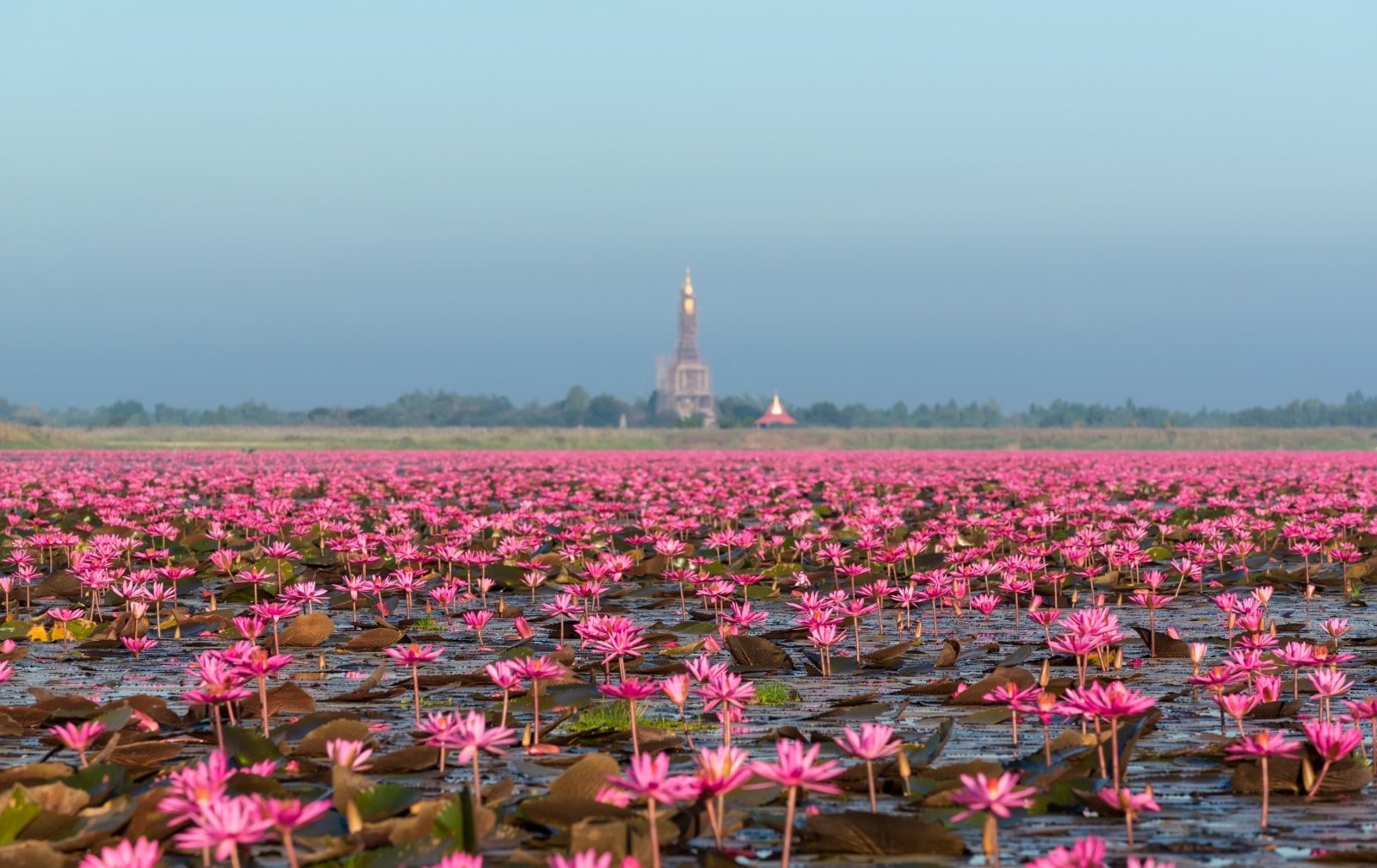
15. Udon Thani and the Red Lotus Sea
Udon Thani, a vibrant city in Thailand’s northeastern region, is the gateway to the mesmerizing Red Lotus Sea (Lake Nong Han). It’s best visited in the cool season, as it transforms into a breathtaking expanse of pink and red lotuses stretching as far as the eye can see. A boat ride through the serene waters, dotted with these vibrant blooms, offers a truly unique and tranquil experience.
Beyond the lake, Udon Thani boasts a rich cultural heritage, with various temples, museums, and markets reflecting the local Isan culture. The Ban Chiang Archaeological Site, a UNESCO World Heritage Site near Udon Thani, provides fascinating insights into the region’s ancient history.
This area’s blend of natural beauty and cultural depth makes it a compelling destination for those exploring beyond Thailand’s typical tourist paths.
Insider’s Tip: Visit early in the morning when the lotuses are fully bloomed and the lake is less crowded.
How To Get There: Udon Thani is accessible by plane from Bangkok, and the Red Lotus Sea is a short drive from the city.
Best Time To Travel: The lotuses bloom from December to February, making it the ideal time to visit.
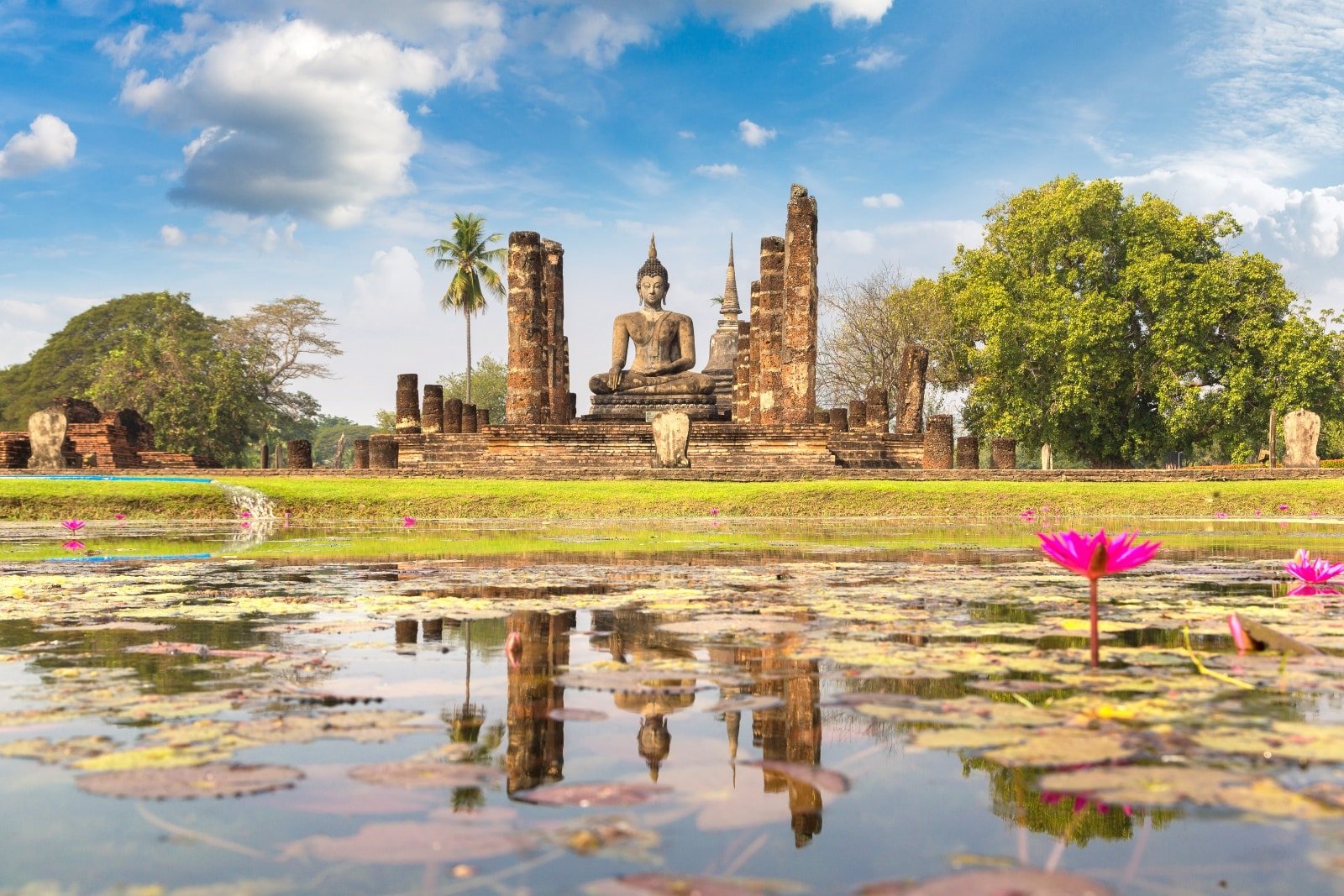
16. The Ancient City of Sukhothai
The ancient city of Sukhothai, a UNESCO World Heritage Site, is a journey back in time to the roots of Thai civilization. As the first capital of Thailand, it holds a special place in the nation’s history. The Sukhothai Historical Park, with its well-preserved ruins set amidst lush greenery and tranquil ponds, offers a glimpse into the grandeur of the 13th-century Sukhothai Kingdom.
Exploring the park, you’ll encounter majestic Buddha figures, towering stupas, and intricate carvings, all evocative of the city’s past splendor. Cycling through the park’s vast grounds allows for an intimate exploration of its numerous sites, including Wat Mahathat, the park’s largest temple, and Wat Si Chum, famous for its gigantic seated Buddha. A visit to Sukhothai immerses ancient Thailand’s artistic and spiritual legacy.
Insider’s Tip: Rent a bicycle to explore the extensive grounds of the historical park at your own pace.
How To Get There: Sukhothai is accessible by bus or plane from Bangkok, and the historical park is a short ride from the city center.
Best Time To Travel: The cool season from November to February offers pleasant weather for exploring the outdoor ruins.
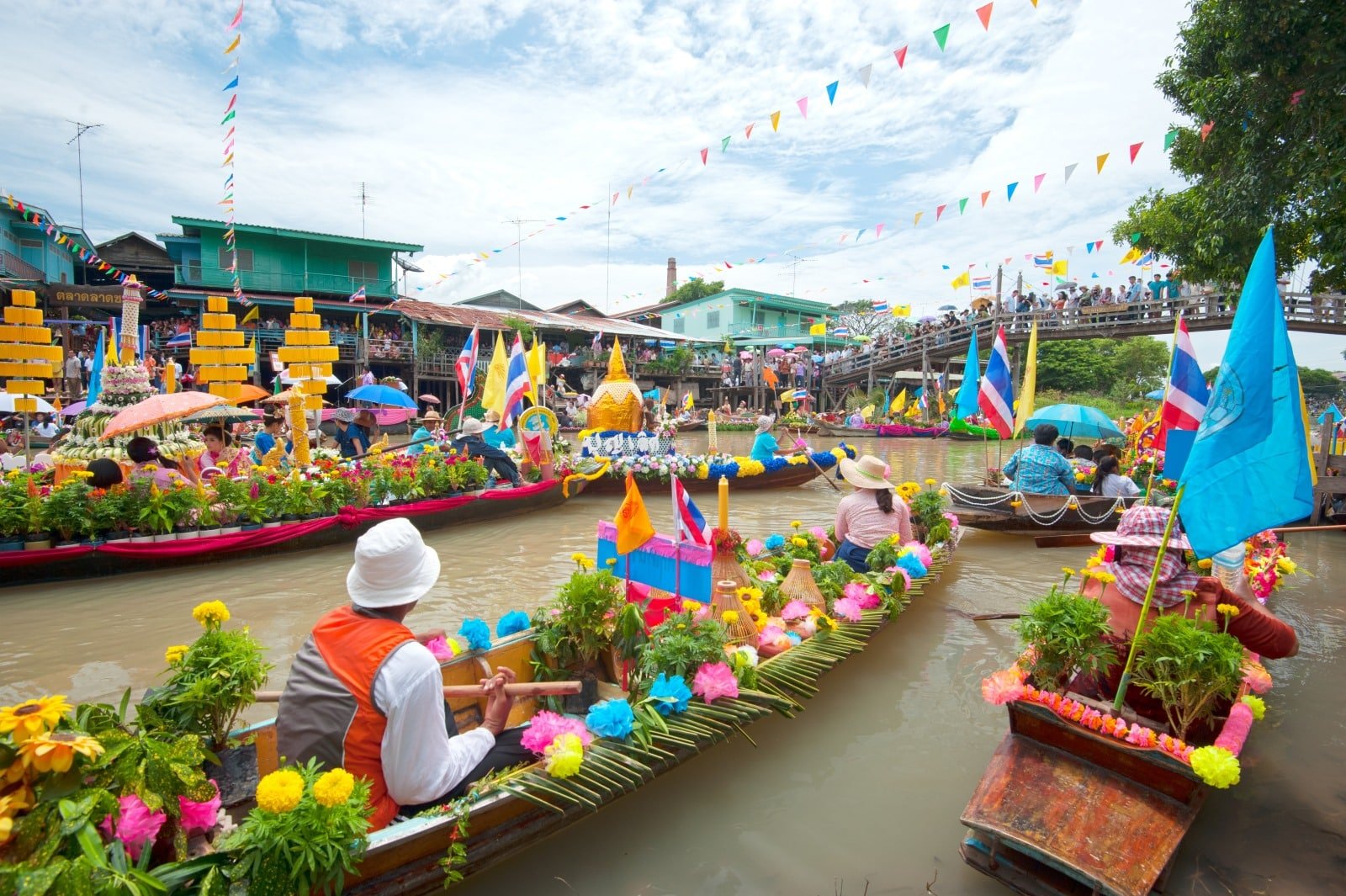
17. The Floating Markets Near Bangkok
The floating markets near Bangkok, such as Damnoen Saduak and Amphawa, offer a vibrant and colorful glimpse into traditional Thai life. These bustling waterways, lined with boats laden with fresh produce, local delicacies, and handicrafts, present a lively and picturesque scene.
A visit to these markets is a sensory experience, with the sights, sounds, and smells of authentic Thai commerce and cuisine. Damnoen Saduak, the most famous of these markets, provides a more tourist-focused experience, while Amphawa offers a more local atmosphere and is primarily known for its evening seafood vendors.
Exploring these floating markets by boat or along the canalside walkways is a unique way to experience the local culture and indulge in some of Thailand’s most delicious foods and charming souvenirs.
Insider’s Tip: Take a boat tour to fully experience the market and try local snacks from the floating vendors.
How To Get There: The floating markets are accessible by bus or organized tours from Bangkok.
Best Time To Travel: Visit early in the morning to avoid the crowds and the heat.
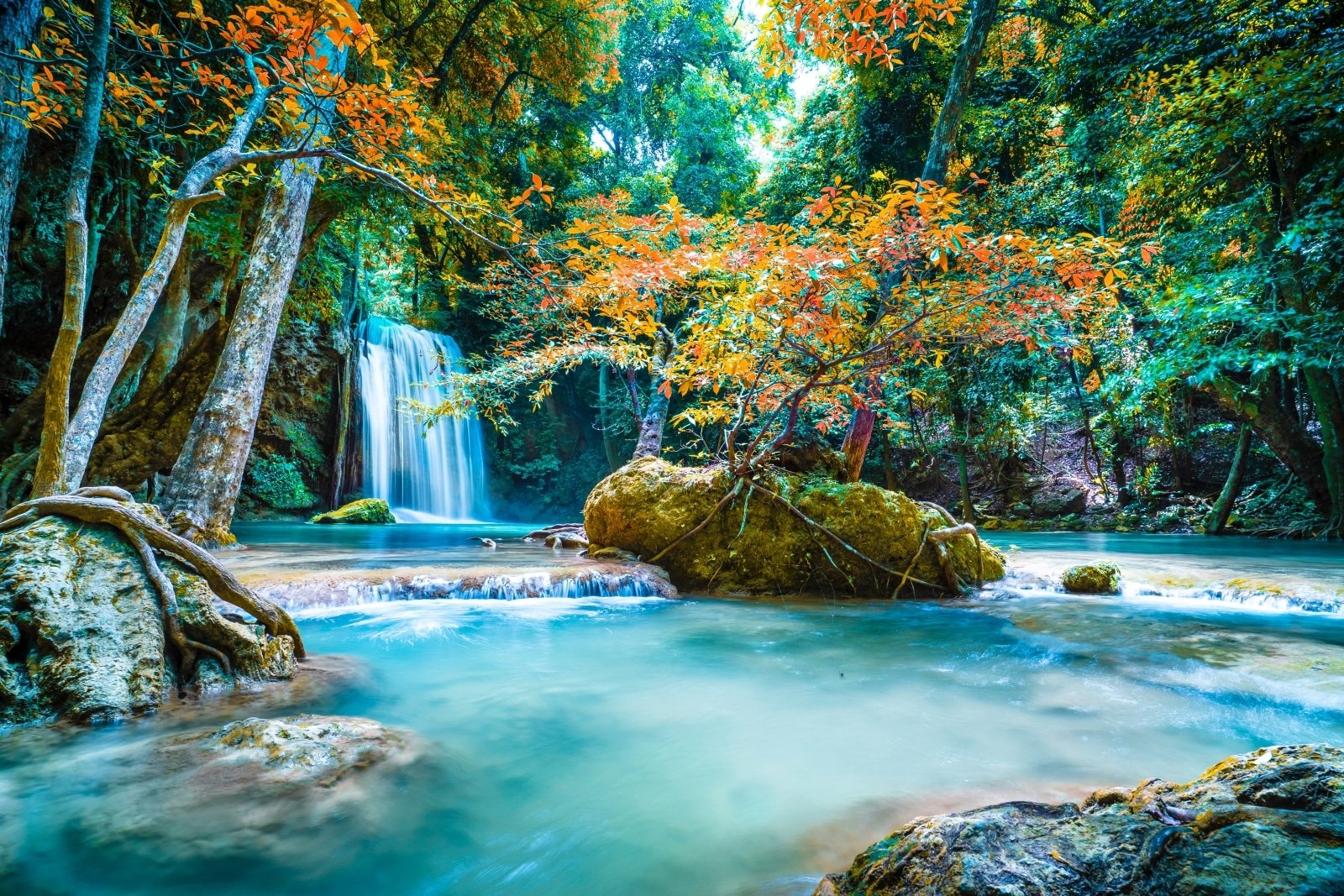
18. Erawan National Park and Waterfalls
Erawan National Park, located in the Kanchanaburi Province, is a natural oasis known for its stunning seven-tiered Erawan Waterfall, named after the three-headed elephant of Hindu mythology. Each tier of the waterfall offers a different shape and character, with natural pools perfect for swimming and relaxation.
The park’s lush forests are home to plentiful wildlife and provide numerous hiking trails for nature enthusiasts. Beyond the waterfalls, the park’s caves, such as Tham Phra That and Tham Ta Duang, offer further exploration opportunities.
Visiting Erawan National Park is a chance to witness one of Thailand’s most beautiful waterfalls and connect with the country’s rich natural landscapes.
Insider’s Tip: Bring swimwear and trek to the upper tiers of the waterfall for a more secluded and serene experience.
How To Get There: The park is located in Kanchanaburi Province and is accessible by bus or car from Bangkok.
Best Time To Travel: Visit from November to April when the water levels are ideal for swimming and the trails are dry.
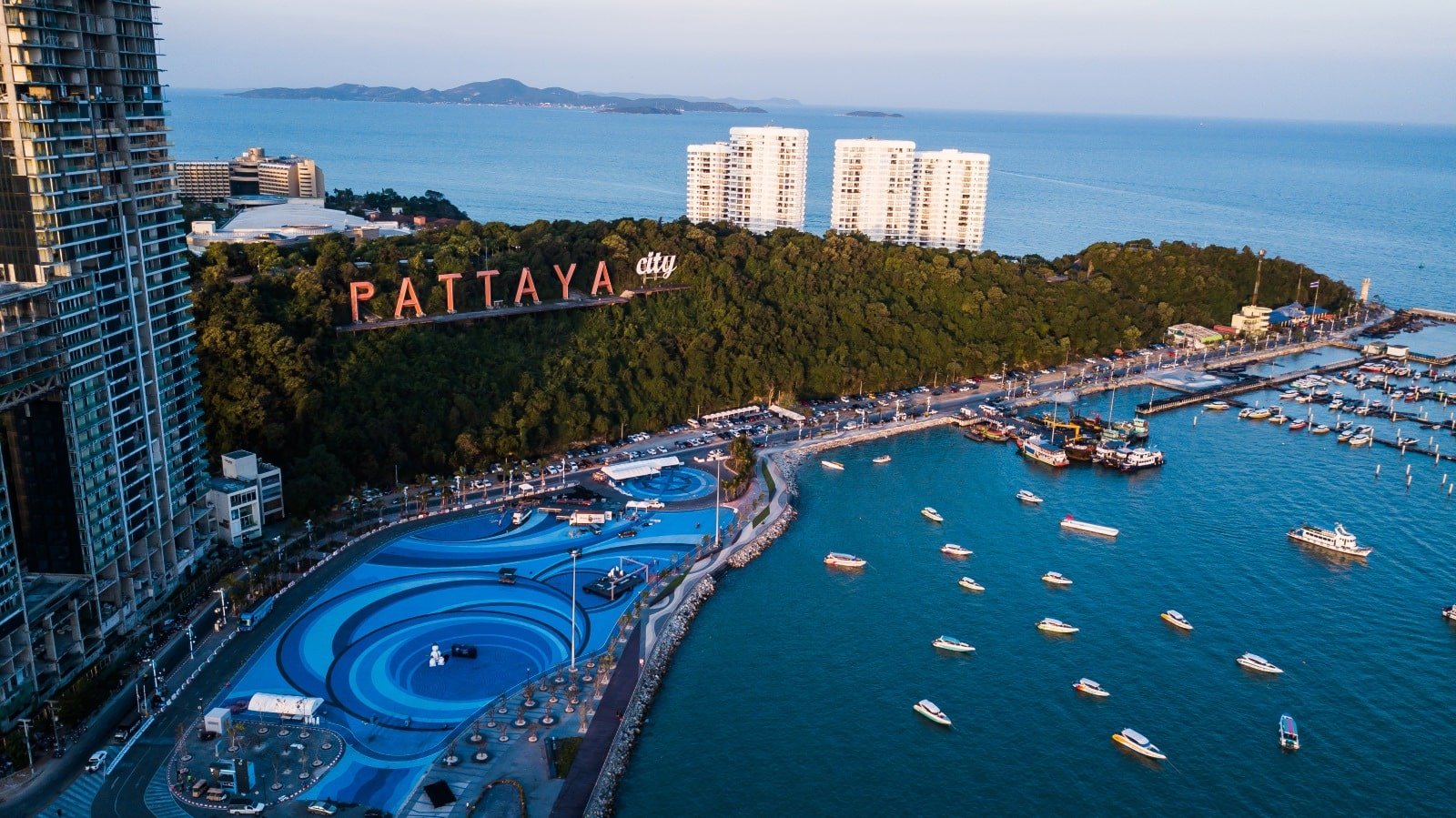
19. Pattaya
Pattaya, once a quiet fishing village and now a bustling coastal city, is known for its vibrant nightlife, sandy beaches, and many tourist attractions. While Pattaya’s reputation is often tied to its entertainment and nightlife, the city offers much more. The Sanctuary of Truth, a stunning all-wood structure filled with intricate carvings, highlights traditional Thai craftsmanship.
For nature lovers, Pattaya offers the Nong Nooch Tropical Botanical Garden, a beautifully landscaped park with themed gardens and cultural shows. The nearby Coral Island (Koh Larn) provides a quick escape to quieter beaches and clear waters, ideal for snorkeling and water sports. Pattaya’s diverse offerings make it a destination that caters to various interests, from cultural exploration to beachside relaxation.
Insider’s Tip: Explore the Pattaya Floating Market for a cultural experience and to sample local Thai dishes.
How To Get There: Pattaya is a two-hour drive from Bangkok and is also accessible by bus or taxi.
Best Time To Travel: Visit from November to February for pleasant weather and to avoid the rainy season.
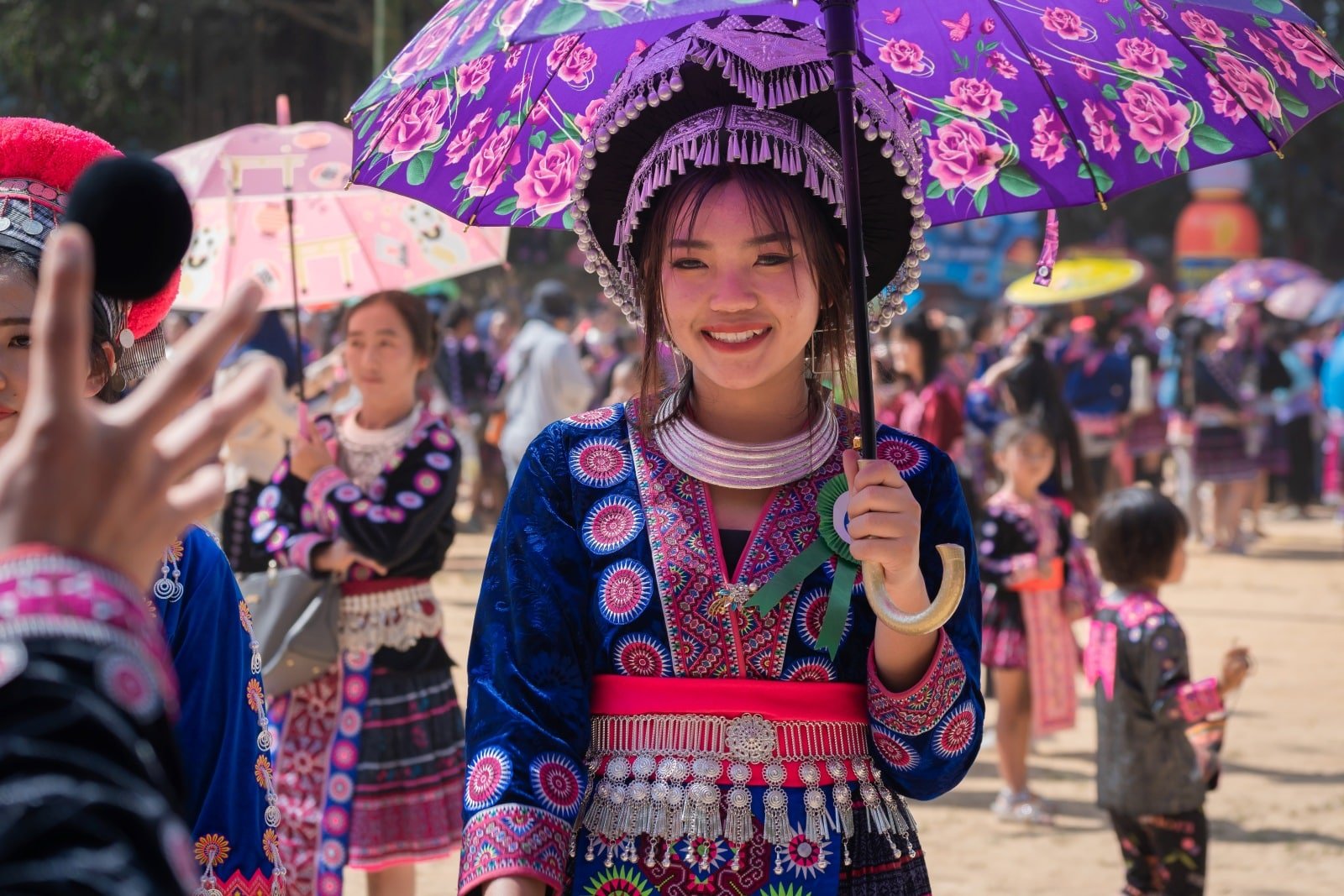
20. The Hill Tribes of Northern Thailand
Northern Thailand’s hill tribes offer a unique cultural experience, distinct from the rest of the country. These ethnic groups, including the Karen, Hmong, Akha, and Lisu, each have their own customs, languages, and traditional dress. Visiting these hill tribe villages, often nestled in the picturesque mountains and valleys of the region, provides insight into their traditional ways of life, which remain largely untouched by modernization.
Responsible and respectful tourism is key when visiting these communities. Many villages welcome visitors to learn about their culture, participate in traditional crafts, and even stay overnight for a more immersive experience. Engaging with the hill tribes of Northern Thailand offers a deeper understanding of the country’s ethnic diversity and rich cultural tapestry.
Insider’s Tip: Choose a community-based tourism program that benefits the tribes directly and respects their culture.
How To Get There: Hill tribe villages are accessible from Chiang Mai or Chiang Rai, often as part of guided tours.
Best Time To Travel: The cool season, from November to February, is comfortable for visiting the highland areas.
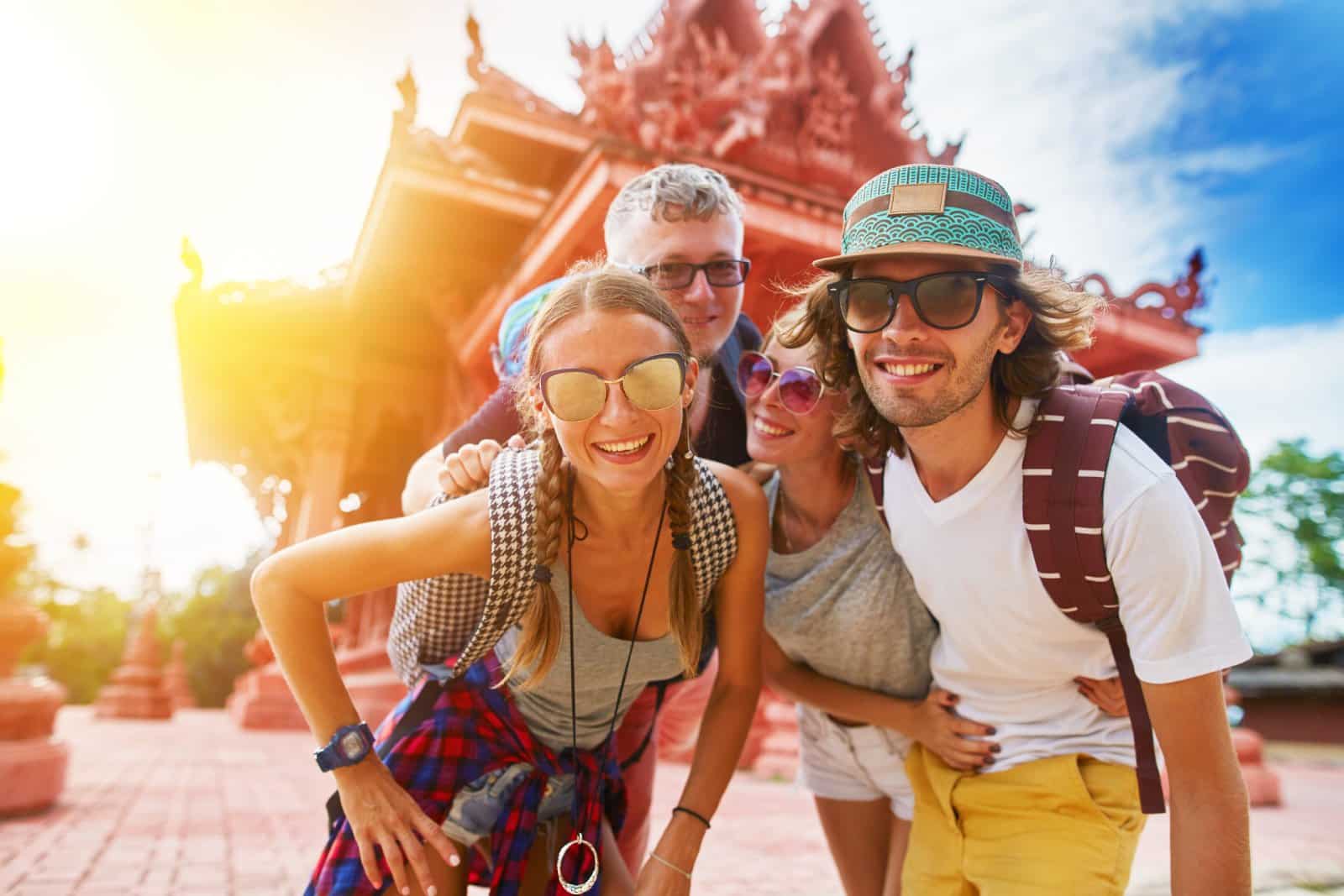
The Bottom Line
Thailand’s magic lies in its diversity – from bustling cities and ancient ruins to serene beaches and lush jungles. As you explore this enchanting country, embrace its history, indulge in its culinary delights, and immerse yourself in its natural beauty. Remember, Thailand offers an experience beyond the ordinary, leaving you with memories that will last a lifetime.
While exploring Thailand, take the time to learn a few phrases in Thai. A simple “hello” (sawasdee) or “thank you” (khob khun) can go a long way in showing respect for the local culture and enhancing your travel experience.
More Articles Like This…
Barcelona: Discover the Top 10 Beach Clubs
2024 Global City Travel Guide – Your Passport to the World’s Top Destination Cities
Exploring Khao Yai 2024 – A Hidden Gem of Thailand
The post Discover Thailand: Your Ultimate Guide to 20 Incredible Destinations in 2024 republished on Passing Thru with permission from The Green Voyage .
Featured Image Credit: Shutterstock / Pikoso.kz.
For transparency, this content was partly developed with AI assistance and carefully curated by an experienced editor to be informative and ensure accuracy.
More for You
19 Things People Treat As Safe That Actually Are Pretty Dangerous
Charles Barkley Calls Out 'Unfair' Rule That Impacted Lakers-Nuggets Game
20 Loyal Dog Breeds That Will Never Leave Your Side
20 facts you might not know about 'Moneyball'
The most expensive state to live in isn't California or New York, based on data. Here are the top 10.
4 Hidden Money Traps New Parents Need To Avoid
Scientists claim people with this blood type more likely to have early stroke
Photos show how Air Force One has changed through the years
14 Fitness Tracker Features That Improve Your Health
The LeBron Generation in the NBA Is Finally Over
18 Smartest Dog Breeds, Ranked for Intelligence
How Donald Trump's Chances of Winning Key Swing States Have Changed
5 Types of Homes That Will Plummet in Value in 2024
These 'Essential 8' habits slowed biological aging significantly, study shows
Contestant makes history as first Miss Delaware Teen USA with Down syndrome
America's Next Great Hypercar Is Almost Ready To Hit The Streets
19 Dog Breeds With Surprisingly Short Lifespans
I Am Doing a PhD at 16—My Mother's Death Is the Reason
Baking Soda Makes a Great DIY Weed Killer—Here's How to Use It
Map reveals best places to live in the US if nuclear war breaks out

IMAGES
VIDEO
COMMENTS
Koh Chang. The largest island in the Trat archipelago, Koh Chang is also the most developed one, with the most hotels and most frequent connections to the mainland. On the other hand, while popular beaches like Lonely Beach aren't bad by any stretch of the imagination, to me Koh Chang feels like the least spectacular Trat island.
In This Post. 1 8 Top Things to Do in Trat Thailand. 1.1 Sample Village Life in Baan Nam Chiao Old Community. 1.2 Paddle Through The Salak Khok Mangrove Forest. 1.3 Relax on Koh Chang's Beaches. 1.4 Digital Detox on Koh Mak. 1.5 Get Off The Beaten Path on Koh Kood (Koh Kut) 1.6 Hike Through the Rainforest on Koh Chang.
With 52 large and small Islands featuring long, white, sandy Beaches and unspoiled coral reefs, Trat offers delightful scenery and a number of tranquil hideouts for Beach and nature-lovers.The province also serves as a major fruit-growing, Fishing, and gem mining region.. The City of Trat is the primary launching point for trips to the popular Koh Chang Island Group as well as for forays to ...
Trat. Trat (ตราด) is a major transit point for Ko Chang and coastal Cambodia, and worth a stop anyway for its underappreciated old-world charm. The guesthouse neighborhood occupies an atmospheric wooden shophouse district, backing on to the riverfront and bisected by winding sois. It's filled with typical Thai street life: children ...
Entry to the museum is 30 Baht for foreign visitors. Trat's most famous temple ' Wat Buppharam ' lies about 25 minutes walk west of the town centre. It's a very well maintained temple complex which dates back over 400 years. It was founded in 1648 during the reign of King Prasat Thong who founded Trat town.
Trat Travel Guide: Eastern Thailand's best islands and diving spots, harmonious Buddhist-Muslin community with unique craftsmanship, mangrove wonders and more. Check out these top things to do in Trat, Eastern Thailand, and enjoy authentic local experiences before the rest of the world catches on.
4. Amazing Hat Sai Dam. Amazing Hat Sai Dam (มหัศจรรย์หาดทรายดำ) is one of a kind in Thailand created by nature. Visitors can walk along and enjoy a pleasant route of the mangrove forest to get to the seashore and admire the amazing black sand beach. 5. "Ruea Mat" sailing at Ban Salak Khok. "Ruea Mat ...
Rough Guides® is a trademark owned by Apa Group with its headquarters at 7 Bell Yard London WC2A 2JR, United Kingdom. Plan your visit to Trat, Thailand: find out where to go and what to do in Trat with Rough Guides. Read about itineraries, activities, places to stay and travel essentials and get inspiration from the blog in the best guide to Trat.
The Trat City Museum exemplifies the lives of the locals and is an informative centre to learn more about the cultural heritage of Trat. Address: Bang Phra, Mueang Trat District, Trat 23000, Thailand. Opening hours: 9am to 4pm on Tuesdays to Fridays. 9.30am to 4.30pm on Saturdays and Sundays. Closed on Mondays.
Introduction to Trat Travel Guide. Trat is one of Thailand's easternmost provinces. It is bounded to the northwest by Chanthaburi Province, to the east by Cambodia, and to the south by the Gulf of Thailand. Trat dates back to the early 17th century, under the reign of King Prasat Thong of the Ayutthaya Kingdom.
4. Check Out Trat City Pillar Shrine. One of the most impressive landmarks in Trat is the Trat City Pillar Shrine, a unique city pillar that takes the shape of a Chinese temple, unlike city pillars found in other provinces around Thailand. Usually, a city pillar looks more or less like a Thai pagoda, but not this one.
With white-sand beaches, crystal waters great for diving, and blue skies for days, no wonder the 52 islands of Trat province are sometimes called the Maldive...
From Chanthaburi to Trat, the regular bus takes about an hour. Getting to Koh Chang from Trat. Ferries depart either from Ao Thammachat Pier, or Centre Point pier between 06.30 a.m. - 07.30 p.m., with a travel time of 30 - 45 minutes. Foot passengers pay 80 Baht one way on either of the ferries.
This three-day trip will allow you to create a new chapter of your Thailand experience while catching a glimpse of the local way of life. To start the journey, from Bangkok hop on a public tour bus at Mochit Passenger Terminal #2 at 7.30 A.M. to arrive at Trat at approximately 12.30 P.M.
The best way to travel around Trat is on foot, as the city centre and old quarter are close together, making it easy to reach restaurants and the markets from wherever you choose to stay. ... Best Travelling Tips The Philippines Travel Guide Singapore Travel Guide The Ultimate Thailand Travel Guide 2024 : ...
Out of only 5 black sand beaches worldwide, one of them is here in Trat, Thailand. This Trat travel guide reveals 'The Black Sand Beach' in Lam Ngop which is unusual, yet this unusual appearance makes it a distinct one and not to be forgotten. As part of national preserved forest Lam Mahkam area, the beach is inevitably home to diverse ...
Provided by Travelfish partner Agoda. A few nights in Trat will do the trick if you need to save cash: a room at one of the old-style guesthouses, plus three meals, can cost less than 300 baht per day. Daring tongues will enjoy grazing markets that bustle in the heart of town. You'll also find some charm down a couple of "old town" lanes ...
Food & Drinks To Try In Trat. 1. Pad Thai: Trat is known for its delicious Pad Thai, a stir-fried noodle dish made with rice noodles, eggs, tofu, shrimp, and a tangy tamarind sauce.It is a must-try dish when visiting Trat. 2. Seafood: Trat is located on the coast, making it a great place to indulge in fresh and flavorful seafood.From grilled fish to steamed crab, there are plenty of seafood ...
There is regular bus service, taking 5-6 hours, to Bangkok's Ekamai Station for downtown Bangkok and Bangkok Mo Chit for other destinations in Thailand. Many tourists stop over in Trat before going to the islands from Laem Ngop or Leam Sok (15-20 km from Trat. There are ferry and speedboat services to the eastern islands, Ko Chang and Ko Kood.
This eastern Thai city is the district capital of Trat Province and acts as a great access point to the islands of Koh Chang and Koh Kood in the Gulf of Thailand.. The Cambodian border town of Hat Lek is around 120km to the east and buses from Bangkok take around 4 or 5 hours to reach Trat, which lies near to the border with Cambodia.. Trat is reported to have more markets per square kilometer ...
From Rayong, you can take a bus. They depart at 4:00, 8:30, 11:30, 13:00, 14:30 and 18:00 and take 4 hours. You can also take a private taxi, which costs around 4,000 Baht. If you're traveling from Bangkok you can take a minivan from Ekkamai to Chanthaburi Bus Station. It takes 4 hours and costs around 300 Baht.
Practical guide to go and visit Trat. The city is essentially a gate to the Koh Chang, Koh Mak, Koh Wai and Koh Kood islands or to Cambodia. It is a typical provincial town with few tourist attractions but not without charm. Go see the Night Market you will immerse in authentic Thailand. The little curiosity of Trat is the yellow oil, nam man ...
Trat is Thailand's eastern-most province, located about 315 kilometers from Bangkok. This small province borders Cambodia with the Khao Banthat mountain range forming a natural boundary between the two countries. With 52 large and small islands featuring long, white, sandy beaches and unspoiled coral reefs, Trat offers delightful scenery and ...
Thailand's Meteorological Department (TMD) issued a severe heat warning for upper Thailand, with temperatures expected to soar to a scorching 44 degrees Celsius in the northern, central, and northeastern regions.. The capital, Bangkok, is also set to experience high heat levels, with temperatures predicted to reach 42 degrees Celsius. The public is advised to avoid prolonged outdoor ...
Phuket, Thailand's largest island, is a blend of experiences catering to those seeking relaxation and adventure. The island's beaches, like Patong, Kata, and Karon, offer a range of ...